Johannes Kepler
description: German mathematician and astronomer (1571–1630)
148 results
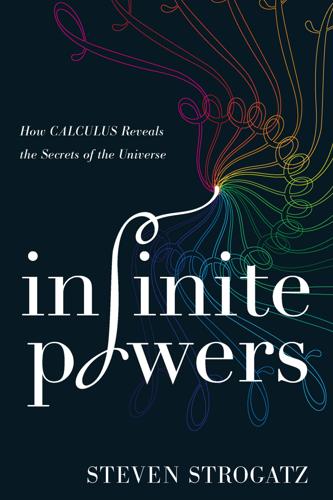
Infinite Powers: How Calculus Reveals the Secrets of the Universe
by
Steven Strogatz
Published 31 Mar 2019
,” Scientific American, https://www.scientificamerican.com/article/what-are-josephson-juncti/. 74 longitude problem: Sobel, Longitude. 75 global positioning system: Thompson, “Global Positioning System,” and https://www.gps.gov. 78 Johannes Kepler: For Kepler’s life and work, see Owen Gingerich, “Johannes Kepler,” in Gillispie, Complete Dictionary, vol. 7, online at https://www.encyclopedia.com/people/science-and-technology/astronomy-biographies/johannes-kepler#kjen14, with amendments by J. R. Voelkel in vol. 22. See also Kline, Mathematics in Western Culture, 110–25; Edwards, The Historical Development, 99–103; Asimov, Asimov’s Biographical Encyclopedia, 96–99; Simmons, Calculus Gems, 69–83; and Burton, History of Mathematics, 355–60. 78 “criminally inclined”: Quoted in Gingerich, “Johannes Kepler,” https://www.encyclopedia.com/people/science-and-technology/astronomy-biographies/johannes-kepler#kjen14. 78 “bad-tempered”: Ibid. 78 “such a superior and magnificent mind”: Ibid. 79 “Day and night I was consumed by the computing”: Ibid. 80 “God is being celebrated in astronomy”: Ibid. 81 “this tedious procedure”: Kepler in Astronomia Nova, quoted by Owen Gingerich, The Book Nobody Read: Chasing the Revolutions of Nicolaus Copernicus (New York: Penguin, 2005), 48. 84 “sacred frenzy”: Quoted in Gingerich, “Johannes Kepler,” https://www.encyclopedia.com/people/science-and-technology/astronomy-biographies/johannes-kepler#kjen14. 85 “My dear Kepler, I wish we could laugh”: Quoted in Martínez, Science Secrets, 34. 86 “Johannes Kepler became enamored”: Koestler, The Sleepwalkers, 33. 4.
…
See also Kline, Mathematics in Western Culture, 110–25; Edwards, The Historical Development, 99–103; Asimov, Asimov’s Biographical Encyclopedia, 96–99; Simmons, Calculus Gems, 69–83; and Burton, History of Mathematics, 355–60. 78 “criminally inclined”: Quoted in Gingerich, “Johannes Kepler,” https://www.encyclopedia.com/people/science-and-technology/astronomy-biographies/johannes-kepler#kjen14. 78 “bad-tempered”: Ibid. 78 “such a superior and magnificent mind”: Ibid. 79 “Day and night I was consumed by the computing”: Ibid. 80 “God is being celebrated in astronomy”: Ibid. 81 “this tedious procedure”: Kepler in Astronomia Nova, quoted by Owen Gingerich, The Book Nobody Read: Chasing the Revolutions of Nicolaus Copernicus (New York: Penguin, 2005), 48. 84 “sacred frenzy”: Quoted in Gingerich, “Johannes Kepler,” https://www.encyclopedia.com/people/science-and-technology/astronomy-biographies/johannes-kepler#kjen14. 85 “My dear Kepler, I wish we could laugh”: Quoted in Martínez, Science Secrets, 34. 86 “Johannes Kepler became enamored”: Koestler, The Sleepwalkers, 33. 4.
…
This unexpected link between music (the harmony of this world) and numbers (the harmony of an imagined world) led the Pythagoreans to the mystical belief that all is number. They are said to have believed that even the planets in their orbits made music, the music of the spheres. Ever since then, many of history’s greatest mathematicians and scientists have come down with cases of Pythagorean fever. The astronomer Johannes Kepler had it bad. So did the physicist Paul Dirac. As we’ll see, it drove them to seek, and to dream, and to long for the harmonies of the universe. In the end it pushed them to make their own discoveries that changed the world. The Infinity Principle To help you understand where we’re headed, let me say a few words about what calculus is, what it wants (metaphorically speaking), and what distinguishes it from the rest of mathematics.
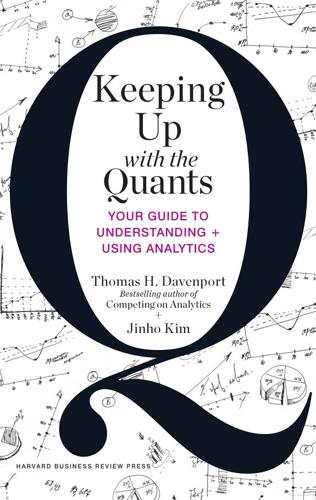
Keeping Up With the Quants: Your Guide to Understanding and Using Analytics
by
Thomas H. Davenport
and
Jinho Kim
Published 10 Jun 2013
“Tycho Brahe,” Wikipedia, http://en.wikipedia.org/wiki/Tycho_Brahe; Michael Fowler, “Tycho Brahe,” http://galileoandeinstein.physics.virginia.edu/1995/ lectures/tychob.html; Arthur Koestler, The Watershed: A Biography of Johannes Kepler (Doubleday, 1960); “Johannes Kepler,” Wikipedia, http://en.wikipedia.org/wiki/ Johannes_Kepler; “Johannes Kepler: The Laws of Planetary Motion,” http://csep10 .phys.utk.edu/astr161/lect/history/kepler.html; Michael Fowler, “Tycho Brahe and Johannes Kepler,” http://galileoandeinstein.physics.virginia.edu/lectures/tycho.htm; Michael Fowler, “Johannes Kepler,” http://galileoandeinstein.physics.virginia.edu/ 1995/lectures/kepler.html; “Johannes Kepler,” Encyclopædia Britannica Online Academic Edition, http://www.britannica.com/EBchecked/topic/315225/Johannes-Kepler; Ann Lamont, “Johannes Kepler: Outstanding Scientist and Committed Christian,” 1:1, http://www.answersingenesis.org/creation/v15/i1/kepler.asp, December 1, 1992. 12.
…
The use of secondary data saves time that would otherwise be spent redundantly collecting the same data. Common sources of secondary data include censuses, surveys, organizational records, and so on. The world is full of it these days, and it’s just waiting to be analyzed. In some cases, secondary data has been used to create very important results. Take, for example, the work of astronomer Johannes Kepler. Although born to a poor family under adverse circumstances, Kepler was lucky enough to acquire very precise secondary data, carefully amassed for several decades, on the motions of objects in the celestial sphere. With his luck and superior mathematical talent, Kepler solved the mystery of the planets.
…
“Tycho Brahe,” Wikipedia, http://en.wikipedia.org/wiki/Tycho_Brahe; Michael Fowler, “Tycho Brahe,” http://galileoandeinstein.physics.virginia.edu/1995/ lectures/tychob.html; Arthur Koestler, The Watershed: A Biography of Johannes Kepler (Doubleday, 1960); “Johannes Kepler,” Wikipedia, http://en.wikipedia.org/wiki/ Johannes_Kepler; “Johannes Kepler: The Laws of Planetary Motion,” http://csep10 .phys.utk.edu/astr161/lect/history/kepler.html; Michael Fowler, “Tycho Brahe and Johannes Kepler,” http://galileoandeinstein.physics.virginia.edu/lectures/tycho.htm; Michael Fowler, “Johannes Kepler,” http://galileoandeinstein.physics.virginia.edu/ 1995/lectures/kepler.html; “Johannes Kepler,” Encyclopædia Britannica Online Academic Edition, http://www.britannica.com/EBchecked/topic/315225/Johannes-Kepler; Ann Lamont, “Johannes Kepler: Outstanding Scientist and Committed Christian,” 1:1, http://www.answersingenesis.org/creation/v15/i1/kepler.asp, December 1, 1992. 12. Bill Franks, “Why Nobody Is Actually Analyzing Unstructured Data,” International Institute for Analytics blog post, March 9, 2012, http://iianalytics.com/ 2012/03/why-nobody-is-actually-analyzing-unstructured-data/. 13. Peter Passell, “Wine Equation Puts Some Noses Out of Joint,” New York Times, March 4, 1990. 14. “Alternative Rich List,” FT.com, September 22, 2006. 15. Fischer Black and Myron Scholes, “The Pricing of Options and Corporate Liabilities,” Journal of Political Economy 81, no. 3 (1973): 637–654; “Black–Scholes,” Wikipedia, http://en.wikipedia.org/wiki/Black–Scholes; “The Prize in Economics 1997,” press release, Nobelprize.org, http://nobelprize.org/nobel_prizes/economics/ laureates/1997/press.html. 16.
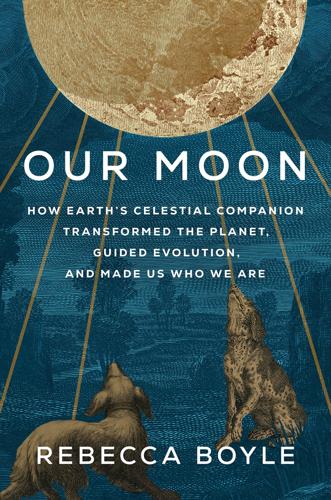
Our Moon: How Earth's Celestial Companion Transformed the Planet, Guided Evolution, and Made Us Who We Are
by
Rebecca Boyle
Published 16 Jan 2024
With each rising tide, cracks in the Moon would leak molten material, which would congeal and form a solid circular ridge. All of these are wrong. And in the fall of 1918, now home from the war, Wegener set out to prove it. As historian Mott Greene describes him, Wegener knew more about selenography than most geologists, and knew more about geology than any selenographer.9 Like Johannes Kepler, he stood above the field of research that he’d carefully surveyed, and incorporated other scientists’ findings into his own new, unorthodox theories. Wegener owned a copy of Kepler’s fictional lunar opus, called Somnium, and carefully annotated the sections where his fellow German astronomer had described craters as the result of impacts.
…
Astronomers are still not certain they’ve really seen exomoons, which is just to say a moon that orbits a planet that is not in this solar system. Extrasolar planets are abundant, which is one of those bits of information, now common knowledge, that was unthinkable not so long ago. The Kepler Space Telescope, named for Johannes Kepler, found worlds aplenty when it stared at a small patch of sky between 2009 and 2018. The telescope’s namesake could never have imagined it, but astronomers now think practically every star in the sky harbors planets. If exoplanets are plentiful, and moons in this solar system are plentiful, then it’s not a giant leap to imagine that exomoons are plentiful, too.
…
Others would carry this scientific method forward, make their own observations, and ultimately surpass Aristotle’s neatly packaged cosmos. The concept of seeking astronomical knowledge for its own sake would power the minds of the most consequential scientists to follow, twenty centuries later: Nicolaus Copernicus, Johannes Kepler, and Galileo Galilei. But not yet. TO FOLLOW IN the footsteps of Anaxagoras and Aristotle, the makers of the Western scientific tradition first had to shake off these thinkers’ most egregious mistakes. Both Anaxagoras and Aristotle believed, mistakenly, that the Sun revolved around Earth. They probably believed this because of the Moon; it makes a lot of sense, especially if you’re Mr.
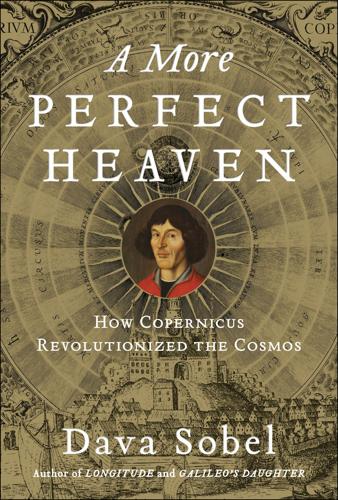
More Perfect Heaven: How Copernicus Revolutionised the Cosmos
by
Dava Sobel
Published 1 Sep 2011
Chapter 10 Epitome of Copernican Astronomy I deem it my duty and task to advocate outwardly also, with all the powers of my intellect, the Copernican theory, which I in my innermost have recognized as true, and whose loveliness fills me with unbelievable rapture when I contemplate it. —JOHANNES KEPLER, Epitome of Copernican Astronomy, 1617–21 Content with thePrutenic Tables, European astronomers took Copernicus at Osiander’s cautious word for the remainder of the sixteenth century—with two monumental exceptions. Between them, the flamboyant Tycho Brahe and the studious, passionately reverent Johannes Kepler carried Copernicus’s work to completion. The Danish Tycho was literally star-struck in 1559, during his thirteenth summer, when a lunar eclipse illuminated the mathematics he was learning at a Lutheran university in Copenhagen.
…
No; rather, he wanted to warn people of their own mutability, while the Earth, home of the human race, remains always the same, the motion of the Sun perpetually returns to the same place, the wind blows in a circle and returns to its starting point, rivers flow from their sources into the sea, and from the sea return to the sources, and finally, as these people perish, others are born. Life’s tale is ever the same; there is nothing new under the Sun. You do not hear any physical dogma here. The message is a moral one, concerning something self-evident and seen by all eyes but seldom pondered. Solomon therefore urges us to ponder. —JOHANNES KEPLER, Astronomia nova, 1609 (TRANSLATED FROM THE LATIN BY WILLIAM H. DONAHUE) Chapter 7 The First Account It is also clearer than sunlight that the sphere which carries the Earth is rightly called the Great Sphere. If generals have received the surname “Great” on account of successful exploits in war or conquests of peoples, surely this circle deserved to have that august name applied to it.
…
Although Catholic, Rudolf acted liberally toward Lutherans in general, and smiled with special warmth on one so skilled in the art of astrology as Tycho Brahe. The emperor gave him his choice of castles and put him to work prognosticating affairs of state. The move to Prague also put Tycho in proximity to Johannes Kepler, thereby facilitating their fateful collaboration. Kepler, not yet well known to most astronomers and living in modest circumstances, could never have afforded a visit to Tycho’s island. He welcomed Tycho’s presence in Bohemia as an act of God. By further provision of Providence, Kepler found Tycho’s chief assistant engaged in Mars studies when he joined the team at Benatky Castle in the spring of 1600.
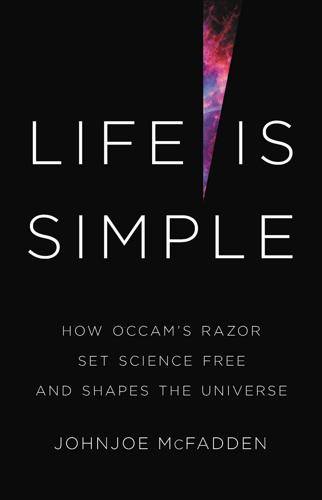
Life Is Simple: How Occam's Razor Set Science Free and Shapes the Universe
by
Johnjoe McFadden
Published 27 Sep 2021
A., The Harvest of Medieval Theology: Gabriel Biel and Late Medieval Nominalism (Harvard University Press, 1963). 4. Methuen, C., Kepler’s Tübingen: Stimulus to a Theological Mathematics (Ashgate, 1998). 5. Field, J. V., ‘A Lutheran Astrologer: Johannes Kepler’, Archive for History of Exact Sciences, 31 (1984). 6. Spielvogel, J. J., Western Civilization, 467 (Cengage Learning, 2014). 7. Bialas, V., Johannes Kepler, vol. 566 (CH Beck, 2004). 8. Chandrasekhar, S., The Pursuit of Science, 410–20 (Minerva, 1984). 9. Kepler, J., The Harmony of the World, vol. 209, 302 (American Philosophical Society, 1997). 10. Poincaré, H., and Maitland, F., Science and Method (Courier Corporation, 2003). 11.
…
He concludes with the assessment that ‘So far as hypotheses are concerned, let no one expect anything certain from astronomy, which cannot furnish it, lest he accept as truth ideas conceived for another purpose, and depart from this study a greater fool than when he entered it. Farewell.’ A copy of the first print run of the book was rushed to Canon Copernicus’s bedside. He died the same day of 24 May 1543, his death, it is said, hastened on reading the infamous preface. For many years its author remained unknown. It was Johannes Kepler who later uncovered the truth that it had been written by Andreas Osiander. The publication of On the Revolutions of the Heavenly Orbs is often considered to be a landmark in the history of science, even marking the birth of modern science. If that is true, hardly anyone noticed. The first edition of 400 copies failed to sell out and it was more than twenty years before a second edition was printed.
…
Not content with astronomy, he also built his own laboratory utilising the services of local glassworkers to construct a variety of vessels with which to pursue the secretive art of alchemy. The heavenly mystic The year 1571 was an auspicious one in astronomy as it marked not only the building of Brahe’s observatory but also the birth of the astronomer who would finally make sense of the celestial confusion. Johannes Kepler was born (when Brahe was twenty-five) in the small town of Weil der Stadt in Swabia, south-west Germany. His father was a mercenary soldier and his mother the daughter of an innkeeper. In his brutally honest autobiographical account Kepler describes his childhood with his mercenary father: ‘a man inflexible, quarrelsome, and doomed to a bad end’.
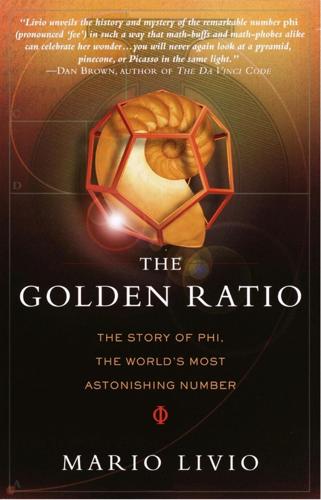
The Golden Ratio: The Story of Phi, the World's Most Astonishing Number
by
Mario Livio
Published 23 Sep 2003
Concepts like the “Divine Proportion” built, on one hand, a bridge between mathematics and the workings of the cosmos and, on the other, a relation among physics, theology, and metaphysics. The person who, in his ideas and works, exemplifies more than any other this fascinating blending of mathematics and mysticism is Johannes Kepler. MYSTERIUM COSMOGRAPHICUM Johannes Kepler is best remembered as an outstanding astronomer responsible (among other things) for the three laws of planetary motion that bear his name. But Kepler was also a talented mathematician, a speculative metaphysician, and a prolific author. Born at a time of great political upheaval and religious chaos, Kepler's education, life, and thinking were critically shaped by the events around him.
…
I will use the names Golden Ratio, Golden Section, Golden Number, phi, and also the symbol φ interchangeably throughout, because these are the names most frequently encountered in the recreational mathematics literature. Some of the greatest mathematical minds of all ages, from Pythagoras and Euclid in ancient Greece, through the medieval Italian mathematician Leonardo of Pisa and the Renaissance astronomer Johannes Kepler, to present-day scientific figures such as Oxford physicist Roger Penrose, have spent endless hours over this simple ratio and its properties. But the fascination with the Golden Ratio is not confined just to mathematicians. Biologists, artists, musicians, historians, architects, psychologists, and even mystics have pondered and debated the basis of its ubiquity and appeal.
…
After enumerating more of Pythagoras' exquisite qualities, Porphyry continues: “Pythagoras affirmed that the Nine Muses were constituted by the sounds made by the seven planets, the sphere of the fixed stars, and that which is opposed to our earth, called the ‘counter-earth’ (the latter, according to the Pythagorean theory of the universe, revolved in opposition to Earth, around a central fire). The concept of the “harmony of the spheres” was elaborated upon again, more than twenty centuries later, by the famous astronomer Johannes Kepler (1571–1630). Having witnessed in his own life much agony and the horrors of war, Kepler concluded that Earth really created two notes, mi for misery (“miseria” in Latin) and fa for famine (lames in Latin). In Kepler s words: “the Earth sings MI FA MI, so that even from the syllable you may guess that in this home of ours Misery and Famine hold sway.”
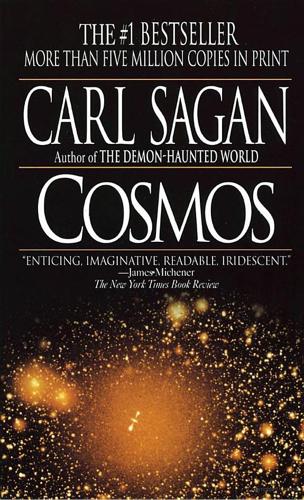
Cosmos
by
Carl Sagan
Published 1 Jan 1980
If a marker were to be erected today, it might read, in homage to his scientific courage: “He preferred the hard truth to his dearest illusions.” Johannes Kepler believed that there would one day be “celestial ships with sails adapted to the winds of heaven” navigating the sky, filled with explorers “who would not fear the vastness” of space. And today those explorers, human and robot, employ as unerring guides on their voyages through the vastness of space the three laws of planetary motion that Kepler uncovered during a lifetime of personal travail and ecstatic discovery. The lifelong quest of Johannes Kepler, to understand the motions of the planets, to seek a harmony in the heavens, culminated thirty-six years after his death, in the work of Isaac Newton.
…
This occurs, for example, in the introduction to cosmic objects in Chapter 1, which are examined in greater detail later on; or in the discussion of mutations, enzymes and nucleic acids in Chapter 2. In a few cases, concepts are presented out of historical order. For example, the ideas of the ancient Greek scientists are presented in Chapter 7, well after the discussion of Johannes Kepler in Chapter 3. But I believe an appreciation of the Greeks can best be provided after we see what they barely missed achieving. Because science is inseparable from the rest of the human endeavor, it cannot be discussed without making contact, sometimes glancing, sometimes head-on, with a number of social, political, religious and philosophical issues.
…
*Or is you like to measure things in miles, the distance between Alexandria and Syene is about 500 miles, and 500 miles × 50 = 25,000 miles. *So called because they can be produced by slicing through a cone at various angles. Eighteen centuries later, the writings of Apellecios on comic sections would be employed by Johannes Kepler in understanding for the first time the movement of the planets. CHAPTER II ONE VOICE IN THE COSMIC FUGUE Probably all the organic beings which have ever lived on this earth have descended from some one primordial form, into which life was first breathed.… There is grandeur in this view of life … that, whilst this planet has gone cycling on according to the fixed law of gravity, from so simple a beginning endless forms most beautiful and most wonderful have been, and are being, evolved.
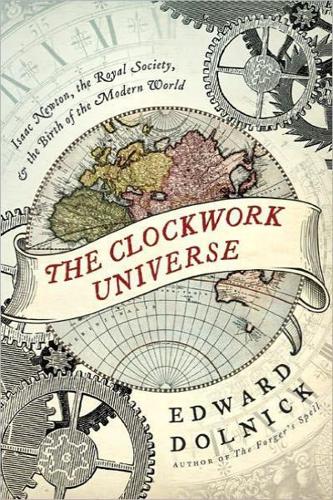
The Clockwork Universe: Saac Newto, Royal Society, and the Birth of the Modern WorldI
by
Edward Dolnick
Published 8 Feb 2011
(Each angle of a hexagon is 120 degrees, for instance, so three or more hexagons cannot meet at one vertex.) 153 If you needed dice: Marcus du Sautoy, Symmetry (New York: Harper, 2008), p. 5. 154 He burst into tears: Caspar, Kepler, p. 63. 154 “Now I no longer regretted”: Koestler, The Sleepwalkers, p. 251. 155 “For a long time I wanted”: Owen Gingerich, “Johannes Kepler and the New Astronomy,” available at http://adsabs.harvard.edu/full/1972QJRAS..13..346G. 155 He happily devoted: Koestler, The Sleepwalkers, p. 269. 155 “No one,” he boasted: Caspar, Kepler, p. 71. 155 “too pretty not to be true”: James Watson, The Double Helix (New York: Touchstone, 2001), p. 204. 156 “Never in history”: Gingerich, “Johannes Kepler and the New Astronomy,” p. 350. CHAPTER 26. WALRUS WITH A GOLDEN NOSE 157 “Would that God deliver me”: Rossi, The Birth of Modern Science, p. 70. 158 “the heavenly motions are nothing but”: Koestler, The Sleepwalkers, p. 392. 158fn Not by the human ear: Rattansi, “Newton and the Wisdom of the Ancients,” p. 189. 158fn The first person to refer: Curtis Wilson, “Kepler’s Laws, So-Called,” HAD News (newsletter of the Historical Astronomy Division of the American Astronomical Society), no. 31, May 1994. 158 “My brain gets tired”: Giorgio de Santillana, The Crime of Galileo, p. 106fn. 159 In his student days: Ferguson, Tycho and Kepler, pp. 31–32. 160 had cost a ton of gold: Gingerich, “Johannes Kepler and the New Astronomy,” p. 350. 160 “any single instrument cost more”: Koestler, The Sleepwalkers, p. 278. 160 “I was in possession”: Ibid., p. 345.
…
“The certainty that [a mathematician’s] creations will endure,” wrote Rota, “renews his confidence as no other pursuit.” It is heady, seductive business. Perhaps this accounts for the eagerness of so many seventeenth-century intellectuals to look past the wars and epidemics all around them and instead to focus on the quest for perfect, abstract order. Johannes Kepler, the great astronomer, barely escaped the religious battles later dubbed the Thirty Years’ War. One close colleague was drawn and quartered and then had his tongue cut out. For a decade his head, impaled on a pike, stood on public display next to the rotting skulls of other “traitors.” Kepler came from a village in Germany where dozens of women had been burned as witches during his lifetime.
…
Chapter Twenty-Four The Secret Plan When Newton declared that he stood on the shoulders of giants, he was at least partly sincere. He did genuinely admire some of his fellow scientists, particularly those who’d had the good judgment to die before he came along. One of the great predecessors he had in mind was the astronomer Johannes Kepler. A contemporary of Galileo, Kepler was a genius and a mystic whose faith in God and faith in mathematics had fused into an inseparable unit. Kepler was both astronomer and astrologer, though he never sorted out just how much the heavens influenced human affairs. “In what manner does the countenance of the sky at the moment of a man’s birth determine his character?”
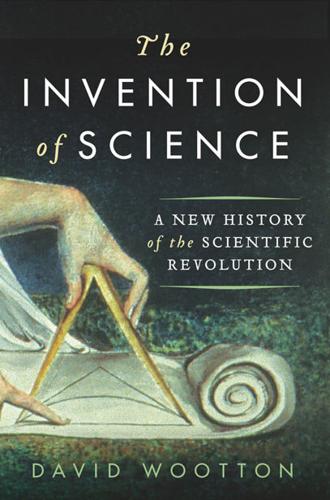
The Invention of Science: A New History of the Scientific Revolution
by
David Wootton
Published 7 Dec 2015
Amerigo Vespucci) 121 Muslims 66, 113 see also Islam Mysterium cosmographicum (Johannes Kepler) 213 Mystery of Jesuitisme (Blaise Pascal) 293 Napier, John 90, 94, 416 Napoleon Bonaparte 149n, 480, 549 Natural and Political Observations (John Graunt) 261 Natural History (Pliny) Earth as a dot 230n flood stories 113 Pliny’s reputation falls 26 Polydore Vergil and 67 Ziegler’s commentary 128 Natural History (Gilbert White) 12 natural knowledge 26 see also knowledge Natural Theology (William Paley) 419 Nature and Nature’s Laws (Marie Boas Hall) 367 navigation 207 see also discovery Needham, Joseph 105, 502 Neolithic Revolution 3, 4, 14, 476 neo-Platonism 235, 321, 516 Neptune 89, 99 Netherlands 214, 362–3 see also Dutch networks 340–1, 348 New . . . (as title for various publications) 36 New Almagest (Giovanni Alberti Riccioli) 224, 227, 305 New Astronomy (Johannes Kepler) 24, 265, 305 New Atlantis (Francis Bacon) 103, 341 New Digester, The (Denis Papin) 504 New Discoveries (Johannes Stradanus) 56 New Experiments (Robert Boyle) 294, 337, 344, 392, 516 New Science (Tartaglia) 203, 204 New Star (Tycho Brahe) 14 New Star (Johannes Kepler) 263, 264, 265 New Theory of the Earth, The (William Whiston) 396, 467, 474 New Treatise of Natural Philosophy (Robert Midgeley) 279 New Treatise Proving a Multiplicity of Worlds, A (Pierre Borel) 231 New World see America New World, The (Amerigo Vespucci) 255 New Zealand 120n Newcomen, Thomas 20, 490, 499–508, 538 Newe Attractive, The (Robert Norman) 80 Newton, Isaac 380–5 see also Opticks; Principia alchemist, an 206, 353, 355, 358, 359 alternative argument to faith, an 471 Arianism 379 Aristotle and 51 as part of contemporary libraries 11 at Cambridge 15 Bentley and 467 Blake and 448 calculus 564n clergymen interested in 473 corpuscular philosophy and 447 Diderot and 53 Earth’s shape 367 Einstein and 568–9 eventual triumph of 228 experimentum crucis 352n, 381, 383 ‘fact’ – use of term avoided 417 fact and theory 418 French expeditions validate 524 gravity theory 393, 466, 516, 517 see also gravity hunger for experimental knowledge 357 hypothesis, on 389, 390, 551 ideas triumph 5 inertia 372 Kepler and 24n Leibniz, dispute with 93, 488–9, 498 literary style and 265 making machines 319 physics as modern science 16 Pope’s epitaph 361 prism experiments 311 professorship at Cambridge 32 ‘revolution’, the word 33 Richard Davies on 34n Royal Society 396 Scientific Revolution ends 54 shape of globe and 481 space and time 105 standing on shoulders of giants quote 341 substance and property 397 temperature scales 235 theory and observation 394 theory of light 522 three laws 376 two types of knowledge 321 was a scientist 159 writing the Principia 108–9 Niceron, Father 173, 174 Nicholas of Cusa 147–8, 151, 217, 525 Nicot, Jean 286 Noah 113 Nobel Prize 103 ‘Nobody Invented the Scientific Method’ (Thony Christie) 529n nominalism 322, 369–70 Norman, Robert 80, 81, 329–30, 331, 387 North, Roger 494–5 North Pole 235 North West passage 525, 527 Northumberland, Earl of 302 nostalgia 63 Notizie istoriche (Vincenzo Antinori) 310 Nouvelle théorie du centre d’oscillation (Johann Bernoulli) 396 Nouvelles de la République des Lettres (Pierre Bayle) 433 Nova de universis philosophia (Francesco Patrizi) 25 Novum organum (Francis Bacon) ii, 312n, 371n Objective Knowledge (Karl Popper) 249, 556 obligation 368 observation 294, 313, 394 occasionalism 378 oceans 113 Odyssey, The (Homer) 6, 10 Of Libertie and Necessitie (Thomas Hobbes) 288 ‘Of Miracles’ (David Hume) 427, 465 Of Natural Magic (Giambattista della Porta) 268, 270–2 Of the Popular Errors of Italy (Girolamo Mercurii) 304 Of the Populousness of Ancient Nations (David Hume) 259 Of the Principles and Duties of Natural Religion (John Wilkins) 418, 443 Of the Proficiency and Advancement of Learning (Francis Bacon) 83 Old Regime and the Revolution, The (Alexis de Tocqueville) 20n Oldenburg, Henry edits Newton 383, 384, 396 intellectual property, concept of 337 interest in alchemy 357 introduction to Wallis on tides 396 network of corresponders 341 Royal Society office holder 296 O’Meara, Edmund 74n ‘On Aerial Navigation’ (Sir George Cayley) 552 On All Sorts of Triangles (Regiomontanus) 187 On Certainty (Ludwig Wittgenstein) 43n, 46–8, 577, 580 On Discovery (Polydore Vergil) 65, 93, 176 On Divine Proportion (Luca Pacioli) 173, 176 On Learned Ignorance (Nicholas of Cusa) 147 On Motion (Galileo Galilei) 199 On Painting (Leon Battista Alberti) 167, 171 On Perspective for Painting (Piero della Francesca) 176 On Poetry (Jonathan Swift) 239n On the Demon-Mania of Witches (Jean Bodin) 533 On the Heavens (Aristotle) 252 On the History of Plants (Leonhart Fuchs) 186 On the Magnet (William Gilbert) beginning of experimental science 273 ‘experiment’, use of word 347 Galileo reads 92n, 318 huge impact of 331 influence on Kepler 485, 517 philosophy of 328 prefatory letter 330 vocabulary used 315 On the Nature of Things (Lucretius) 8n, 365, 372, 558 On the Nothingness of a Fart (Girolamo Cardano) 9 On the Revolutions of the Heavenly Spheres (Nicolaus Copernicus) 136–40 annotations 306 anonymous introduction 388 Bruno on the preface to 149 Copernicus’s diagram 153 delayed publication 108 Digges’ version of Book I 154 first hundred years of publication 19 marginal comments by readers 145 mathematics, on 205 not the beginning of modern science 159 quotation from 55 terraqueous globe 142 Tycho Brahe’s work and 194 On the Six-cornered Snowflake (Johannes Kepler) 212 On the Theory of Coinage (Nicolaus Copernicus) 206 On the Universe (William Gilbert) 158 ‘On Understanding Science’ (James B.
…
ix Donne would have learnt from Hill about the possibility of life on other planets, and of planets circling other stars; he would also have learnt that these strange ideas derived from Giordano Bruno.17 If he read Galileo’s Starry Messenger, with its account of the moon as having mountains and valleys, Donne would surely have responded exactly as the great German astronomer Johannes Kepler did that spring when he read one of the first copies to arrive in Germany – he saw a remarkable vindication of Bruno’s perverse theory that there might be life elsewhere in the universe. If Donne read Kepler’s Conversation he would have found the link with Bruno spelled out.18 Jokes about farts were now beside the point.
…
A decade before Galileo’s telescopic discoveries, William Gilbert, the first great experimental scientist of the new age, had acknowledged: ‘Sometimes therefore we use new and unusual words, not that by means of foolish veils of vocabularies we should cover over the facts [rebus] with shades and mists (as Alchemists are wont to do) but that hidden things which have no name, never having been hitherto perceived, may be plainly and correctly enunciated.’lvii 84 His book begins with a glossary to help the reader make sense of these new words. Then a few months after Galileo discovered what we call the moons of Jupiter (Galileo does not call them moons, but first stars and then planets), Johannes Kepler invented a new word for these new objects: they were ‘satellites’.lviii Thus historians who take language seriously need to search out the emergence of new languages, which must represent transformations in what people can think and how they can conceptualize their world.lix It is important here to distinguish this claim from the argument with which this chapter started.
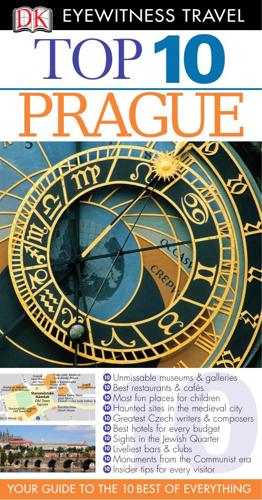
Top 10 Prague
by
Schwinke, Theodore.
£ Rabbi Loew’s Grave The burial site of one of Prague’s major Jewish figures, Rabbi Jehuda Loew ben Bezalel (1520– 1609), and creator of the Golem (see p52). Gans’s $ David Tombstone A pupil of Rabbi Loew, Gans (1541–1613) was the author of a seminal two-volume history of the Jewish people. He was also an accomplished astronomer during the time of Johannes Kepler (see p35). His headstone (right) is marked with the Star of David, after his name and his faith. Synagogue % Klausen Mordechai Maisel also commissioned the building of the Klausen Synagogue (left) on the cemetery’s northern edge. It now houses exhibitions on Jewish festivals and traditions. Sign up for DK’s email newsletter on traveldk.com Oppenheim’s ^ Rabbi Grave 8 5 3 2 Entrance 6 9 7 0 1 4 Plan of the Old Jewish Cemetery Graves ( Zemach Next to the Pinkas Prague’s Top 10 Rabbi David Oppenheim (left) was the first chief rabbi of Moravia, and later chief rabbi of Bohemia and finally of Prague, where he died in 1736.
…
The resulting animosity between Protestant Czechs and German Catholics would rage for centuries. of Rudolph II $ Reign The melancholy emperor (1576–1611) was not much good as a statesman and was under threat from his ambitious brother, Matthias, but he was a liberal benefactor of the arts and sciences. Among his achievements were the support of Johannes Kepler’s studies of planetary motion. He also promoted religious freedom. of White Mountain % Battle The Protestant nobility and the emperor continued to provoke each other until hostilities broke into open war. Imperial forces devastated the Czechs in the first battle of the Thirty Years’ War in 1620.
…
de Brahe % Tycho Astronomer at Rudolph’s court, Brahe (1546–1601) suffered a burst bladder when he refused to leave the emperor’s side at a banquet. Kelley and ^ Edward John Dee The English charlatans gained Rudolph II’s trust by converting lead into gold, but were more interested in necromancy. & Johannes Kepler The German astronomer (1571–1630) pioneered studies of planetary motion. von * Albrecht Wallenstein Leader of the Catholics during the Thirty Years’ War, Wallenstein (1583–1634) built a vast palace in Prague (see p86). ( Franz Kafka Prague’s best-known author (1883–1924) was largely unpublished in his lifetime (see p44). ) Emil Zátopek “The Locomotive” (1922– 2000) won three long-distance gold medals at the 1952 Olympic Games.

Range: Why Generalists Triumph in a Specialized World
by
David Epstein
Published 1 Mar 2019
CHAPTER 5: THINKING OUTSIDE EXPERIENCE Giordano Bruno: A. A. Martinez, “Giordano Bruno and the Heresy of Many Worlds,” Annals of Science 73, no. 4 (2016): 345–74. Johannes Kepler inherited: Sources that give excellent background on the worldviews that Kepler inherited, and his transformative analogies, are: D. Gentner et al., “Analogical Reasoning and Conceptual Change: A Case Study of Johannes Kepler,” Journal of the Learning Sciences 6, no. 1 (1997): 3–40; D. Gentner, “Analogy in Scientific Discovery: The Case of Johannes Kepler,” in Model-Based Reasoning: Science, Technology, Values, ed. L. Magnani and N. J. Nersessian (New York: Kluwer Academic/Plenum Publishers, 2002), 21–39; D.
…
The spheres were invisible from Earth and interlocked, like the gears of a clock, to produce collective motion at a constant speed for all eternity. Plato and Aristotle had laid the foundation for the accepted model, and it dominated for two thousand years. That clockwork universe was the one German astronomer Johannes Kepler inherited. He accepted it, at first. When the constellation Cassiopeia suddenly gained a new star (it was actually a supernova, the bright explosion at the end of a star’s life), Kepler recognized that the idea of the unchanging heavens could not be correct. A few years later, a comet tracked across the European sky.
…
Nersessian (New York: Kluwer Academic/Plenum Publishers, 2002), 21–39; D. Gentner et al., “Analogy and Creativity in the Works of Johannes Kepler,” in Creative Thought: An Investigation of Conceptual Structures and Processes, ed. T. B. Ward et al. (Washington, DC: American Psychological Association, 1997). maybe the planets were like magnets: D. Gentner and A. B. Markman, “Structure Mapping in Analogy and Similarity,” American Psychologist 52, no. 1 (1997): 45–56. Also, Kepler read a new publication on magnetism: A. Caswell, “Lectures on Astronomy,” Smithsonian Lectures on Astronomy, 1858 (British Museum collection). “the moon’s dominion over the waters”: J.

Empire of the Sum: The Rise and Reign of the Pocket Calculator
by
Keith Houston
Published 22 Aug 2023
Napier failed to manufacture this mythic substance, capable of transforming lead into gold, prolonging life, curing illness, and sundry other miracles, but then no one else succeeded either.27 In Napier’s time, alchemy went hand in hand with astrology as part of what would today be called the natural sciences.28 Nowadays, astrology is synonymous with TV mystics and tabloid horoscopes, but for Napier and his contemporaries, the study of celestial bodies and their influence on the natural world was as close to a scientific pursuit as had ever existed. Weather, tides, health, magnetism, war, fate—these and other phenomena were thought to be coupled to the motion of the heavens, which made astrology a worthy endeavor.29 Luminaries such as Galileo Galilei, Johannes Kepler, Tycho Brahe, and Elizabeth I’s court astronomer, John Dee, all carried out astrological predictions at one time or another. Even when astrology came under attack, as it increasingly did throughout Napier’s lifetime, critics were more concerned that horoscopes might be correct and reveal unsavory truths, rather than with the validity of astrology itself.30 The counterintuitive thing about astrology is that it is hard.
…
Logarithmania# began in England with Henry Briggs, a renowned professor of geometry in London, who came to Merchiston the year after Napier published Descriptio to pay homage to the Scottish laird.43 (Napier knew Briggs by reputation, and the almost-certainly-apocryphal story goes that, on meeting, the two scientists gazed admiringly at each other for a quarter of an hour before they thought to break the silence.44) At Napier’s suggestion, Briggs calculated logarithms for the numbers 1 to 1,000, making them more usable in everyday multiplication, and published them in 1617 in a sixteen-page pamphlet.45 In 1624, the famed German astronomer Johannes Kepler published his own set of logarithms; a year later, the first French translation of Briggs’s pamphlet was printed in Paris; and by 1628, a Dutchman named Adrian Vlacq had published a table of logarithms for the numbers 1 to 101,000.46 Barely two decades after Napier first announced his discovery, logarithms were in use across the world.47 Gunnery, navigation, astronomy, surveying, tax collection, banking—if a profession needed to multiply or divide, it needed logarithms.
…
Schickard was something of a prodigy, having previously won a scholarship to the prestigious Tübinger Stift,† a seminary endowed by the Duke of Württemberg, and he would go on to acquire a master’s degree two years later.7 Schickard loafed around the university for another two years after that, until, in 1613, he found a position in a local church.8 At the university, Schickard had studied under Michael Mästlin, an eminent mathematician and astronomer, and it was during Schickard’s short career as a Lutheran minister that he made the acquaintance of another of Mästlin’s students. Two decades older than Schickard, Johannes Kepler had already spent a stint as the official mathematician to the Holy Roman Emperor and had published a number of groundbreaking texts on the mechanics of the solar system. By 1615, however, with Kepler’s imperial patron having been deposed some years earlier, the astronomer’s star was on the wane.
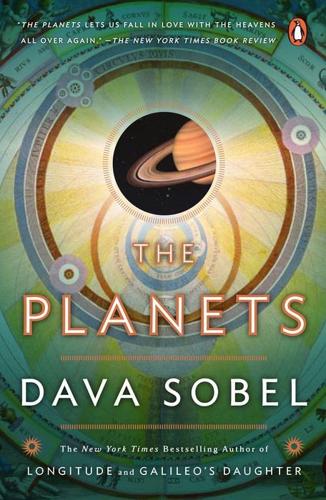
The Planets
by
Dava Sobel
Published 1 Jan 2005
The Danish perfectionist Tycho Brahe, born in 1546, just three years after Copernicus’s death, amassed a great number of Mercury observations—at least eighty-five—from his astronomical castle on the island of Hven, where he used instruments of his own design to measure the positions of each planet at accurately noted times. Inheriting this trove of information, Brahe’s German associate Johannes Kepler determined the correct orbits of all the wanderers in 1609—“even Mercury itself.” It later occurred to Kepler that although Mercury remained hard to see at the horizon, he might catch it high overhead on one of those special occasions, called a “transit,” when the planet must cross directly in front of the Sun.
…
*Two horoscopes drawn for Galileo during his lifetime (1564–1642) show his Sun near six degrees in Pisces. While his birth in Pisa on February 15 would seem to make him an Aquarian (since Aquarius is the Sun sign of those born January 20–February 18), the calendar reforms of 1582 moved his birthday to the 25th. *Johannes Kepler (1571–1630), court astronomer and astrologer in Prague, first referred to the “Medicean stars” as “Galilean satellites” in 1610. Simon Marius, a contemporary of Galileo and Kepler, gave the moons their enduring individual names by selecting four favored lovers of the mythological Zeus/Jupiter.
…
Giovanni Schiaparelli found what he called canali on Mars in 1877, eight years after the completion of the Suez Canal. Schiaparelli, trained as a hydraulic engineer, thought the straight lines no more the product of artificial intelligence than the English Channel, but later changed his mind. When Schiaparelli’s sight failed, Percival Lowell took over observations—and interpretations—of the canals. Johannes Kepler first imagined two moons for Mars in 1610, but the moons were not seen until August 1877, when Asaph Hall, working at the U.S. Naval Observatory in Washington, D.C., found them orbiting so close to the planet as to be nearly lost in its glare. He named them after two characters from Greek mythology, Phobos and Deimos, who were variously described by Homer as the sons of the war god Ares, or his attendants—or the horses that pulled his chariot.

Algorithms to Live By: The Computer Science of Human Decisions
by
Brian Christian
and
Tom Griffiths
Published 4 Apr 2016
Ultimately, what we can gain is not only a set of concrete takeaways for the problems around us, not only a new way to see the elegant structures behind even the hairiest human dilemmas, not only a recognition of the travails of humans and computers as deeply conjoined, but something even more profound: a new vocabulary for the world around us, and a chance to learn something truly new about ourselves. 1 Optimal Stopping When to Stop Looking Though all Christians start a wedding invitation by solemnly declaring their marriage is due to special Divine arrangement, I, as a philosopher, would like to talk in greater detail about this … —JOHANNES KEPLER If you prefer Mr. Martin to every other person; if you think him the most agreeable man you have ever been in company with, why should you hesitate? —JANE AUSTEN, EMMA It’s such a common phenomenon that college guidance counselors even have a slang term for it: the “turkey drop.” High-school sweethearts come home for Thanksgiving of their freshman year of college and, four days later, return to campus single.
…
“I didn’t know if she was Perfect (the assumptions of the model don’t allow me to determine that), but there was no doubt that she met the qualifications for this step of the algorithm. So I proposed,” he writes. “And she turned me down.” Mathematicians have been having trouble with love since at least the seventeenth century. The legendary astronomer Johannes Kepler is today perhaps best remembered for discovering that planetary orbits are elliptical and for being a crucial part of the “Copernican Revolution” that included Galileo and Newton and upended humanity’s sense of its place in the heavens. But Kepler had terrestrial concerns, too. After the death of his first wife in 1611, Kepler embarked on a long and arduous quest to remarry, ultimately courting a total of eleven women.
…
Computation is what a computer does, and at the time the only “computers” were people. we are irrational and error-prone: For example, see Gilovich, How We Know What Isn’t So; Ariely and Jones, Predictably Irrational; and Marcus, Kluge. 1. OPTIMAL STOPPING “Though all Christians start”: From Kepler’s letter to “an unknown nobleman” on October 23, 1613; see, e.g., Baumgardt, Johannes Kepler. such a common phenomenon: The turkey drop is mentioned, among many other places, in http://www.npr.org/templates/story/story.php?storyId=120913056 and http://jezebel.com/5862181/technology-cant-stop-the-turkey-drop. In any optimal stopping problem: For more about the mathematics of optimal stopping, Ferguson, Optimal Stopping and Applications, is a wonderful reference.
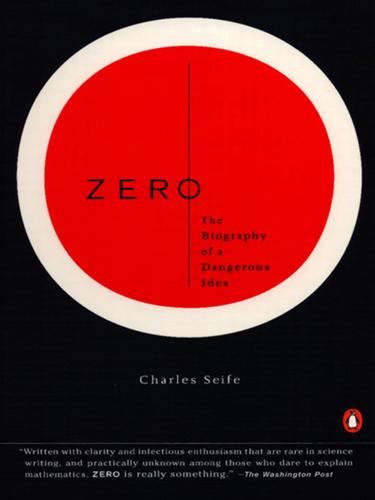
Zero: The Biography of a Dangerous Idea
by
Charles Seife
Published 31 Aug 2000
An attack on Aristotle was considered an attack upon the church. Despite the church’s Counter-Reformation, the new philosophy wasn’t easily destroyed. It got stronger as time went on, thanks to the investigations of Copernicus’s successors. In the beginning of the seventeenth century, another astrologer-monk, Johannes Kepler, refined Copernicus’s theory, making it even more accurate than the Ptolemaic system. Instead of moving in circles, the planets, including Earth, moved in ellipses around the sun. This explained the motion of the planets in the heavens with incredible accuracy; no longer could astronomers object that the heliocentric system was inferior to the geocentric one.
…
Something very bizarre was going on; nobody knew quite how to handle the infinite. Luckily the physical world made a little more sense than the mathematical one. Adding infinite things to each other seems to work out most of the time, so long as you are dealing with something in real life, like finding the volume of a barrel of wine. And 1612 was a banner year for wine. Johannes Kepler—the man who figured out that planets move in ellipses—spent that year gazing into wine barrels, since he realized that the methods that vintners and coopers used to estimate the size of barrels were extremely crude. To help the wine merchants out, Kepler chopped up the barrels—in his mind—into an infinite number of infinitely tiny pieces, and then added them back together again to yield their volumes.
…
When “parallel” lines converge at the vanishing point in a painting, observers are tricked into believing that the lines never meet. Squares on the floor become trapezoids in a painting; everything gets gently distorted, but it looks perfectly natural to the viewer. This is the property of an infinitely distant point—a zero at infinity. Johannes Kepler, the man who discovered that planets travel in ellipses, took this idea—the infinitely distant point—one step further. Ellipses have two centers, or foci; the more elongated the ellipse, the farther apart these foci are. And all ellipses have the same property: if you had a mirror in the shape of an ellipse and you placed a lightbulb at one focus, all the beams of light would converge at the other focus, no matter how stretched-out the ellipses are (Figure 29).

The Rough Guide to Prague
by
Humphreys, Rob
Bad-tempered, paranoid and probably insane, Rudolf had little interest in the affairs of state – instead, he holed up in the Hrad and indulged his own personal passions of alchemy, astrology and art. Thus, Rudolfine Prague played host to an impressive array of international artists, including the idiosyncratic Giuseppe Arcimboldo, whose surrealist portrait heads were composed entirely of objects. The astronomers Johannes Kepler and Tycho Brahe were summoned to Rudolf’s court to chart the planetary movements and assuage Rudolf’s superstitions, and the English alchemists Edward Kelley and John Dee were employed in order to discover the secret of the philosopher’s stone, the mythical substance that would transmute base metal into gold.
…
The originals, which Waldstein 70 Albrecht von Waldstein (known to the Czechs as Albrecht z Valdštejna, and to the English as Wallenstein – the name given to him by the German playwright Schiller in his tragic trilogy) was the most notorious warlord of the Thirty Years’ War. If the imperial astrologer Johannes Kepler is to be believed, this is all because he was born at four in the afternoon on September 14, 1583. According to Kepler’s horoscope, Waldstein was destined to be greedy, deceitful, unloved and unloving. Sure enough, at an early age he tried to kill a servant, for which he was expelled from his Lutheran school.
…
The tower is also the only place in the world that has been monitoring and recording meteorological data since 1775. Until 1928, the tower was also used to signal noon to the citizens of Prague: a man would wave a flag from the tower and a cannon would be fired from Petřín Hill. Incidentally, Prague’s most illustrious visiting scientist, Johannes Kepler (1571–1630), who succeeded Tycho Brahe as court astronomer to Rudolf II, lived at Karlova 4 for a number of years. A Protestant exile from his native Germany, Kepler drew up the first heliocentric laws on the movement of the planets while in Prague, though he did his planet-gazing in the Belvedér, not in the Klementinum.
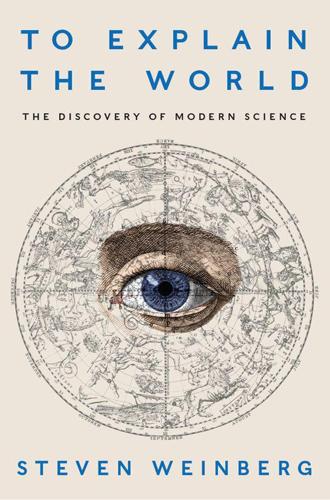
To Explain the World: The Discovery of Modern Science
by
Steven Weinberg
Published 17 Feb 2015
Gingerich, “Giovanni Antonio Magini’s ‘Keplerian’ Tables of 1614 and Their Implications for the Reception of Keplerian Astronomy in the Seventeenth Century,” Journal for the History of Astronomy 32, 237 (2001). 16. Quoted in Robert S. Westfall, The Construction of Modern Science—Mechanism and Mechanics (Cambridge University Press, Cambridge, 1977), p. 10. 17. This is the translation of William H. Donahue, in Johannes Kepler—New Astronomy (Cambridge University Press, Cambridge, 1992), p. 65. 18. Johannes Kepler, Epitome of Copernican Astronomy and Harmonies of the World, trans. Charles Glenn Wallis (Prometheus, Amherst, N.Y., 1995), p. 180. 19. Quoted by Owen Gingerich in Tribute to Galileo in Padua, International Symposium a cura dell’Universita di Padova, 2–6 dicembre 1992, Volume 4 (Edizioni LINT, Trieste, 1995). 20.
…
This was not what one would expect if the Sun goes around the Earth (or the Earth around the Sun) in a circle at constant speed, with the Earth (or the Sun) at the center, in which case the seasons would be of equal length. Astronomers tried for centuries to understand the inequality of the seasons, but the correct explanation of this and other anomalies was not found until the seventeenth century, when Johannes Kepler realized that the Earth moves around the Sun on an orbit that is elliptical rather than circular, with the Sun not at the center of the orbit but off to one side at a point called a focus, and moves at a speed that increases and decreases as the Earth approaches closer to and recedes farther from the Sun.
…
Tycho’s last observations from Hven were made in 1597; he then left on a journey that took him to Hamburg, Dresden, Wittenberg, and Prague. In Prague, he became the imperial mathematician to the Holy Roman Emperor Rudolph II and started work on a new set of astronomical tables, the Rudolphine Tables. After Tycho’s death in 1601, this work was continued by Kepler. Johannes Kepler was the first to understand the nature of the departures from uniform circular motion that had puzzled astronomers since the time of Plato. As a five-year-old he was inspired by the sight of the comet of 1577, the first comet that Tycho had studied from his new observatory on Hven. Kepler attended the University of Tübingen, which under the leadership of Melanchthon had become eminent in theology and mathematics.
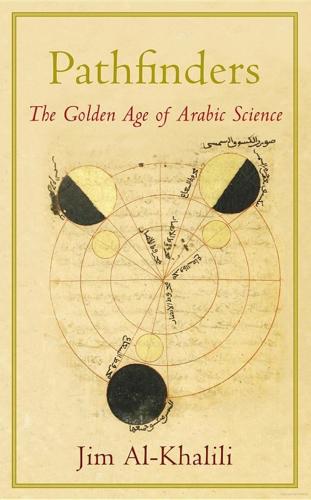
Pathfinders: The Golden Age of Arabic Science
by
Jim Al-Khalili
Published 28 Sep 2010
To most people in the West, and indeed in the Muslim world, Isaac Newton is the undisputed father of modern optics; at least, that is what we are told at school, where our textbooks abound with his famous experiments with lenses and prisms, his study of the nature of light and its reflection, refraction and decomposition into the colours of the rainbow. Even historians of science who acknowledge that work on optics predates Newton often do not go back any earlier than other notables from the European scientific revolution of the seventeenth century such as René Descartes, Willebrord Snell and Johannes Kepler. But studies of the properties of light, particularly catoptrics (reflection of light by mirrors) and dioptrics (refraction of light through lenses) go back all the way to the Greeks. An interest in optics began in antiquity, with the Babylonians, Egyptians and Assyrians all making use of polished quartz to make rudimentary lenses.
…
His work found wide interest in the Latin Middle Ages and in the Renaissance. His method and understanding of atmospheric optics was improved upon only when the Danish astronomer Tycho Brahe raised the issue of atmospheric refraction at the end of the sixteenth century and the subsequent optical work of the great Johannes Kepler was published in 1604. But Ibn Mu’ādh’s value for the height of the atmosphere is still pretty good. Indeed, the boundary between the earth’s atmosphere and outer space, known as the Kármán line, is at an altitude of 62 miles. Ibn Mu’ādh’s method for calculating the height of the atmosphere.
…
Among the European scholars influenced by their Islamic counterparts before them were Roger Bacon, whose work on lenses relied heavily on his study of Ibn al-Haytham’s Optics, and Leonardo of Pisa (Fibonacci), who introduced algebra and the Arabic numeral characters after being strongly influenced by the work of al-Khwārizmi. Some historians have even argued that the great German astronomer Johannes Kepler may have been inspired to develop his groundbreaking work on elliptical orbits after studying the work of the twelfth-century Andalusian astronomer al-Bitrūji (Alpetragius), who had tried and failed to modify the Ptolemaic model. While far from the most important of Islamic astronomers, al-Bitrūji’s Principles of Astronomy (Kitab al-Hay’a) became very popular in Europe.3 Of course, the influence of Arabic scientists on the rest of the world, and Western Europe in the Middle Ages in particular, extended far beyond their achievements in the pure sciences.
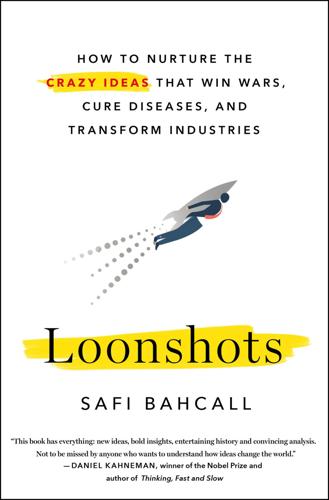
Loonshots: How to Nurture the Crazy Ideas That Win Wars, Cure Diseases, and Transform Industries
by
Safi Bahcall
Published 19 Mar 2019
Occasionally they are true. More often, they contain a kernel of truth, but omit a much richer and more interesting picture. Isaac Newton, for example, is often celebrated for discovering universal gravity, explaining the motion of the planets, and inventing calculus. But well before Newton’s Principia, it was Johannes Kepler who first suggested the idea of a force from the sun driving the motion of the planets, Robert Hooke who first suggested a principle of universal gravity, Christiaan Huygens who showed that circular motion generates a centrifugal force, many who used Huygens’s law to derive the now-familiar form of gravity, Giovanni Borelli who explained the elliptical motion of Jupiter’s moons using gravitational forces, John Wallis and others who created the differential mathematics Newton used, and Gottfried Leibniz who invented calculus in the form we use today.
…
One historian identified only five scholars across all Europe around that time, five decades after Copernicus’s death, who believed in his sun-centered world. One of those five was a teacher at the University of Tübingen in Germany named Michael Maestlin, whose lectures on planetary motion impressed a 17-year-old student named Johannes Kepler. This is Kepler describing himself in his diary: His appearance is that of a little lap-dog. His body is agile, wiry and well-proportioned. Even his appetites were alike: he liked gnawing bones and dry crusts of bread.… He is bored with conversation, but greets visitors just like a little dog; yet when the last thing is snatched away from him, he flares up and growls.… He hates many people exceedingly and they avoid him, but his masters are fond of him.
…
Einstein saw in Kepler a “kindred spirit” who overcame religious persecution, poverty, personal tragedies, disbelieving audiences, and a heritage of mystical thinking. “Kepler’s lifework was possible,” Einstein wrote, “only once he succeeded in freeing himself to a great extent of the intellectual traditions into which he was born.” Kindred spirits: Albert Einstein and Johannes Kepler Unlike Kepler, Einstein benefited from a large and well-established scientific community. As mentioned earlier, the eclipse of 1919 confirmed Einstein’s theory of gravity four years after he published it. Confirmation of Kepler’s ideas proceeded much more gradually. In the decades after Kepler published his “War on Mars,” astronomers and astrologers and navigators slowly realized Kepler’s system worked far better than any earth-centric theory.
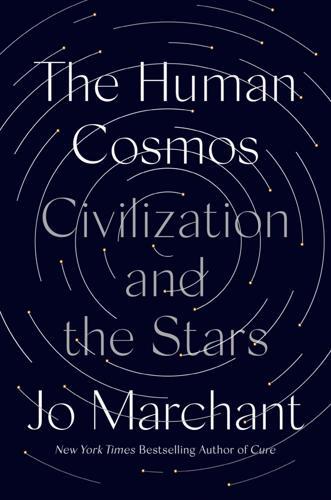
The Human Cosmos: A Secret History of the Stars
by
Jo Marchant
Published 15 Jan 2020
It took more than a thousand years before scholars in western Europe superseded Ptolemy’s system and constructed our modern, heliocentric view of the heavens. In 1543, Copernicus suggested that the Sun, not the Earth, was at the center of the cosmos, a theory supported by Galileo when he turned his telescope skyward and found, for example, that Venus had phases like the Moon. Then in 1609, Johannes Kepler banished epicycles and equants when he realized that celestial orbits are not circular but elliptical. For these founding fathers of astronomy, the idea that the stars influence our fate was still embedded in their motivation and worldview. Galileo regularly made astrological predictions for rich clients, and drew up horoscopes for his illegitimate daughters.
…
Ptolemy’s system of Earth-centered spheres endured for a millennium and a half, but in 1543, the Polish astronomer Nicolaus Copernicus finally turned it inside out, suggesting that all of the planets, including Earth, were in fact orbiting the Sun. By the early seventeenth century, telescope observations by astronomers such as Galileo and Johannes Kepler provided overwhelming evidence that Copernicus was right. Instead of gazing out from a privileged position at the fixed heart of the cosmos, we were clinging to just one of many planets hurtling around our nearest star. This shift in perspective had huge implications for humanity, which we’ll return to in later chapters.
…
He set to work on one of the most sought-after prizes in astronomy: to make a so-called achromatic lens. Telescopes had been around since at least 1608, when a Dutch glassmaker tried to patent the idea of using a pair of lenses “for seeing things far away as if they were nearby.” News of the invention quickly spread. In Italy, Galileo made his own telescope and turned it to the sky in 1609. Johannes Kepler built a better one in Prague in 1611. In the 1650s, Dutch astronomer Christiaan Huygens used a 12-foot-long version of Kepler’s design to spot Saturn’s moon Titan and sketch the Orion nebula. But as astronomers tried to make lenses stronger, their images became increasingly distorted, with blurry fringes of color.
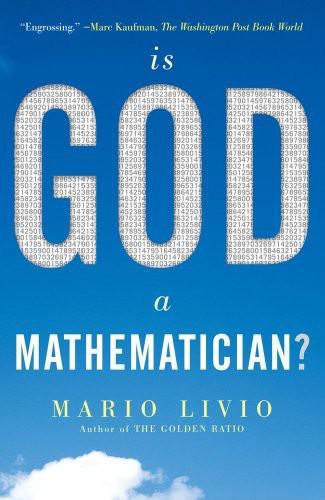
Is God a Mathematician?
by
Mario Livio
Published 6 Jan 2009
The seven subjects taught in those universities were divided into the trivium, which included dialectic, grammar, and rhetoric, and the quadrivium, which included the favorite topics of the Pythagoreans—geometry, arithmetic, astronomy, and music. The celestial “harmony of the spheres”—the music supposedly performed by the planets in their orbits, which, according to his disciples, only Pythagoras could hear—has inspired poets and scientists alike. The famous astronomer Johannes Kepler (1571–1630), who discovered the laws of planetary motion, chose the title of Harmonice Mundi (Harmony of the World) for one of his most seminal works. In the Pythagorean spirit, he even developed little musical “tunes” for the different planets (as did the composer Gustav Holst three centuries later).
…
The next eighteen years proved to be the happiest in Galileo’s life. In Padua he also began his long-term relationship with Marina Gamba, whom he never married, but who bore him three children—Virginia, Livia, and Vincenzio. On August 4, 1597, Galileo wrote a personal letter to the great German astronomer Johannes Kepler in which he admitted that he had been a Copernican “for a long time,” adding that he found in the Copernican heliocentric model a way to explain a number of natural events that could not be explained by the geocentric doctrine. He lamented the fact, however, that Copernicus “appeared to be ridiculed and hissed off the stage.”
…
No wonder, then, that they, and Euclid (who documented this tradition), invented the concept of the golden ratio that was involved in these constructions, and gave it a name. Unlike any other arbitrary ratio, the number 1.618…now became the focus of an intense and rich history of investigation, and it continues to pop up even today in the most unexpected places. For instance, two millennia after Euclid, the German astronomer Johannes Kepler discovered that this number appears, miraculously as it were, in relation to a series of numbers known as the Fibonacci sequence. The Fibonacci sequence: 1, 1, 2, 3, 5, 8, 13, 21, 34, 55, 89, 144, 233,…is characterized by the fact that, starting with the third, each number is the sum of the previous two (e.g., 2 = 1 + 1;3 = 1 + 2;5 = 2 + 3; and so on).
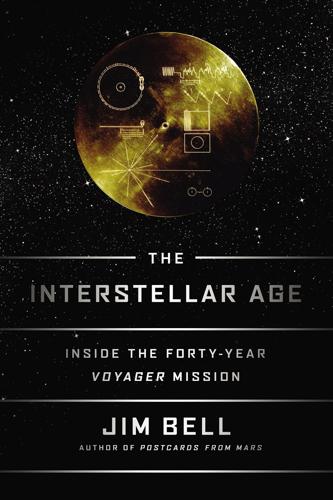
The Interstellar Age: Inside the Forty-Year Voyager Mission
by
Jim Bell
Published 24 Feb 2015
Science, perhaps especially astronomical science, generally begins with highly motivated individuals making careful observations, or working out interactive theories, essentially on their own or with just a few select others. Notable examples from the history of Western astronomy include pioneers like the sixteenth-century Polish astronomer Nicolaus Copernicus; Danish observer Tycho Brahe and German astronomer Johannes Kepler working together in the late sixteenth century; the late-seventeenth-century English physicist Isaac Newton; and of course the first loner at the telescope, Galileo Galilei, in the early 1600s. But the history of individual, or “small,” science pushed forward mostly by key individuals goes much farther back in time and crosses many cultures, including notable Greek, Arab, Persian, Chinese, Indian, and other thinkers.
…
In some sense, just like the Voyagers, all of the planets, moons, asteroids, and comets in the solar system are constantly going through mini gravity-assist flybys with one another, slightly tweaking their positions relative to what would otherwise be the kinds of perfectly predictable orbital motions that Johannes Kepler and Isaac Newton had long ago described. When my colleagues on the navigation team at JPL, for example, want to study a possible trajectory for a new space mission, they load their computers with the positions and masses of the sun, all the planets and their fifty or so large moons, and more than a half million asteroids, to make sure that every single possible “perturber” of the spacecraft is taken into consideration in their calculations.
…
Transits are rare events, but they do happen if you’re in the right place at the right time, and if you were to observe huge numbers of nearby stars, then even rare events like that should happen to some of those stars now and then. That was exactly the philosophy that Bill Borucki had in mind when he and colleagues pitched the Kepler space telescope mission (named after the planetary-orbit discoverer Johannes Kepler) to NASA in 2001. Bill’s idea was to launch a very sensitive camera and telescope—so sensitive that they could detect a 0.002 percent change in the light of a star corresponding to the dimming caused by transiting Earth-sized or smaller planets—and to literally stare at the same 150,000 stars or so for years to detect such transits.
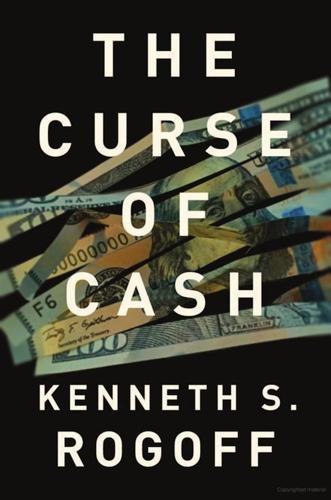
The Curse of Cash
by
Kenneth S Rogoff
Published 29 Aug 2016
Public Finance Review 41 (3): 677–707. ———. 2015. “The Financial Flows of Transnational Crime and Tax Fraud: How Much Cash Is Used and What We Do (Not) Know.” Talk presented at Johannes Kepler Universität Linz, November. Slides available at www.libinst.ch/presentationen/LI-FSchneider-Bargeldtrial.pdf. ———. 2016. “Size and Development of the Shadow Economy of 31 European and 5 Other OECD Countries” (January). Mimeo, Department of Economics, Johannes Kepler University Linz, Austria. Schneider, Friedrich, and Andreas Buehn. 2012. “Size and Development of Tax Evasion in 38 OECD Countries: What Do We (Not) Know?” CESifo Working Paper 4004 (November).
…
“New Estimates for the Shadow Economies All Over the World.” International Economic Journal 24 (December): 443–61. Schneider, Friedrich, and Alexandra Rudolph. 2013. “International Human Trafficking: Measuring Clandestinity by the Structural Equation Approach.” Working Paper 1325 (December). Department of Economics, Johannes Kepler University Linz, Austria. Schneider, Friedrich, and Colin Williams. 2013. The Shadow Economy. London: Profile Books and Institute for International Affairs. Schuh, Scott, and Joanna Stavins. 2015. “The 2013 Survey of Consumer Payment Choice: Summary Results.” Federal Reserve Bank of Boston Research Data Report 15-4 (July 27).
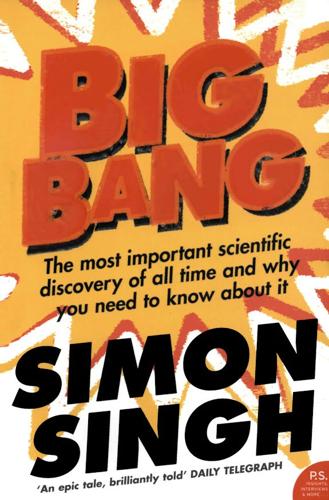
Big Bang
by
Simon Singh
Published 1 Jan 2004
Fortunately, Tycho’s instruments had been designed to be transportable, because he had shrewdly realised: ‘An astronomer must be cosmopolitan, because ignorant statesmen cannot be expected to value their services.’ Tycho Brahe migrated to Prague, where Emperor Rudolph II appointed him Imperial Mathematician and allowed him to establish a new observatory in Benatky Castle. The move turned out to have a silver lining, because it was in Prague that Tycho teamed up with a new assistant, Johannes Kepler, who would arrive in the city a few months later. The Lutheran Kepler had been forced to flee his previous home in Graz when the fiercely Catholic Archduke Ferdinand had threatened to execute him, in keeping with his stated declaration that he would rather ‘make a desert of the country than rule over heretics’.
…
Together their achievements illustrate a key feature of scientific progress, namely how theories and models are developed and refined over time by several scientists building on each other’s work. Copernicus was prepared to make the theoretical leap that relegated the Earth to a mere satellite and promoted the Sun to the central role. Tycho Brahe, despite his brass nose, provided the observational evidence that would later help Johannes Kepler to identify the outstanding flaw in Copernicus’s model, namely that the planetary orbits are slightly elliptical, not perfectly circular. Finally, Galileo used a telescope to discover the key evidence that should have convinced doubters. He showed that the Earth is not at the centre of everything, because Jupiter has its own satellites.
…
There were sufficient uncertainties for the estimated date of creation to vary by up to three thousand years, depending on who was doing the reckoning. Alfonso X of Castile and León, for instance, the king responsible for the Alphonsine Tables, quoted the oldest date for creation, 6904 BC, while Johannes Kepler preferred a date at the lower end of the range, 3992 BC. The most fastidious calculation was by James Ussher, who became the Archbishop of Armagh in 1624. He employed an agent in the Middle East to seek out the oldest known Biblical texts, to make his estimate less susceptible to errors in transcription and translation.
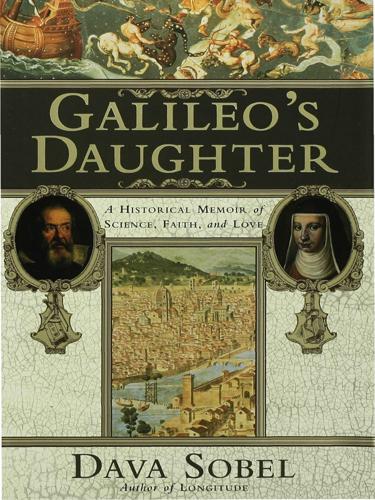
Galileo's Daughter: A Historical Memoir of Science, Faith and Love
by
Dava Sobel
Published 25 May 2009
These things I have been bold thus to discourse unto your Lordship, whereof here all corners are full. And the author runneth a fortune to be either exceeding famous or exceeding ridiculous. By the next ship your Lordship shall receive from me one of the above instruments, as it is bettered by this man. In Prague, the highly respected Johannes Kepler, imperial astronomer to Rudolf II, read the emperor’s copy of the book and leaped to judgment—despite the lack of a good telescope that could confirm Galileo’s findings. “I may perhaps seem rash in accepting your claims so readily with no support of my own experience,” Kepler wrote to Galileo.
…
Tycho Brahe dies. 1603 Prince Federico Cesi founds Lyncean Academy in Rome. 1604 New star appears in the heavens, generating debate and three public lectures by Galileo. 1605 Prince Cosimo de’ Medici takes instruction from Galileo. 1606 Galileo publishes treatise on geometric and military compass; Vincenzio Galilei (son) is born in Padua. 1607 Baldessar Capra publishes pirated Latin edition of Galileo’s instructions for geometric and military compass. 1608 Hans Lippershey invents a refracting telescope in Holland. Prince Cosimo marries Maria Maddalena, archduchess of Austria. 1609 Grand Duke Ferdinando I dies; Cosimo II succeeds him. Galileo improves telescope, observes and measures mountains on the Moon. Johannes Kepler (1571-1630) publishes first two laws of planetary motion. 1610 Galileo discovers the moons of Jupiter. The Starry Messenger is published. Galileo is appointed chief mathematician and philosopher to the grand duke of Tuscany, Cosimo II. 1611 Galileo visits Rome, is elected to membership in the Lyncean Academy. 1612 Bodies That Stay Atop Water or Move Within It is published in Florence. 1613 Prince Cesi publishes Galileo’s Sunspot Letters; Virginia and Livia Galilei (daughters) enter the Convent of San Matteo in Arcetri. 1614 Virginia and Livia Galilei assume religious habit. 1616 Galileo writes his “Theory on the Tides.”
…
Galileo on the World Systems. Berkeley: University of California Press, 1997. Galilei, Celeste. Lettere al Padre. Edited by Giovanni Ansaldo (1927). Genoa: Blengino, 1992. Galilei, Galileo. The Assayer. In The Controversy on the Comets of 1618, by Galileo Galilei, Horatio Grassi, Mario Guiducci, and Johannes Kepler. Translated by Stillman Drake and C. D. O’Malley. Philadelphia: University of Pennsylvania Press, i960. alogo di Galileo Galilei Linceo. Florence: Gio: Batista Landini, 1632. ----------. Dialogue Concerning the Two Chief World Systems. Translated by Stillman Drake. Berkeley: University of California Press, 1967. ----------.
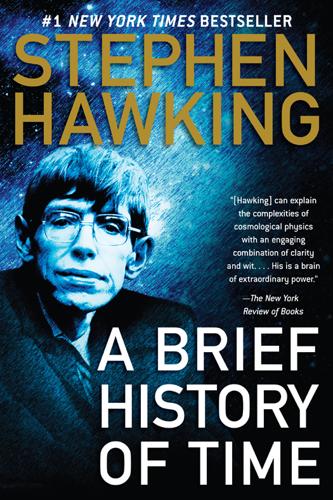
A Brief History of Time
by
Stephen Hawking
Published 16 Aug 2011
(At first, perhaps for fear of being branded a heretic by his church, Copernicus circulated his model anonymously.) His idea was that the sun was stationary at the center and that the earth and the planets moved in circular orbits around the sun. Nearly a century passed before this idea was taken seriously. Then two astronomers—the German, Johannes Kepler, and the Italian, Galileo Galilei—started publicly to support the Copernican theory, despite the fact that the orbits it predicted did not quite match the ones observed. The death blow to the Aristotelian/Ptolemaic theory came in 1609. In that year, Galileo started observing the night sky with a telescope, which had just been invented.
…
(It was, of course, still possible to believe that the earth was stationary at the center of the universe and that the moons of Jupiter moved on extremely complicated paths around the earth, giving the appearance that they orbited Jupiter. However, Copernicus’s theory was much simpler.) At the same time, Johannes Kepler had modified Copernicus’s theory, suggesting that the planets moved not in circles but in ellipses (an ellipse is an elongated circle). The predictions now finally matched the observations. As far as Kepler was concerned, elliptical orbits were merely an ad hoc hypothesis, and a rather repugnant one at that, because ellipses were clearly less perfect than circles.
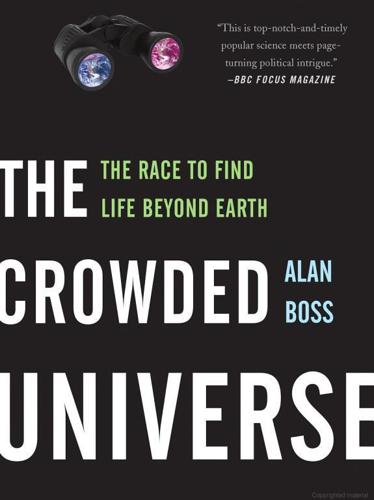
The Crowded Universe: The Search for Living Planets
by
Alan Boss
Published 3 Feb 2009
Rather than choose a new acronym, Borucki went with the rage at the time of naming missions after famous scientists, as had been the case when NASA’s Space Telescope was named after the Carnegie Institution astronomer, Edwin P. Hubble, who had discovered the fact that the universe is expanding. Johannes Kepler (1571-1630) was a German astronomer who built on the work of previous astronomers, such as the Polish astronomer Nicolas Copernicus, who proposed in 1530 that the planets orbited the Sun, not the other way around, and the Danish astronomer Tycho Brahe, who could not quite take the leap to believe in Copernicus’s heliocentric, or Sun-centered, universe but nevertheless made sufficiently precise measurements of the locations of the planets in the sky to allow his successor, Kepler, to take the next logical steps.
…
Kepler also founded the field of astrometry, which Peter van de Kamp would use over three centuries later to search for a planet around Barnard’s star. And Kepler accomplished all of this during an era when he had to spend time defending his mother against charges of witchcraft. FIGURE 10. Johannes Kepler [1571-1630], the German astronomer who first understood the elliptical nature and basic laws of planetary orbits. [Courtesy of NASA’s Kepler Mission and the Sternwarte Kremsmunster, Upper-Austria.] Borucki estimated at the Baltimore meeting that if the Solar System was typical of planetary systems, the Kepler Mission would discover not just one or two but hundreds of Earth-like planets.
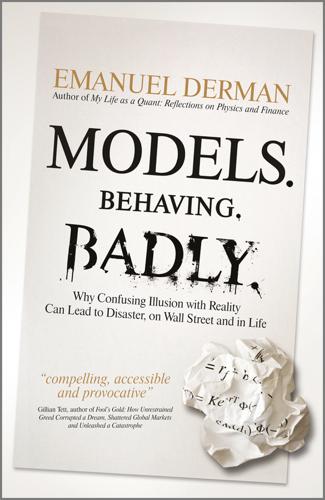
Models. Behaving. Badly.: Why Confusing Illusion With Reality Can Lead to Disaster, on Wall Street and in Life
by
Emanuel Derman
Published 13 Oct 2011
It postulates that the force between any two masses (the moon and the Earth, the Earth and an apple) is proportional to the product of their masses and inversely proportional to the square of the distance between their centers. Newton’s Second Law of Motion, a theory too, dictates that the gravitational force accelerates each particle inversely proportional to its mass. Solving these equations, Newton deduced that planets must traverse elliptical paths around the sun, thereby justifying Johannes Kepler’s empirical laws of planetary motion. Newton’s theory is general and precise. The gravitational force is inversely proportional to exactly the square of the distance between the planets; Newton was confident that the power of the distance is precisely 2. Had he been a social scientist performing statistical regressions in psychology, economics, or finance, he would probably have proposed a power of 2.05 ± 0.31.
…
Lest you think it naïve to assume that there are laws behind everything, recall how many centuries of observing the lights in the night sky it took to discover that Newton’s three laws of motion and his law of gravity could explain the motions of the planets, the stars, and objects on earth. Tycho Brahe had to map the planetary motions and Johannes Kepler had to intuit that they described mathematical ellipses, each planet sweeping out equal areas in equal times; only then could Newton step into the picture with dynamics. With time, what more may we still discover? Mysterious Materialism Spinoza is a materialist, but not a naïve materialist.

Neutrino Hunters: The Thrilling Chase for a Ghostly Particle to Unlock the Secrets of the Universe
by
Ray Jayawardhana
Published 10 Dec 2013
By midmorning of February 24, scientists around the world learned about the discovery, tipped off by phone calls from giddy colleagues and a telegram from the International Astronomical Union. Their delight had to do with the fact that Supernova 1987A (as it came to be known) was the first one observed in our galactic neighborhood since the invention of the telescope nearly four centuries earlier. It was the nearest and the brightest supernova seen in 383 years—since Johannes Kepler observed a supernova in our own galaxy with his naked eye in 1604—and as such, it offered astronomers an unprecedented opportunity to witness a massive star’s last hurrah. Over the next hours and days, the star’s debris would expand outward from the site of the initial explosion, colliding with dust and gas in the space around it.
…
Particle physicists are also interested in neutrinos from supernovae, because they provide a rare opportunity to understand how these elusive particles behave under extreme conditions that can’t be replicated in a laboratory. What both sets of scientists need to achieve their goals is a core collapse supernova in our own galaxy. However, no supernova has been seen in the Milky Way since 1604, when stargazers including the German mathematician Johannes Kepler noticed a “new star” in the constellation Ophiuchus. At its peak, this supernova was so bright that it was visible during the daytime. Modern radio, optical, and X-ray telescopes have observed the remnant it left behind in the form of a shell of hot gas. Just three decades before Kepler saw the 1604 supernova, observers in Europe had seen one.
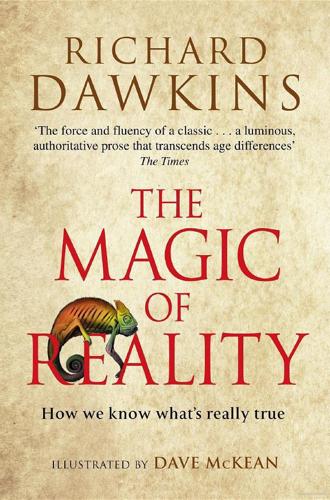
The Magic of Reality: How We Know What's Really True
by
Richard Dawkins
Published 3 Oct 2011
In the space station, a cannon ball has much more mass than a balloon, although both have the same weight – zero. Eggs, ellipses and escaping gravity Let’s go back to our cannon on the mountain-top, and make it more powerful still. What will happen? Well, now we need to acquaint ourselves with the discovery of the great German scientist Johannes Kepler, who lived just before Newton. Kepler showed that the graceful curve by which things orbit other things in space is not really a circle but something known to mathematicians since ancient Greek times as an ‘ellipse’. An ellipse is sort of egg-shaped (only ‘sort of’: eggs are not perfect ellipses).
…
What, then, if Eta Carinae exploded 8,000 years ago? Well, in that case the light and other radiation from the explosion really could reach us any day now. The moment we see it, we’ll know that Eta Carinae blew up 8,000 years ago. Only about 20 supernovas have been seen in recorded history. The great German scientist Johannes Kepler saw one on 9 October 1604: the debris has expanded since he first saw it. The explosion itself actually occurred some 20,000 years earlier, roughly the time the Neanderthal people went extinct. Supernovas, unlike ordinary stars, can create elements even heavier than iron: lead, for example, and uranium.
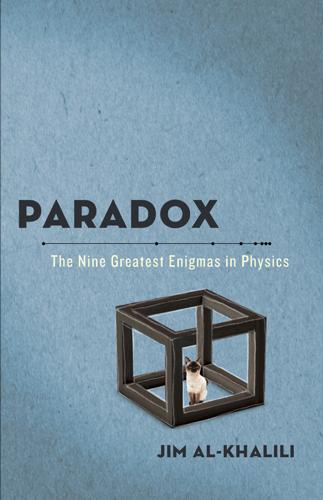
Paradox: The Nine Greatest Enigmas in Physics
by
Jim Al-Khalili
Published 22 Oct 2012
In 1952 the great Anglo-Austrian cosmologist Hermann Bondi published an influential textbook in which the term “Olbers’ Paradox” was coined for the first time. But as we shall see, the attribution was misplaced, for Olbers was not the first to pose the problem, nor was his contribution to its resolution particularly original or enlightening. A century before him Edmond Halley had already stated it, and a century before him Johannes Kepler had posed it in 1610. And even he wasn’t the first to record it: for that, we have to go back to 1576 and the very first English translation of De revolutionibus, the great work of Copernicus, written a few decades earlier. Any account of the history of astronomy begins with the same few key individuals in the leading roles.
…
For Digges, however, there was no paradox. He just assumed that the distant stars were simply too faint to contribute any light. What Digges was missing was a vital mathematical calculation that would have shown the error in his reasoning about the darkness of the night sky. But that was to come later. In 1610 Johannes Kepler revisited the problem, arguing the reason it was dark at night was simply because the Universe was finite in extent: the darkness between the stars was the dark outer wall enclosing the Universe. Over a century after Kepler, another astronomer, the Englishman Edmond Halley, looked at the problem again and came out in support of Digges’ original solution: that the Universe is infinite, but that the distant stars are too faint to be seen.
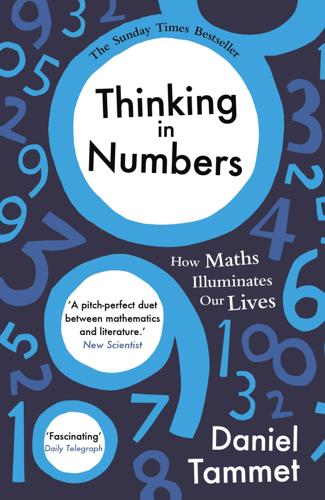
Thinking in Numbers
by
Daniel Tammet
Published 15 Aug 2012
I have read, for instance, that the ancient Chinese called snowflakes blossoms and that the Scythians compared them to feathers. In the Psalms (147:16), snow is a ‘white fleece’ while in parts of Africa it is likened to cotton. The Romans called snow nix, a synonym – the seventeenth-century mathematician and astronomer Johannes Kepler would later point out – of his Low German word for ‘nothing’. Kepler was the first scientist to describe snow. Not as flowers or fleece or feathers, snowflakes were at last perceived as being the product of complexity. The reason behind the snowflake’s regular hexagonal shape was ‘not to be looked for in the material, for vapour is formless’.
…
The Inquisitors’ heavy footsteps dissuaded Bruno’s contemporary, Galileo Galilei, from seeing any evidence for extraterrestrial life in the rugged lunar landscape revealed by his telescope. All the same, since the valleys and mountains that corrugated the moon’s surface seemed at least comparable to those on Earth, might not the moon also have people to dwell among them? His friend Johannes Kepler, the seventeenth-century mathematician and astronomer, thought so. Jupiter, too, he deduced ‘with the highest degree of probability’, though its inhabitants were undoubtedly inferior to humans. Probability: this word became the cornerstone of the argument for life on other planets. ‘As for mind beyond the confines of our tiny globe,’ wrote the American astronomer Percival Lowell in 1895, ‘modesty, backed by a probability little short of demonstration, forbids the thought that we are the sole thinkers in this great universe.’
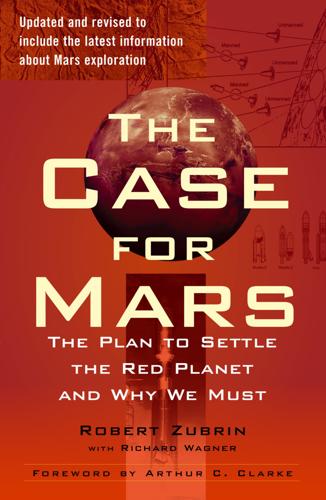
Case for Mars
by
Robert Zubrin
Published 27 Jun 2011
Six years later Amundsen would use what he had learned on King William to become the first to reach the South Pole. 2: FROM KEPLER TO THE SPACE AGE Ships and sails proper for the heavenly air should be fashioned. Then there willand o be people, who do not shrink from the dreary vastness of space. —Johannes Kepler to Galileo Galilei, 1609 We’ve been to Mars before. On the morning of July 20, 1976, an American spacecraft, Viking 1, settled down onto the Chryse Planitia—the Plains of Gold on the red planet Mars. At the moment of touchdown, though, with Viking resting on the surface of a planet nearly 330 million kilometers distant, no one at NASA’s Jet Propulsion Laboratory in Pasadena, California, knew if the unmanned spacecraft had arrived safely or burrowed into the ground.
…
Under the heliocentric system, the planets traveled about the Sun in circular orbits. This concept was revolutionary, heretical even, and could not precisely match the observed planetary motions, yet some scholars of the time saw beauty in the fundamental simplicity of Copernicus’ system. Chief among them was Johannes Kepler. Born in 1571, Kepler grew to be a devout Lutheran, yet also a diehard Platonist with a passion for seeking the true nature of the universe in the rational laws of geometry. He would write, “Geometry is one and eternal, a reflection out of the mind of God. That mankind shares in it is one of the reasons to call man an image of God.”
…
Electric ion thrusters already exist in kilowatt-sized units, and bulking them up to the megawatt sizes needed for NEP transportation systems offers no fundamental challenges. The real problem in enabling NEP propulsion systems to date has been to obtain the funds and sustained commitment required to develop a multi-megawatt space nuclear reactor. SOLAR SAILS Ships and sails proper for heavenly breezes should be fashioned ... —Johannes Kepler, 1609 Nearly four hundred years ago our old friend Kepler observed that regardless of whether a comet is moving toward or away from the Sun, its tail always points away from the Sun. This caused him to guess that light emanating from the Sun exerts a force that pushes the comet’s tail away.

The Laws of Medicine: Field Notes From an Uncertain Science
by
Siddhartha Mukherjee
Published 12 Oct 2015
If you carefully follow Mars on the horizon, it tracks a peculiar path—pitching forward at first and then tacking backward in space before resuming a forward motion again. This phenomena—called the retrograde motion of Mars—did not make sense in either Ptolemy’s or Brahe’s model. Fed up with Mars’s path across the evening sky, Brahe assigned the problem to an indigent, if exceptionally ambitious, young assistant named Johannes Kepler, a young mathematician from Germany with whom he had a stormy, on-again, off-again relationship. Brahe quite possibly threw Kepler the “Mars problem” to keep him distracted with an insoluble conundrum of little value. Perhaps Kepler, too, would be stuck cycling two steps forward and five steps back, leaving Brahe to ponder real questions of cosmological importance.
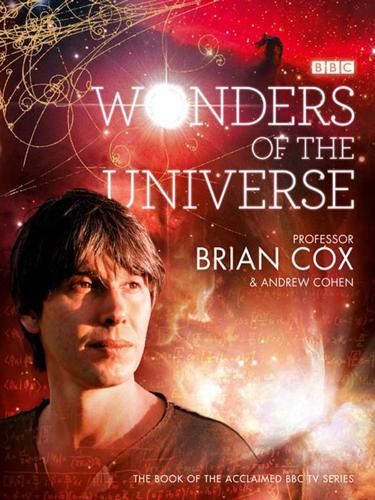
Wonders of the Universe
by
Brian Cox
and
Andrew Cohen
Published 12 Jul 2011
The step from observing the regularity in the movement of the heavenly lights to modern science took much of recorded human history. The ancient Greeks began the work, but the correct description of the motion of the Sun, Moon and planets across the sky was discovered in the seventeenth century by Johannes Kepler. Removing the veil of the divine to reveal the true beauty of the cosmos was a difficult process, but the rewards that stem from that innate human fascination with the lights in the sky have proved to be incalculable * * * By following the light we have mapped our place among the hundreds of billions of stars that make up the Milky Way Galaxy.
…
For planetary orbits around stars, orbits of stars around galaxies and the movements of the galaxies themselves, it is more than accurate enough. It has also applied at all times in the Universe’s history beyond the first instants after the Big Bang. This is not to be taken for granted, because the law was derived based on the work of Johannes Kepler and the observations of Tycho Brahe, who were concerned only with the motion of the planets around the Sun. The fact that a law that governs the clockwork of our solar system is the same law that governs the motion of the galaxies is interesting and important. It is the statement that the same laws of physics govern our whole universe, and Newton’s law of gravitation was the first example of such a universal law.
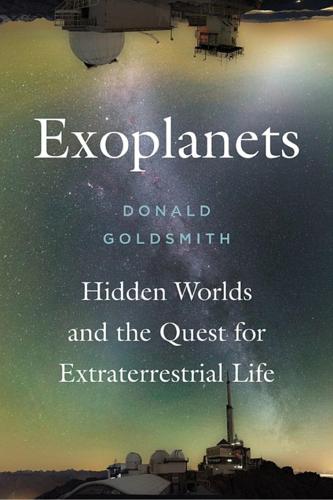
Exoplanets: Hidden Worlds and the Quest for Extraterrestrial Life
by
Donald Goldsmith
Published 9 Sep 2018
In this case, astronomers could deduce that the orbits of the star and planet are strongly elongated, with an eccentricity of 0.6. Compare this diagram with the three radial-velocity plots shown in Figure 6. (Courtesy of Debra Fischer) In addition to furnishing us with the planet’s orbital period and eccentricity, radial-velocity observations provide a third key property of the planet’s orbit: its mass. As Johannes Kepler realized four centuries ago from his studies of the planets in the solar system, and as Isaac Newton showed how to generalize to other objects in orbit, the length of time required for a less massive object to complete an orbit around a more massive one depends on the average distance between the two objects.
…
CoROT proceeded to discover transiting exoplanets until its computers failed in November 2012. During its five years of operation, CoRoT, which could measure brightness variations by 1 part in 10,000, detected about three dozen exoplanets, opening the path to spaceborne planetary discovery.1 NASA’s Kepler spacecraft, named after the famous seventeenth-century astronomer Johannes Kepler and launched in March 2009, built upon CoRoT’s success and embodied a more ambitious plan: to include a telescope with a mirror measuring 1.4 meters in diameter (far larger than CoRoT’s 27 centimeters), and to observe the heavens far from Earth’s interference. Kepler passed long years in design and preparation as the technological child of William Borucki, an astronomer at the Ames Research Center in California who emphasized to NASA that a great advantage would be gained from placing a telescope outside the atmosphere to search for exoplanets’ transits.

The Card Catalog: Books, Cards, and Literary Treasures
by
Library Of Congress
and
Carla Hayden
Published 3 Apr 2017
The rediscovery of ancient Greek literature and history was the driving force in the early Renaissance, and the resulting abundance of new humanistic works unnerved the Catholic Church. The church moved quickly to blacklist certain titles and created an Index of Prohibited Books it found heretical, seditious, or scandalous. Subsequent editions included major works by Machiavelli, John Calvin, Voltaire, and Johannes Kepler. The indexes were not officially abolished until 1966. VIVE LA REVOLUTION . . . AND CARD CATALOGS Throughout most of the seventeenth and eighteenth centuries, national and university libraries continued experimenting with the feasibility of different cataloging techniques, with relatively few innovations.
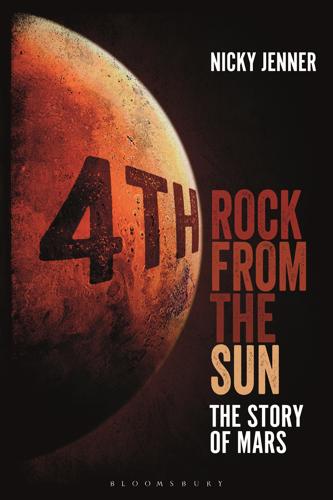
4th Rock From the Sun: The Story of Mars
by
Nicky Jenner
Published 5 Apr 2017
An apparition appeared and violently threw Rheticus about, smashing his head first on the ceiling and then on the floor, with a parting roar: ‘These are the motions of Mars!’ The Mars story involves a great many of the leading names and figures in the history of astronomy. Mars’s motions also preoccupied Danish astronomer Tycho Brahe and his German colleague Johannes Kepler, both active in the 1500s and 1600s. Brahe’s career began a few years after Copernicus’s death. Despite his work still taking place in a pre-telescopic era, Brahe made strikingly accurate observations of Mars and its position in the sky. These data were later used by Kepler to prove that Mars didn’t orbit on a circular path, but an elliptical one.
…
In a way, Brahe’s model was an intermediary between Ptolemy and Copernicus – it maintained the Earth’s importance, removed the solid planetary shells but kept circular orbits, scrapped the immutable stars and heavens, and kept the stars relatively close to the outermost planet (at the time, Saturn). In the late 1500s, Brahe met Johannes Kepler (1571–1630), who subsequently became his assistant. Brahe tasked Kepler with understanding Mars’s orbit, a task that was readily accepted. Sadly, Brahe died in 1601 before he could see his assistant’s conclusions, but Kepler continued his work in earnest and some eight years later published his Astronomia Nova (New Astronomy).
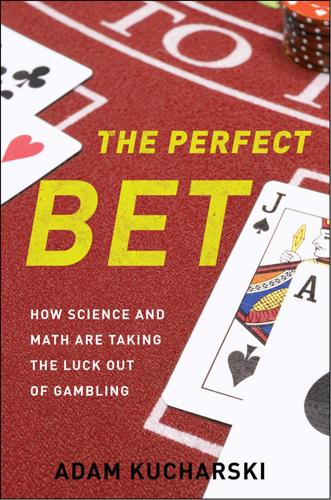
The Perfect Bet: How Science and Math Are Taking the Luck Out of Gambling
by
Adam Kucharski
Published 23 Feb 2016
“When I observed that the cards were marked, I impetuously slashed his face with my poniard,” Cardano said, “though not deeply.” In the decades that followed, other researchers chipped away at the mysteries of probability, too. At the request of a group of Italian nobles, Galileo investigated why some combinations of dice faces appeared more often than others. Astronomer Johannes Kepler also took time off from studying planetary motion to write a short piece on the theory of dice and gambling. The science of chance blossomed in 1654 as the result of a gambling question posed by a French writer named Antoine Gombaud. He had been puzzled by the following dice problem. Which is more likely: throwing a single six in four rolls of a single die, or throwing double sixes in twenty-four rolls of two dice?
…
xii“When I observed that the cards were marked”: Cardan, Jerome. Book of My Life (New York: Dutton, 1930). xiiAt the request of a group of Italian nobles: Ore, Oystein. “Pascal and the Invention of Probability Theory.” American Mathematical Monthly 67, no. 5 (May 1960): 409–419. xiiAstronomer Johannes Kepler also took time: Epstein, Richard. The Theory of Gambling and Statistical Logic (Waltham, MA: Academic Press, 2013). xiiThe science of chance blossomed: Ore, “Pascal and the Invention.” xiihe was more likely to get a six: It’s easiest to start by calculating the probability of not getting a six in four rolls, which is (5/6)4.

The Fractalist
by
Benoit Mandelbrot
Published 30 Oct 2012
It led me to encounter more than my share of unusually diverse and forceful persons along the way. Many were warm and welcoming; many were indifferent, dismissive, hostile—even beastly. This book cannot possibly mention them all, but every one taught me something and to all I owe a great deal. To the memory of Johannes Kepler, who brought ancient data and ancient toys together and founded science. Contents Cover Title Page Copyright Dedication Acknowledgments by Aliette Mandelbrot Beauty and Roughness: Introduction Part One: How I Came to Be a Scientist 1. Roots: Of Flesh and the Mind 2. Child in Warsaw, 1924–36 3.
…
Can geometry deliver what the Greek root of its name seemed to promise—truthful measurement, not only of cultivated fields along the Nile River but also of untamed Earth? These questions, as well as a host of others, are scattered across a multitude of sciences and have been faced only recently … by me. As an adolescent during World War II, I came to worship a major achievement of a mathematician and astronomer of long ago, Johannes Kepler (1571–1630). Kepler combined the ellipses of ancient Greek geometers with a failure of ancient Greek astronomers, who mistakenly believed that persistent “anomalies” existed in the motion of planets. Kepler used his knowledge of two different fields—mathematics and astronomy—to calculate that this motion of the planets was not an anomaly.
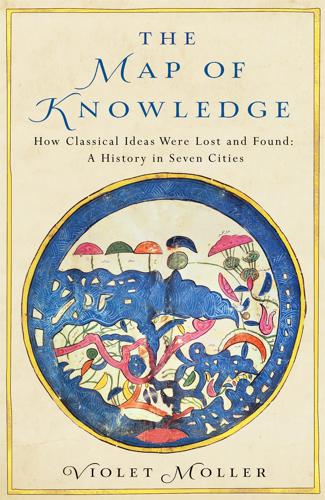
The Map of Knowledge: How Classical Ideas Were Lost and Found: A History in Seven Cities
by
Violet Moller
Published 21 Feb 2019
Gerard of Cremona translated this work into Latin and it went on to influence European astronomy for centuries. Al-Zarqali also wrote an astronomical treatise in which he made the groundbreaking claim that Mercury’s orbit was elliptical, not circular, as was commonly thought. In the sixteenth century, Johannes Kepler drew on al-Zarqali’s visionary work to prove that the orbit of Mars was also elliptical. Toledo fell to Alfonso of Castile in 1085, and al-Zarqali left the city, but his ideas were taken up by Christian scholars and thus shared throughout Europe. 15. An astrolabe made in Toledo in 1029 when the city was still under Muslim rule.
…
He filled it with sophisticated instruments, capable of making far more accurate astronomical observations than had previously been possible. Applying these to Copernicus’ new cosmos, he did away with Ptolemy’s system of spheres, opening up the possibility of a far more complex and exact representation of the universe. The next step was taken by Johannes Kepler, who, using Brahe’s data, reluctantly rejected Ptolemy’s theory that the planets moved with regular motion in circular orbits, in favour of elliptical movement – another huge step forward in our understanding of the solar system. Each of the cities we have visited in this book had its own particular topography and character, but they all shared the conditions that allowed scholarship to flourish: political stability, a regular supply of funding and of texts, a pool of talented, interested individuals and, most striking of all, an atmosphere of tolerance and inclusivity towards different nationalities and religions.
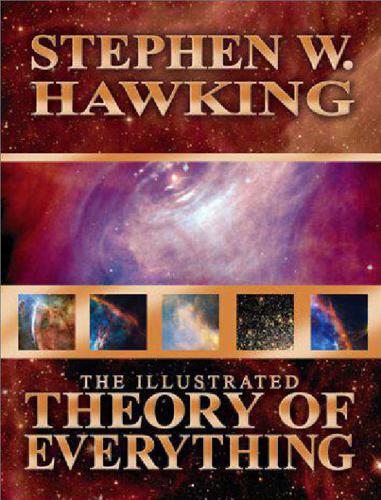
Illustrated Theory of Everything: The Origin and Fate of the Universe
by
Stephen Hawking
Published 1 Aug 2009
At first, for fear of being accused of heresy, Copernicuspublished his model anonymously. His idea was that the sun was stationary atthe center and that the Earth and the planets moved in circular orbits aroundthe sun. Sadly for Copernicus, nearly a century passed before this idea was tobe taken seriously. Then two astronomers-the German, Johannes Kepler, andthe Italian, Galileo Galilei-started publicly to support the Copernican theo-ry, despite the fact that the orbits it predicted did not quite match the onesobserved. The death of the Aristotelian-Ptolemaic theory came in 1609. Inthat year Galileo started observing the night sky with a telescope, which hadjust been invented.
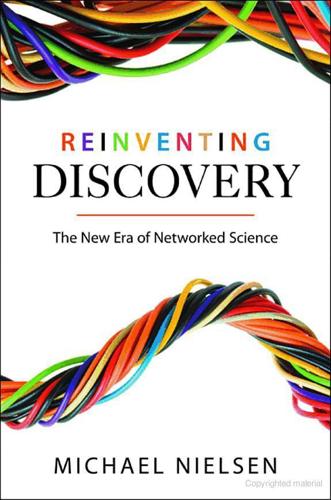
Reinventing Discovery: The New Era of Networked Science
by
Michael Nielsen
Published 2 Oct 2011
But I should perhaps have put “Ptolemy” in quotes, because many historians of science—not all, but many—believe that Ptolemy plagiarized many of the star positions in his catalog from the astronomer Hipparchus, who had done his own sky survey nearly 300 years earlier. In fact, the history of science is full of examples of scientists stealing data from one another. Back at the dawn of modern science the astronomer Johannes Kepler discovered that planets move in ellipses around the sun using data he stole from his deceased mentor, the astronomer Tycho Brahe. James Watson and Francis Crick discovered the structure of DNA with the aid of data they borrowed from one of the world’s leading crystallographers, Rosalind Franklin.
…
Still, this was another momentous discovery, and Galileo is often credited, along with Huygens, as the discoverer of the rings. Eager to claim the credit for his new discovery, Galileo immediately sent out letters to several of his colleagues, including his great colleague and rival, the astronomer Johannes Kepler. Galileo’s letter to Kepler (and his other colleagues) was peculiar. Instead of explaining forthrightly what he had seen, Galileo explained that he would describe his latest discovery in the form of an anagram: smaismrmilmepoetaleumibunenugttauiras By sending this anagram, Galileo avoided revealing the details of his discovery, but at the same time ensured that if someone else—such as Kepler—later made the same discovery, Galileo could reveal the anagram and claim the credit.
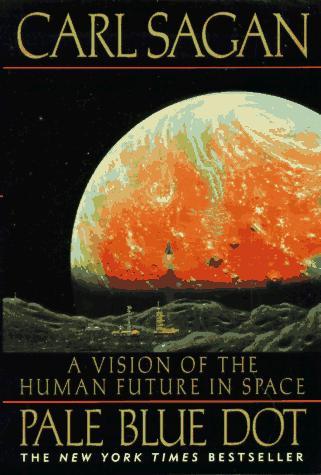
Pale Blue Dot: A Vision of the Human Future in Space
by
Carl Sagan
Published 8 Sep 1997
To our ancestors there was much in Nature to be afraid of—lightning, storms, earthquakes, volcanos, plagues, drought, long winters. Religions arose in part as attempts to propitiate and control, if not much to understand, the disorderly aspect of Nature. The scientific revolution permitted us to glimpse an underlying ordered Universe in which there was a literal harmony of the worlds (Johannes Kepler's phrase). If we understand Nature, there is a prospect of controlling it or at least mitigating the harm it may bring. In this sense, science brought hope. Most of the great deprovincializing debates were entered into with no thought for their practical implications. Passionate and curious humans wished to understand their actual circumstances, how unique or pedestrian they and their world are, their ultimate origins and destinies, how the Universe works.
…
Perhaps winging across the billion miles of intervening interplanetary space will be, in the not too distant future. news about how far along the path to life Titan has come. 61 C H A P T E R 8 THE FIRST NEW PLANET 1 implore you, you do not hope to be able to give the reasons for the number of planets, do you? This worry has been resolved . . . — JOHANNES KEPLER, EPITOME OF COPERNICAN ASTRONOMY, BOOK 4 / 1621 Before we invented civilization, our ancestors lived mainly in the open, out under the sky. Before we devised artificial lights and atmospheric pollution and modern forms of nocturnal entertainment, we watched the stars. There were practical calendrical reasons, of course, but there was more to it than that.
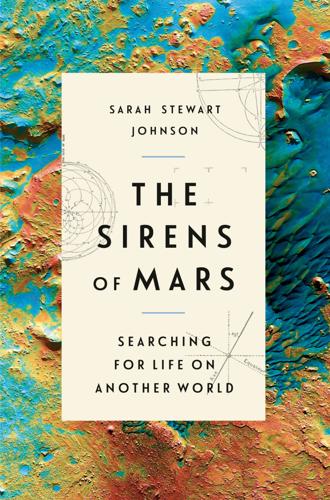
The Sirens of Mars: Searching for Life on Another World
by
Sarah Stewart Johnson
Published 6 Jul 2020
This false-color mosaic, in which bluish tints indicate fine sand and reddish tints indicate outcrops of rock, was made from images taken at visible and infrared wavelengths by the Thermal Emission Imaging System on NASA’s 2001 Mars Odyssey mission. (NASA/JPL-Caltech/ASU); Fol 36-37 “Astronomia nova Aitiologetos,” by Johannes Kepler (engraving), Bridgeman Images (top right); August 20, 1982, “Professor Pickering’s Observation of Mars,” Scientific American (center left); Morphart Creation/Shutterstock (bottom right) ep_prh_5.5.0_c0_r0 Contents Cover Title Page Copyright Prologue Part 1: A Point Is That Which Has No Part.
…
By the sixteenth century, Copernicus decided to put the sun at the center of his system, and Mars’s largest epicycle was no longer needed—since it was now evident that it was merely an illusion of perspective, created as the Earth, following its own orbit around the sun, caught up with and passed the slower-moving Mars. In 1609, Johannes Kepler worked out the elliptic shape of the planetary orbits, using the orbit of Mars, which is highly elliptical, as the basis of his protracted and difficult calculations. This was one of the great discoveries of modern astronomy—and we owe it all to Mars. PLATO CONCLUDED THAT Plato, “Book X,” The Republic, trans.

The Knowledge Machine: How Irrationality Created Modern Science
by
Michael Strevens
Published 12 Oct 2020
The old regime, overthrown by the revolution, was the ancient Greek system of astronomy, perfected in the work of the Greco-Egyptian mathematician Ptolemy, according to whom the sun, the moon, the stars, and all the planets orbit the earth. The revolutionary new idea was Copernicus’s system, published in 1543, in which the moon orbits the earth and everything else, including the earth, orbits the sun. As developed by Johannes Kepler in the early 1600s, it predicted the paths of the celestial bodies more accurately and more elegantly than Ptolemy’s theory. A shift to the Copernican system, in spite of its predictive superiority, was at the very least troubling. It meant taking on board the rather deflating realization that the earth is not, after all, the center of the universe—though a certain grim satisfaction could perhaps be had from the accompanying realization that there is no distinction between the corrupt earth and the supposedly perfect, symmetrical, unblemished heavens, that every celestial body is equally rough-hewn, dog-eared, moth-eaten, coarse.
…
Bacon’s rationale for shallow explanation is, unlike Newton’s, facile in a moral as well as a metaphysical sense: once you have a good set of causal principles, he seems to be saying, your learning the underlying mechanisms by which they operate won’t make you any richer. Nevertheless, he must receive a share of the credit for articulating both sides of the iron rule. The extraordinarily precise naked-eye astronomical measurements of the Danish astronomer Tycho Brahe (1546–1601) were crucial in helping his assistant Johannes Kepler (1571–1630) to formulate his laws of planetary motion, physical principles that were in turn explained by Newton’s gravitational theory. Kepler’s use of Tycho’s observations demonstrated early on the scientific value of minute details of no intrinsic philosophical interest—the immense importance of the digits far to the right of the decimal point celebrated by the Tychonic principle for which I have appropriated Tycho’s name.

You've Been Played: How Corporations, Governments, and Schools Use Games to Control Us All
by
Adrian Hon
Published 14 Sep 2022
With everything from sex and romance to shopping and stock markets being gamified, nothing less than our relationships, livelihoods, and agency are at risk. CHAPTER EIGHT THE WORLD AS GAME All the world’s a stage, and all the men and women merely players. —William Shakespeare, As You Like It IN 1605, JOHANNES KEPLER, THE GERMAN ASTRONOMER WHO SOUGHT TO understand how the heavens moved, wrote to a correspondent about his book Astronomia Nova: “My aim is to show that the heavenly machine is not a kind of divine, live being, but a kind of clockwork (and he who believes that a clock has a soul, attributes the maker’s glory to the work), insofar as nearly all the manifold motions are caused by a most simple, magnetic, and material force, just as all motions of the clock are caused by a simple weight.”1 We’re drawn to metaphors as a way to understand the world, and for good reason: they can suggest fruitful new approaches.
…
Audrey Tang, “The Frontiers of Digital Democracy,” interview by Nathan Gardels at Athens Democracy Forum 2020, Noema Magazine, February 4, 2021, www.noemamag.com/the-frontiers-of-digital-democracy; Audrey Tang, “The Key to Taiwan’s Pandemic Success: Fast, Fair… and Fun,” Global Asia 15, no. 3 (September 2020): 23–25, www.globalasia.org/v15no3/cover/the-key-to-taiwans-pandemic-success-fast-fair-and-fun_audrey-tang. 57. Erin Kissane and Alexis Madrigal, “It’s Time: The COVID Tracking Project Will Soon Come to an End,” COVID Tracking Project, February 1, 2021, https://covidtracking.com/analysis-updates/covid-tracking-project-end-march-7. CHAPTER EIGHT: THE WORLD AS GAME 1. “Quotations by Johannes Kepler,” MacTutor, School of Mathematics and Statistics, University of St. Andrew’s, Scotland, updated November 2003, https://mathshistory.st-andrews.ac.uk/Biographies/Kepler/quotations. 2. Henry M. Cowles, “Peak Brain: The Metaphors of Neuroscience,” Los Angeles Review of Books, November 30, 2020, https://lareviewofbooks.org/article/peak-brain-the-metaphors-of-neuroscience. 3.
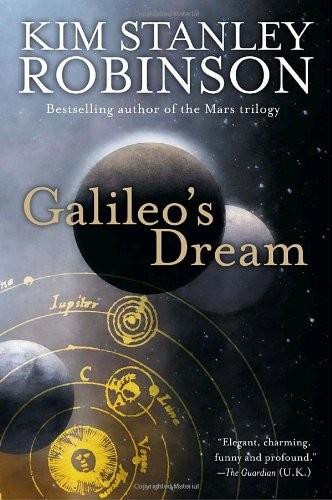
Galileo's Dream
by
Kim Stanley Robinson
Published 29 Dec 2009
Galileo bowed in return, took the offered hand, and squeezed; it was narrow and long, like the man’s face. In guttural Latin, very strangely accented, the stranger croaked, “Are you Domino Signor Galileo Galilei, professor of mathematics at the University of Padua?” “I am. Who are you?” The man let go of his hand. “I am a colleague of Johannes Kepler. He and I recently examined one of your very useful military compasses.” “I am glad to hear it,” Galileo said, surprised. “I have corresponded with Signor Kepler, as he probably told you, but he did not write to me about this. When and where did you meet him?” “Last year, in Prague.” Galileo nodded.
…
I was quite sure that you would see them, they are so prominent, and you such an experienced astronomer. And I can tell you that on my journey to Rome I have made good progress in determining the period of orbit of all four of these new moons.” Grienberger and Maelcote raised their eyebrows and exchanged glances, but Clavius only smiled. “I think here we are in rare agreement with Johannes Kepler, that establishing their periods of rotation will be very difficult.” “But …” Galileo hesitated, then realized he had made a mistake, and dropped the matter with a wave of the hand. There was no point in making announcements in advance of results; indeed, since he was intent on being the first to make every discovery having to do with the new stars, he should not be inciting competitors to further effort.
…
Galileo glanced at her in surprise; she was staring wildly at him. “Because we killed its daughter,” he suggested. CHAPTER FIFTEEN The Two Worlds The die is cast, and I am writing the book to be read either now or by posterity, it matters not. It can wait a century for a reader, as God himself has waited six thousand years for a witness. —JOHANNES KEPLER, Harmonies of the World HE WOKE SO STIFF HE COULD NOT MOVE, feeling the pressure of full bowel and full bladder, which seemed to be in competition with each other to shove their way out of his second asshole. He was in his bed. Cartophilus was staring him in the face with his peculiar look—either knowing or intensely curious, it was impossible for Galileo to say.
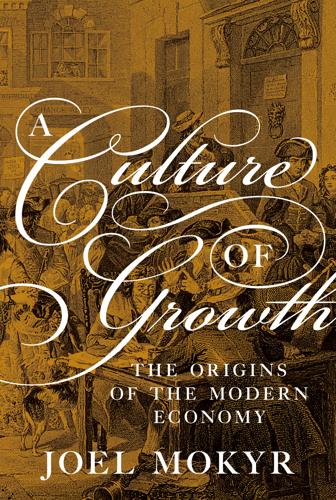
A Culture of Growth: The Origins of the Modern Economy
by
Joel Mokyr
Published 8 Jan 2016
An example is the Spanish physician Miguel Servetus, who had decided at an early age that the doctrine of Trinity was false, and after he studied medicine this led him to reject, as a parallel, the triadic structure of body functions (nutrition, muscular activity, and mental activity) that was part of the Galenian medical orthodoxy of his time (Mason, 1992, p. 8). Such astronomers as Johannes Kepler and physicists as William Gilbert, after accepting the heliocentric hypothesis, suggested that God might be living in the sun, the center of the Universe.22 All over seventeenth-century Europe, science and religion discovered a range of possible symbiotic relations. In England this was expressed in the deep Anglican beliefs of Robert Boyle and the somewhat eccentric but deeply felt religious sentiments of Newton.
…
Much of it was handed out by the princes and kings of Europe who collected intellectuals at their courts in part just for prestige reasons. The otherwise rather inept Habsburg Emperor Rudolf II (ruled 1572–1612) collected a large number of scientists and artists at his court in Prague (at that time the Imperial capital). The astronomers Tycho Brahe and Johannes Kepler were both members of the Habsburg court, as was Carolus Clusius, né Charles de l’Écluse (1526–1609). Clusius, one of the founders of modern botany, was by all accounts a paradigmatic member of the sixteenth-century Republic of Letters: cosmopolitan, widely traveled, extremely well connected, he worked for both Rudolf II and Rudolf’s father Maximilian II (Evans, 1973, pp. 119–20).43 Galileo was perhaps the most famous case: in 1610 he was appointed as court mathematician and philosopher by Grand Duke Cosimo II of Florence, and as such he was free to pursue his research (as long as it did not conflict too much with religious doctrine—but that is another story).
…
Yet, as we have already seen, Britain gave as good as it got. While Puritanism was a very British phenomenon, the science that it created easily disseminated abroad, and the irrelevance of national boundaries marks the scientific contributions of scholars from Boyle and Wallis to Kepler and Leeuwenhoek. Johannes Kepler was a pious Lutheran, as was Tycho Brahe. Catholic scholars contributed much to the development of science and its practical applications in this age. This is not just true for lay Catholics such as Galileo, Cassini, and Descartes, but also of Jesuits, who played an important role in early modern science.

Power and Progress: Our Thousand-Year Struggle Over Technology and Prosperity
by
Daron Acemoglu
and
Simon Johnson
Published 15 May 2023
They also have the computing power to crunch vast amounts of data in a way that even thirty years ago would have seemed like fantasy. Scientific inquiry is cumulative, with inventors building on each other’s work. Unlike today, knowledge used to diffuse slowly. In the 1600s, scholars such as Galileo Galilei, Johannes Kepler, Isaac Newton, Gottfried Wilhelm Leibniz, and Robert Hooke shared their scientific discoveries in letters that took weeks or even months to reach their destination. Nicolaus Copernicus’s heliocentric system, which correctly placed Earth in the orbit of the sun, was developed during the first decade of the sixteenth century.
…
Ptolemy’s system was criticized by Muslim scholars starting about 1000 ce, but they never fully abandoned the idea that the Earth was at the center of everything. Heliocentrism in its modern form began to be developed by Nicolaus Copernicus in the early 1500s; it was significantly advanced by Johannes Kepler at the start of the 1600s and by Galileo Galilei shortly after. It then took decades for these ideas and their implications to spread through European scientific circles. Newton’s Principia, which built on and extended Galileo’s and Kepler’s ideas, was published in 1687. In 1822 even the Catholic Church accepted that the Earth revolves around the sun.
…
He was immediately thrown into practical work with his father and others engaged in engineering to solve real-world problems in mining, surveying, and engine building. Even more importantly, scientific advances, by themselves, cannot explain why the Industrial Revolution was British. The Scientific Revolution was a thoroughly pan-European affair. Boyle, Hooke, and Newton were English, but many of the most innovative thinkers of this revolution, such as Johannes Kepler, Nicolaus Copernicus, Galileo Galilei, Tycho Brahe, and René Descartes, never set foot in Britain. They communicated among themselves and with their English peers in Latin, underscoring the Europe-wide nature of this enterprise. Equally, Europe was not even unique in experiencing an extended period of scientific breakthroughs.
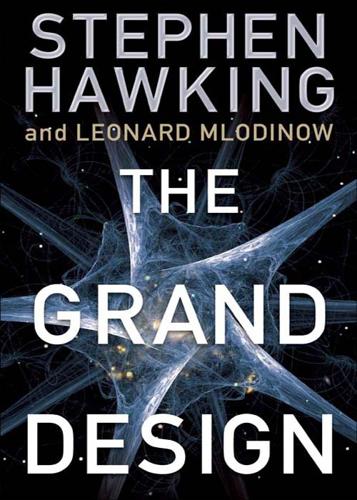
The Grand Design
by
Stephen Hawking
and
Leonard Mlodinow
Published 14 Jun 2010
In the thirteenth century the early Christian philosopher Thomas Aquinas (ca. 1225–1274) adopted this view and used it to argue for the existence of God, writing, “It is clear that [inanimate bodies] reach their end not by chance but by intention…. There is therefore, an intelligent personal being by whom everything in nature is ordered to its end.” Even as late as the sixteenth century, the great German astronomer Johannes Kepler (1571–1630) believed that planets had sense perception and consciously followed laws of movement that were grasped by their “mind.” The notion that the laws of nature had to be intentionally obeyed reflects the ancients’ focus on why nature behaves as it does, rather than on how it behaves. Aristotle was one of the leading proponents of that approach, rejecting the idea of science based principally on observation.
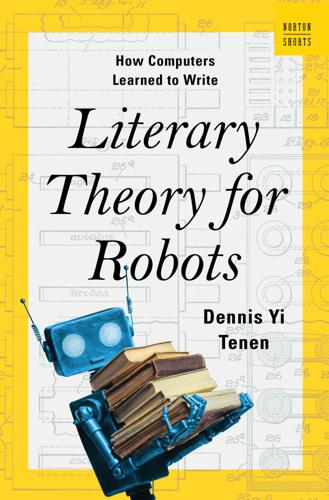
Literary Theory for Robots: How Computers Learned to Write
by
Dennis Yi Tenen
Published 6 Feb 2024
Chapter 3 Smart Cabinets Two German baroque poets walked into a bar. Well, more like, one was a poet and the other a scholar. And they corresponded by letter. Athanasius Kircher, a neat man in his forties, spoke and dressed plainly. An established figure by the time of their virtual meeting, he was slated to take Johannes Kepler’s place at Habsburg court as the royal mathematician. In years past, he had taught mathematics and ancient languages at Wurzburg. Fate found him at the Collegio Romano in Italy, where his research program expanded to cover geology, chemistry, and biology. The eager attention from a flamboyant younger admirer clearly annoyed him.
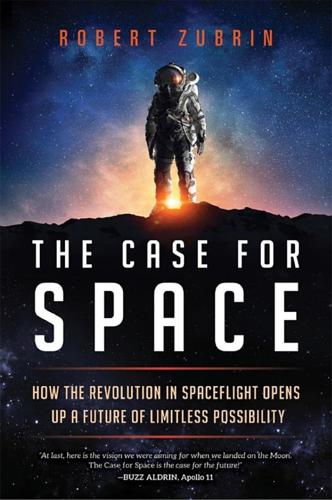
The Case for Space: How the Revolution in Spaceflight Opens Up a Future of Limitless Possibility
by
Robert Zubrin
Published 30 Apr 2019
This would get a ship to Alpha Centauri in about five years, which would seem like three to the crew due to the effects of relativistic time dilation. But the society that launched such a mission would have to be one that was so rich that cost was simply not an issue. LIGHT SAILS Nearly four hundred years ago, the famous German astronomer Johannes Kepler observed that regardless of whether a comet is moving toward or away from the sun, its tail always points away from the sun. This caused him to guess that light emanating from the sun exerts a force that pushes the comet's tail away. He was right, although the fact that light exerts force had to wait till 1901 to be proven by Russian physicist Peter N.
…
It is also the basis of our highest notions of law—the natural law determinable as justice by human conscience and reason, put forth, for example, in the US Declaration of Independence (“We hold these truths to be self-evident…”)—from which we draw our belief that the fundamental rights of humans exist independent of any laws that may or may not be on the books or existing accepted customs. It is also the basis for science, our search for universal truth through the tools of reason. As the great Renaissance scientist Johannes Kepler, the discoverer of the laws of planetary motion, put it, “Geometry is one and eternal, a reflection out of the mind of God. That mankind shares in it is one reason to call man the image of God.” In other words, the human mind, because it is the image of God, is able to understand the laws of the universe.
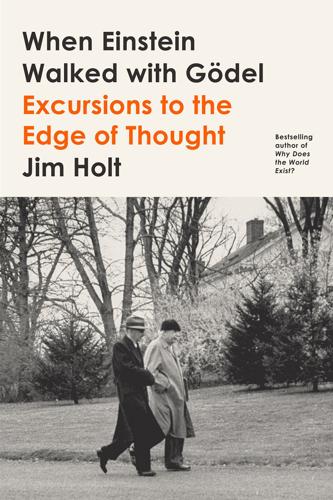
When Einstein Walked With Gödel: Excursions to the Edge of Thought
by
Jim Holt
Published 14 May 2018
Using an assumed name and furnished with fake papers, Mandelbrot pretended to be an apprentice toolmaker in a hardscrabble village in Limousin (where a trace of the rural accent was added to his mix of slum Parisian and correct French). After a close brush with arrest, he made his way to Lyon, where, under the nose of Klaus Barbie, he refined his geometric gift with the help of an inspired teacher at the local lycée. During this time, Mandelbrot conceived what he calls his “Keplerian quest.” Three centuries earlier, Johannes Kepler had made sense of the seemingly irregular motions of the planets by a single geometric insight: he posited that their orbits, instead of being circular as had been supposed since ancient times, took the form of an ellipse. As a teenager, Mandelbrot “came to worship” Kepler’s achievement and aspired to do something similar—to impose order on an inchoate area of science through a bold geometric stroke.
…
Neoplatonists like Plotinus and early Christian theologians like Saint Augustine restored the infinite to respectability by identifying it with God. Medieval philosophers spent even more time engaged in disputation over the infinitely small than over the infinitely great. With the revival of Platonism during the Renaissance, the infinitesimal began to creep back into mathematics, albeit in a somewhat mystical way. For Johannes Kepler, the infinitely small existed as a divinely given “bridge of continuity” between the curved and the straight. Untroubled by logical niceties—“Nature teaches geometry by instinct alone, even without ratiocination,” he wrote—Kepler employed infinitesimals in 1612 to calculate the ideal proportions for that important thing, a wine cask.
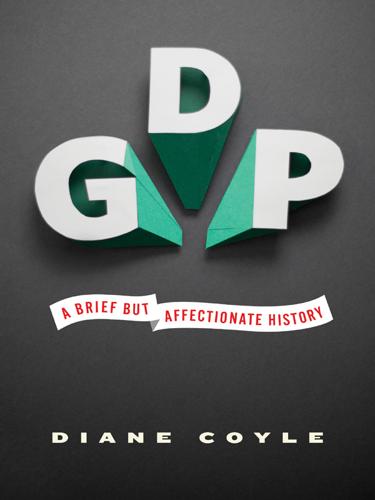
GDP: A Brief but Affectionate History
by
Diane Coyle
Published 23 Feb 2014
Clyde Haberman, “For Italy’s Entrepreneurs, the Figures Are Bella,” New York Times, 16 July 1989, http://www.nytimes.com/1989/07/16/magazine/for-italy-s-entrepreneurs-the-figures-are-bella.html?pagewanted=all&src=pm. 25. Friedrich Schneider, “Size and Development of the Shadow Economy of 31 European and 5 Other OECD Countries from 2003 to 2012: Some New Facts,” Johannes Kepler University, December 2011, http://www.econ.jku.at/members/Schneider/files/publications/2012/ShadEcEurope31.pdf. See also Friedrich Schneider with Dominik Enste, “Hiding in the Shadows: The Growth of the Underground Economy,” International Monetary Fund, March 2002, http://www.imf.org/external/pubs/ft/issues/issues30/index.htm#3. 26. http://www-2009.timeuse.org/information/studies/. 27.
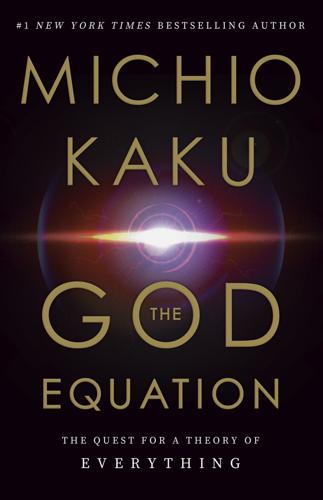
The God Equation: The Quest for a Theory of Everything
by
Michio Kaku
Published 5 Apr 2021
Darkness spread over the Western world, and scientific inquiry was largely replaced by belief in superstition, magic, and sorcery. Rebirth During the Renaissance In the seventeenth century, a few great scientists rose to challenge the established order and investigate the nature of the universe, but they faced stiff opposition and persecution. Johannes Kepler, who was one of the first to apply mathematics to the motion of the planets, was an imperial adviser to Emperor Rudolf II and perhaps escaped persecution by piously including religious elements in his scientific work. The former monk Giordano Bruno was not so lucky. In 1600, he was tried and sentenced to death for heresy.
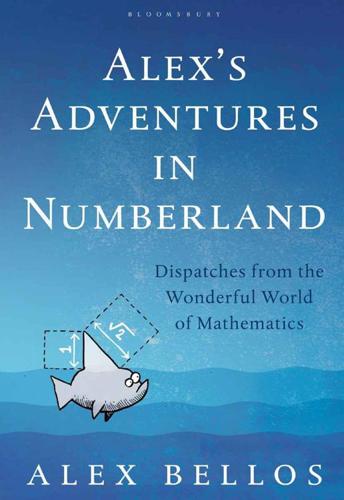
Alex's Adventures in Numberland
by
Alex Bellos
Published 3 Apr 2011
Using Napier’s invention, not only could multiplication be made into the addition of logs, but division was made into the subtraction of logs; calculating of square roots was made into the division of logs by two; and calculating cube roots, into the division of logs by three. The convenience that logarithms brought made them the most significant mathematical invention of Napier’s time. Science, commerce and industry benefited massively. The German astronomer Johannes Kepler, for example, used logs almost immediately to calculate the orbit of Mars. It has recently been suggested that he might not have discovered his three laws of celestial mechanics without the ease of calculation offered by Napier’s new numbers. In his 1614 book A Description of the Admirable Table of Logarithmes, Napier used a slightly different version of logarithms than those used in modern mathematics.
…
Though it is not that obvious to the naked eye, there is a long thin gap along the middle diagonal with an area of one unit. It follows that a square of 169 unit squares (13 × 13) can be rearranged to ‘make’ a rectangle of 168 squares (8 × 21). In this case the segments overlap slightly along the middle diagonal. In the early seventeenth century, the German astronomer Johannes Kepler wrote that: ‘As 5 is to 8, so 8 is to 13, approximately, and as 8 to 13, so 13 is to 21, approximately.’ In other words, he noticed that the ratios of consecutive F-numbers were similar. A century later the Scottish mathematician Robert Simson saw something even more incredible. If you take the ratios of consecutive F-numbers and put them in the sequence: which is: or (to three decimal places): 1, 2, 1.5, 1.667, 1.6, 1.625, 1.615, 1.619, 1.618… then the values of these terms get closer and closer to phi, the golden ratio.
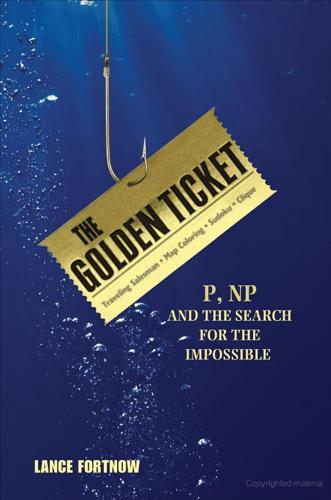
The Golden Ticket: P, NP, and the Search for the Impossible
by
Lance Fortnow
Published 30 Mar 2013
And as I observed that in the words “I think, therefore I am”, there is nothing at all which gives me assurance of their truth beyond this, that I see very clearly that in order to think it is necessary to exist, I concluded that I might take, as a general rule, the principle, that all the things which we very clearly and distinctly conceive are true, only observing, however, that there is some difficulty in rightly determining the objects which we distinctly conceive. Descartes, Discourse, Part IV A contemporary of Descartes, Johannes Kepler, examined planetary motion and derived a set of rules that described the path and speed of planets in their orbits. Kepler had no simple description of why planets followed these rules. Isaac Newton applied the principle of Occam’s razor to the physical world. Newton’s famous laws of motion gave very simple rules on how objects react. 1.

On the Future: Prospects for Humanity
by
Martin J. Rees
Published 14 Oct 2018
Such data reveal two things: the interval between successive dimmings tells us the length of the planet’s year, and the amplitude of the dimming tells us what fraction of the star’s light a planet blocks out during the transit, and therefore how big it is. The most important search (so far) for transiting planets was carried out by a NASA spacecraft named after astronomer Johannes Kepler,4 which spent more than three years measuring the brightness of 150,000 stars, to a precision of one part in 100,000—it did this once or more times an hour for each star. Kepler found thousands of transiting planets, some no bigger than Earth. The prime mover behind the Kepler project was Bill Borucki, an American engineer who had worked for NASA since 1964.
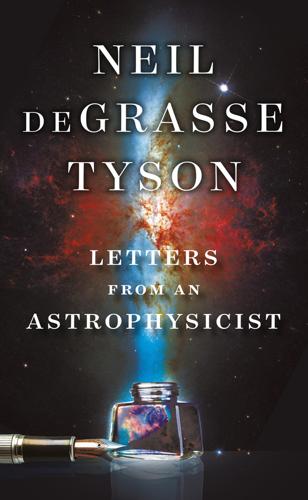
Letters From an Astrophysicist
by
Neil Degrasse Tyson
Published 7 Oct 2019
‡ James McGaha (USAF Retired) is an acquaintance and fellow skeptic, with a long history of debunking claims that UFOs are visiting aliens. Here, I rein in his skepticism . . . just a bit. § The US military budget for 2004 was $400 billion. Since then, the budget has increased to $600 billion, by far the largest in the world. Three times that of the next country (China) and more than the next ten countries combined. ¶ Johannes Kepler, a German astronomer and mathematician (1571–1630). # Sir Francis Bacon (1561–1626), English scientist, philosopher, and statesman. ** M. Griaule and G. Dieterlen, The Pale Fox (Baltimore, MD: Afrikan World Books, 1986). †† Ivan Van Sertima, Blacks in Science: Ancient and Modern (Abingdon-on-Thames, UK: Transaction Books [now Routledge], 1991). ‡‡ Of course natural history as a topic of interest goes way back.

The Pleasures and Sorrows of Work
by
Alain de Botton
Published 1 Apr 2009
Though there had certainly been a loss of colour and novelistic detail in the passing of the age of geniuses, there was perhaps something greater and more reassuring in our graduation to a time of collective effort, for it meant that never again would the fate of planetary exploration depend to a hazardous degree on such unpredictable variables as the mood of Johannes Kepler’s wife, Barbara, or the inclinations of his patron Emperor Rudolf II – though the German astronomer, like many of his fellow geniuses, had at least provided Kourou with a name for one of its dispiriting streets, a rectangle of waste ground bordered by a dry cleaner at one end and a burnt-out Internet café at the other, a matter in which the collated proponents of later discoveries would perhaps never be quite so obliging. 6.

Radical Uncertainty: Decision-Making for an Unknowable Future
by
Mervyn King
and
John Kay
Published 5 Mar 2020
Although Mercury is on average ‘only’ 60 million miles from Earth, 2 the rocket travelled 4.9 billion miles at a speed of 84,500 mph before it finally entered its investigative orbit of the planet, according to plan, in March 2011. 3 This remarkable feat of computation was possible because: the equations of planetary motion have been comprehensively understood since the seventeenth century, thanks to Johannes Kepler and his successors; the equations of planetary motion are stationary, in the sense that those equations governed their motion for millions of years before Kepler’s discoveries and have continued to govern them since (‘stationary’ is a technical term in mathematics and statistics and does not relate to the movements of the planets themselves but to the underlying determinants of planetary motion, which do not change over time: we will make frequent use of the word ‘stationary’ in this sense); 4 the motion of the planets is not significantly affected by human actions 5 or at all by human beliefs about their motion.
…
And while Keynes’ description of Planck’s deductive reasoning is accurate, the knowledge of the solar system which lies behind NASA’s success originates not in axiomatic reasoning but in the careful and extensive observation of the planets undertaken in the sixteenth century by the Danish nobleman Tycho Brahe. His data collection was subsequently analysed by the German mathematician Johannes Kepler, with whom Brahe collaborated at the end of his life. Physics is inductive as well as deductive. But the underlying stationarity of physical processes reduces the need for abductive reasoning. Economists, however, face unique situations, such as the one encountered in the last months of 2008, and must make ‘inference to best explanation’.

The Interior Design Handbook
by
Frida Ramstedt
Published 27 Oct 2020
By dividing the interiors or surfaces you are working with into thirds rather than into halves, you will find that you can create balance and harmony for the eye. “Geometry has two great treasures: one is the theorem of Pythagoras; the other, the division of a line into extreme and mean ratio.” —Johannes Kepler Triangles and Three-Point Thinking Once you start detecting and analyzing visual triangles in interior design illustrations, you will find them everywhere—enough to make your head spin! Designers, stylists, and photographers frequently use triangles, or what is called three-point thinking, in their work: it is not complicated to do, and it often leads to excellent results, so it’s a useful technique for amateurs to imitate.
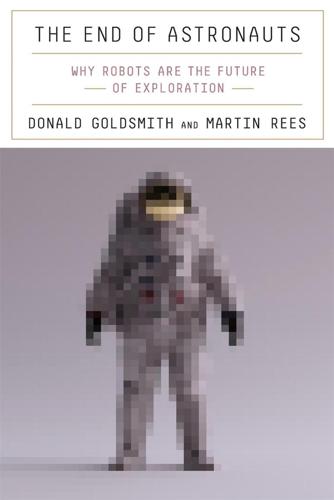
The End of Astronauts: Why Robots Are the Future of Exploration
by
Donald Goldsmith
and
Martin Rees
Published 18 Apr 2022
If the moon resembles the Earth, Galileo argued, the planets must do so as well. With the moon’s surface subject to detailed inspection, thoughts of voyages through space naturally tended toward our closest celestial neighbor. The first science fiction story, written by Galileo’s great contemporary Johannes Kepler though published only after Kepler’s death, carries the title “Somnium” (Dream). Its protagonist travels in a dream to Levania, the moon (in Hebrew, the name connotes the whiteness of the full moon), where he notes correctly that one-half of the moon’s population, because they inhabit the side of the moon that always faces away from the Earth, never has the chance to see our blue planet.
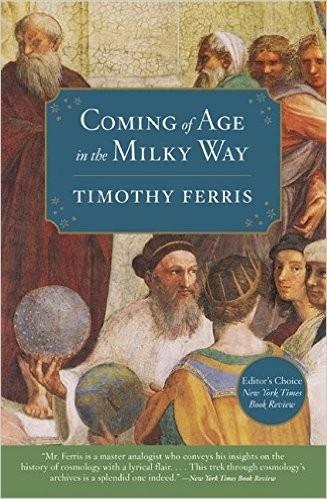
Coming of Age in the Milky Way
by
Timothy Ferris
Published 30 Jun 1988
Needed was someone with the ingenuity and perservance to compose Tycho’s tables into a single, accurate and simple theory. Tycho proposed a compromise between the Copernican and Ptolemaic models in which the sun orbited the earth, and was in turn orbited by the other planets. (Not to scale.) Amazingly, just such a man turned up. He was Johannes Kepler, and on February 4, 1600, he arrived at Benatek Castle near Prague, where Tycho had moved his observatory and retinue after his benefactor King Frederick drank himself to death. Tycho and Kepler made for unlikely collaborators, with each other or anybody else. Tycho was an expansive, despotic giant of a man, who sported a belly of Jovian proportions and a gleaming, metal-alloy nose (the bridge of his original nose having been cut off in a youthful duel).
…
The Anthropic Cosmological Principle. London: Oxford University Press, 1986. Barut, Asim O., Alwyn van der Merwe, and Jean-Pierre Vigier, eds. Quantum, Space, and Time—The Quest Continues. London: Cambridge University Press, 1984. Essays in honor of de Broglie, Dirac, and Wigner. Baumgardt, Carola. Johannes Kepler, Life and letters. New York: Philosophical Library, 1951. Beaglehole, J.C. The Exploration of the Pacific. London: Black, 1966. Beazley, Charles Raymond. Prince Henry the Navigator. New York: Putnam’s, 1904. Beer, Arthur, and K.A. Strand, eds. Copernicus: Yesterday and Today. New York: Pergamon, 1975, Beiser, Arthur.
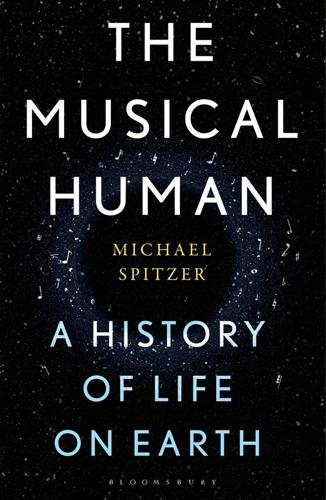
The Musical Human: A History of Life on Earth
by
Michael Spitzer
Published 31 Mar 2021
Ceremonies have their being in the hierarchical gradations between Heaven and Earth. Music-making starts from Heaven, and the ceremonies are fixed by means of the Earth.37 Fast-forward to the English mystic Robert Fludd, in his 1617 treatise Utriusque Cosmi (The Origin and Structure of the Cosmos), or to the astronomer Johannes Kepler’s 1619 Harmonices Mundi (The Harmony of the World), and nothing much has changed.38 A cutting-edge example of universal harmony is the Quantum Music Project being conducted even now by a group of scientists and music theorists based in Oxford and the Serbian Academy of Sciences and Arts in Belgrade, led by Dr Ivana Medic.39 The group investigates musical properties in the basic principles of quantum physics.
…
The Indians formerly known by outsiders as ‘Suyá’ now insist on the name they call themselves, which is Kisedje. 33Beverley Diamond, ‘Native American ways of (music) history’, in Philip Bohlman (ed.), The Cambridge History of World Music (Cambridge: Cambridge University Press, 2013), pp. 155–79 (p. 165). 34Gary Tomlinson, ‘Musicology, Anthropology, History’, Il Saggiatore musicale 8/1 (2001), pp. 21–37. 35John Nicholson, Songlines and Stone Axes (Sydney: Allen & Unwin, 2007). 36Kermit Ernest Campbell, Gettin’ our Groove on: Rhetoric, Language, and Literacy for the Hip Hop Generation (Detroit: Wayne State University Press, 2005). 37Lothar von Falkenhausen, Suspended Music: Chime-Bells in the Culture of Bronze Age China (Berkeley: University of California Press, 1993), p. 3. 38Joscelyn Goodwin, Robert Fludd: Hermetic Philosopher and Surveyor of Two Worlds (Newburyport, Mass.: Phanes Press, 1991); Johannes Kepler, The Harmony of the World (Philadelphia: The American Philosophical Society, 1997). 39http://quantummusic.org/ 40Tristram Kidder, Liu Haiwang, Michael Storozum and Qin Zhen, ‘New Perspectives on the Collapse and Regeneration of the Han Dynasty’, in Ronald Faulseit (ed.), Beyond Collapse: Archaeological Perspectives on Resilience, Revitalization, and Transformation in Complex Societies (Carbondale: Southern Illinois University, 2015), pp. 70–98; Erica Fox Brindley, Music, Cosmology, and the Politics of Harmony in Early China (Albany: SUNY Press, 2012). 41Christopher Page, The Christian West and its Singers: The First Thousand Years (New Haven: Yale University Press, 2010). 42Michael Tenzer, Balinese Music (Berkeley: Periplus Editions), p. 20. 43Kofi Agawu, Representing African Music: Postcolonial Notes, Queries, Positions (New York: Routledge, 2003), p. 3. 44Iain Morley, The Prehistory of Music: Human Evolution, Archaeology, and the Origins of Musicality (New York: Oxford University Press, 2013). 45Steven Feld, Sound and Sentiment: Birds, Weeping, Poetics, and Song in Kaluli Expression (Philadelphia: University of Pennsylvania Press, 1982). 46John Iliffe, Africans: The History of a Continent (Cambridge: Cambridge University Press, 1995), p. 120. 47Joachim Braun, Music in Ancient Israel/Palestine: Archaeological, Written, and Comparative Sources (Cambridge: William B.
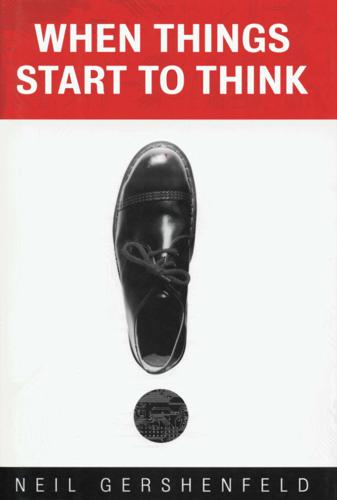
When Things Start to Think
by
Neil A. Gershenfeld
Published 15 Feb 1999
This raised the striking possibility that weather forecasts are so bad because it's fundamentally not possible to predict the weather, rather than because the forecasters are not clever enough. Like all good scientific discoveries, the seeds of Lorenz's observation can be found much earlier. Around 1600 Johannes Kepler (a devout Lutheran) was trying to explain the observations of the orbits of the planets. His first attempt, inspired by Copernicus, matched them to the diameters of nested regular polyhedra (a pyramid inside a cube ... ). He published this analysis in the Mysterium Cosmographicum, an elegant and entirely incorrect little book.
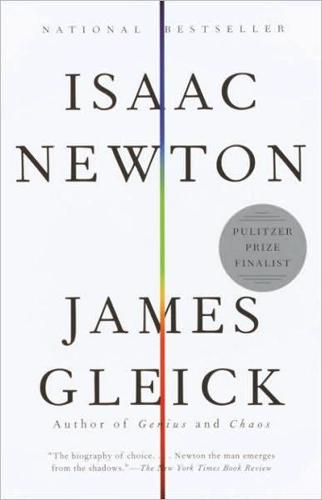
Isaac Newton
by
James Gleick
Published 1 Jan 2003
In 1543, just before his death, Nicolaus Copernicus, Polish astronomer, astrologer, and mathematician, published the great book De Revolutionibus Orbium Coelestium (“On the Revolutions of the Heavenly Spheres”). In it he gave order to the planets’ paths, resolving them into perfect circles; he set the earth in motion and placed an immobile sun at the center of the universe.4 Johannes Kepler, looking for more order in a growing thicket of data, thousands of painstakingly recorded observations, declared that the planets could not be moving in circles. He suspected the special curves known to the ancients as ellipses. Having thus overthrown one kind of celestial perfection, he sought new kinds, believing fervently in a universe built on geometrical harmony.
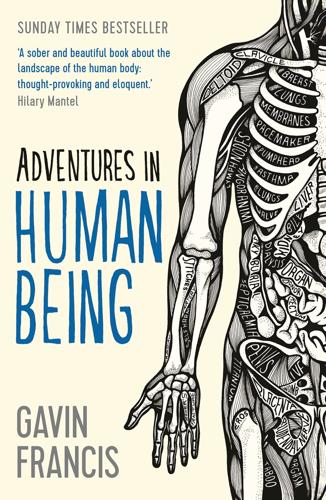
Adventures in Human Being (Wellcome)
by
Gavin Francis
Published 28 Apr 2015
In the thirteenth century the English philosopher Roger Bacon hedged his bets: the soul reaches out from the lens in a projection which ‘ennobles’ our environment, but that environment projects itself back into the eyes. By the seventeenth century, classical perspectives on vision were giving way. Astronomers, whose very business was the elucidation and understanding of light, were peering into the eye in order to better comprehend the stars. The astronomer-mystic Johannes Kepler was the first to write about how an image of the world was projected upside down and back to front onto the retina. When Isaac Newton was working out the motion of the planets around the sun he embarked on dramatic experiments to test the reliability of his own vision. Inserting a long blunt needle (a ‘bodkin’) into his own eye socket between the bone and the eyeball, he described how wiggling it around distorted his vision.
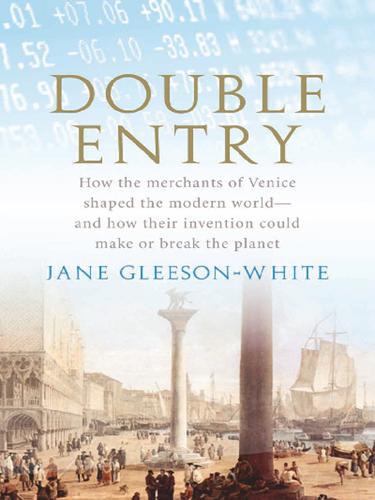
Double Entry: How the Merchants of Venice Shaped the Modern World - and How Their Invention Could Make or Break the Planet
by
Jane Gleeson-White
Published 14 May 2011
Journals Achenbach, Joel, ‘All the president’s pennies: Washington, the meticulous businessman’, Sydney Morning Herald, 17–18 October 2009. Ahrens, Frank, ‘For Wall Street’s math brains, miscalculations’, Washington Post, 21 August 2007. Bushaw, Donald W., ‘Rediscovering the Archimedean Polyhedra: Piero della Francesca, Luca Pacioli, Leonardo da Vinci, Albrecht Dürer, Daniele Barbaro and Johannes Kepler’, The College of Mathematicians Journal, Washington, vol. 29, issue 2, March 1998, pp. 176–88. Calhoun, Ada, ‘Count her in: Denise Schmandt-Besserat’s new way of seeing’, The Austin Chronicle, 10 December 1999. Carruthers, Bruce G. and Wendy Nelson Espeland, ‘Accounting for rationality: Double-entry bookkeeping and the rhetoric of economic rationality’, American Journal of Sociology, vol. 97, no. 1, July 1991, pp. 31–69.
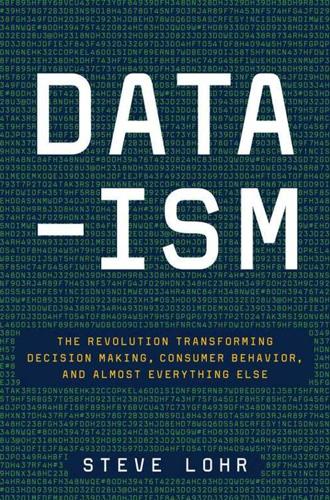
Data-Ism: The Revolution Transforming Decision Making, Consumer Behavior, and Almost Everything Else
by
Steve Lohr
Published 10 Mar 2015
Theory has not ended, it is expanding into new forms.” The virtue of the measurements-plus-models approach was evident well before there were computers. In his “Measurement Without Theory” essay, Koopmans cited the collaboration, starting in 1600, between the early astronomers Tycho Brahe and Johannes Kepler. They were exploring the movements of the planets, and Koopmans pointed to their work together as an ideal example of “a case where the empirical approach paved the way for the discovery of fundamental laws.” When they began, the prevailing theory, firmly held by Kepler and others, was that the planets orbited the sun in circular paths.
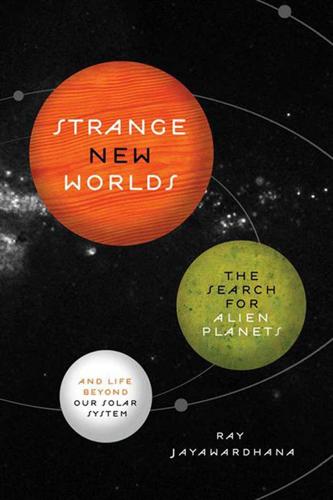
Strange New Worlds: The Search for Alien Planets and Life Beyond Our Solar System
by
Ray Jayawardhana
Published 3 Feb 2011
As Venus passes in front of the Sun, taking several hours to do so, it appears as a black dot about one-thirtieth the solar diameter. It’s big enough to be seen with the (properly protected) naked eye, but there are no records of a transit being observed before the invention of the telescope early in the seventeenth century. That’s not too surprising given the rarity of the event. In 1629 Johannes Kepler, as he investigated the laws of planetary motion, realized that transits of both Venus and Mercury would occur two years later. Unfortunately, he didn’t live to see either, and the Venus transit of 1631 was not visible from Europe in any case. But European astronomers were able to observe the transit of Mercury in November that year, vindicating Kepler’s prediction.

The Right Side of History
by
Ben Shapiro
Published 11 Feb 2019
[Yet] when I consider what marvelous things and how many of them men have understood, inquired into, and contrived, I recognize and understand only too clearly that the human mind is a work of God’s, and one of the most excellent.”4 Galileo was no exception. He was a representative of the rule: religious men saw a duty to examine the universe, and to do so with the best possible methodology. This philosophy permeated the wisdom of the Enlightenment’s greatest scientists. Johannes Kepler (1571–1630), the discoverer of the laws of planetary motion, explained: “The chief aim of all investigations of the external world should be to discover the rational order and harmony which has been imposed on it by God and which He revealed to us in the language of mathematics.”5 Kepler routinely described his own physics as part and parcel of Aristotelian metaphysics, and explained that the laws of nature “are within the grasp of the human mind.

In the Land of Invented Languages: Adventures in Linguistic Creativity, Madness, and Genius
by
Arika Okrent
Published 1 Jan 2009
What was that thing three clauses ago that I'm now supposed to add to this thing? Late-sixteenth-century scientists who were engaged in calculating the facts of the universe had a sense that the important ideas, the truths behind the calculations, were struggling against the language in which they were trapped. The astronomer Johannes Kepler had turned to musical notation (already well developed at that time) in an effort to better express his discoveries about the motions of the planets, yielding “the harmony of the spheres.” But musical notation could only go so far. The development of mathematical notation in this context was nothing short of revolutionary.
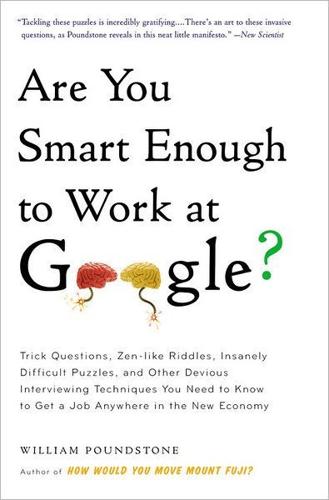
Are You Smart Enough to Work at Google?: Trick Questions, Zen-Like Riddles, Insanely Difficult Puzzles, and Other Devious Interviewing Techniques You ... Know to Get a Job Anywhere in the New Economy
by
William Poundstone
Published 4 Jan 2012
You’ll notice that many Fermi questions involve spherical sports equipment filling a bus, swimming pool, jet plane, or sports stadium. You can score a bonus by mentioning Kepler’s conjecture. In the late 1500s, Sir Walter Raleigh asked the English mathematician Thomas Harriot to devise the best way to stack cannonballs on British navy ships. Harriot mentioned the problem to his friend, the astronomer Johannes Kepler. Kepler in turn supposed that the densest way of packing spheres was the one already used for cannonballs and fruit. Start with a flat layer of spheres in a hexagonal array; then put another layer on top of that, fitting each new sphere into the depressions between three spheres on the lower layer.
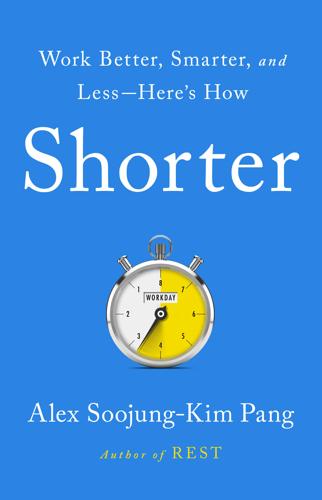
Shorter: Work Better, Smarter, and Less Here's How
by
Alex Soojung-Kim Pang
Published 10 Mar 2020
New Data Show American Commute Times Are Longer,” Here and Now, September 20, 2018, www.npr.org/2018/09/20/650061560/stuck-in-traffic-youre-not-alone-new-data-show-american-commute-times-are-longer; Helen Flores, “Government Urged to Try 4-Day Work Week Amid Traffic,” Philippine Star, August 20, 2018, www.philstar.com/headlines/2018/08/20/1844163/government-urged-try-4-day-work-week-amid-traffic; “4-Day Workweek Possible in BPO, Say Stakeholders,” Business Mirror, September 25, 2018, https://businessmirror.com.ph/2018/09/25/4-day-workweek-possible-in-bpo-say-stakeholders/. Environmental Impacts. See Juliet Schor, “Sustainable Consumption and Worktime Reduction,” Working Paper No. 0406, Johannes Kepler University of Linz, Department of Economics (2004), www.econstor.eu/bitstream/10419/73279/1/wp0406.pdf; Anders Hayden and John M. Shandra, “Hours of Work and the Ecological Footprint of Nations: An Exploratory Analysis,” Local Environment 14, no. 6 (2009): 575–600, https://doi.org/10.1080/13549830902904185; François-Xavier Devetter and Sandrine Rousseau, “Working Hours and Sustainable Development,” Review of Social Economy 69, no. 3 (2011): 333–355, https://doi.org/10.1080/00346764.2011.563507; Carlo Aall et al., “Leisure and Sustainable Development in Norway: Part of the Solution and the Problem,” Leisure Studies 30, no. 4 (2011): 453–476, https://doi.org/10.1080/02614367.2011.589863; Kyle W.

12 Bytes: How We Got Here. Where We Might Go Next
by
Jeanette Winterson
Published 15 Mar 2021
We have dreamed about leaving Planet Earth since we have dreamed – and, as with all our dreams, like flying, like going to the bottom of the sea, like speaking to someone on the other side of the earth, this space-dream will come true. What we have to watch is: who is in charge of the dream? I am not convinced that Elon Musk is the man for the dream-job. Johannes Kepler (1571–1630) disguised his heretical laws of planetary motion in a work of fiction about an Icelander who gets airlifted to the moon. Daniel Defoe, the Robinson Crusoe man, with form for getting stranded in alien environments, invented a fictional machine called the Combinator, that made journeys from China to the moon.
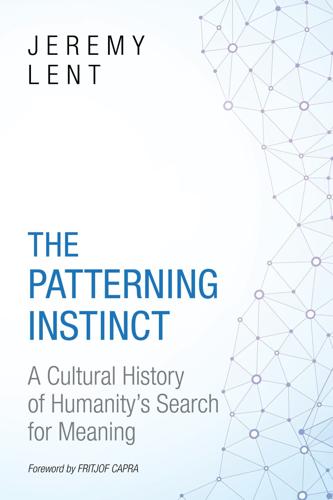
The Patterning Instinct: A Cultural History of Humanity's Search for Meaning
by
Jeremy Lent
Published 22 May 2017
Nicholas Oresme in the fourteenth century was the first to conceive of the world as a vast clock; he referred to God as having created the heavens with its functions “so tempered, and so harmonized that…the situation is much like that of a man making a clock and letting it run and continue its own motion by itself.”19 For the pioneers of the Scientific Revolution, the image of nature as a machine proved irresistibly attractive. Johannes Kepler framed his entire life's work on the metaphor, writing to a friend in 1605, “My aim is to show that the celestial machine is to be likened not to a divine organism but to a clockwork.” The metaphor became so entrenched in the burgeoning scientific worldview that it began to lose its metaphoric character and be used as if it were reality.
…
The Renaissance, which is conventionally viewed as a drastic break from the past, was, rather, a flowering of the growth in learning that had been accumulating over centuries.28 The vision of God's laws as a geometric harmony, and the ambition of tapping into divine consciousness by understanding them, drove the intellectual breakthroughs that created the modern scientific conception of the universe. Johannes Kepler based a radical new theory of planetary motion on this belief. Kepler was an ardent Platonist with a mystical vision of divine geometry. He wrote in the preface of his first major work that he would demonstrate that God did, in fact, create his universe on the basis of geometry, exactly as Plato had speculated.
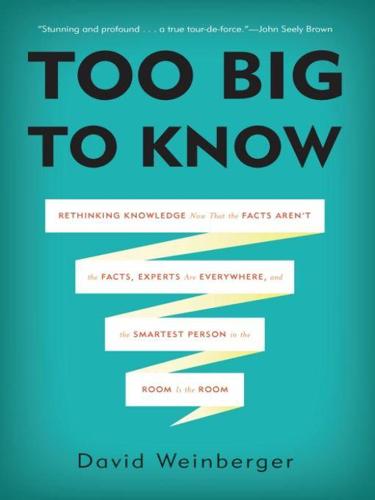
Too Big to Know: Rethinking Knowledge Now That the Facts Aren't the Facts, Experts Are Everywhere, and the Smartest Person in the Room Is the Room
by
David Weinberger
Published 14 Jul 2011
Aiming at universals is a simplifying tactic within our broader traditional strategy for dealing with a world that is too big to know by reducing knowledge to what our brains and our technology enable us to deal with. We therefore stared at tables of numbers until their simple patterns became obvious to us. Johannes Kepler examined the star charts carefully constructed by his boss, Tycho Brahe, until he realized in 1605 that if the planets orbit the Sun in ellipses rather than perfect circles, it all makes simple sense. Three hundred fifty years later, James Watson and Francis Crick stared at x-rays of DNA until they realized that if the molecule were a double helix, the data about the distances among its atoms made simple sense.
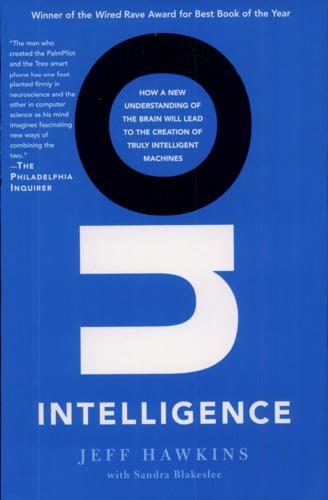
On Intelligence
by
Jeff Hawkins
and
Sandra Blakeslee
Published 1 Jan 2004
Our brains prefer systems that are consistent and predictable, and we like learning new skills. Can Creativity Lead Me Astray? Can I Fool Myself? False analogy is always a danger. The history of science is rife with examples of beautiful analogies that turned out to be wrong. For example, the celebrated astronomer Johannes Kepler convinced himself that the orbits of the six known planets were defined by the Platonic solids. The Platonic solids are the only three-dimensional shapes that can be constructed entirely out of regular polygons. There are exactly five of them: tetrahedron (four equilateral triangles), sextahedron (six squares, aka a cube), octahedron (eight equilateral triangles), dodecahedron (twelve regular pentagons), and icosahedron (twenty equilateral triangles).
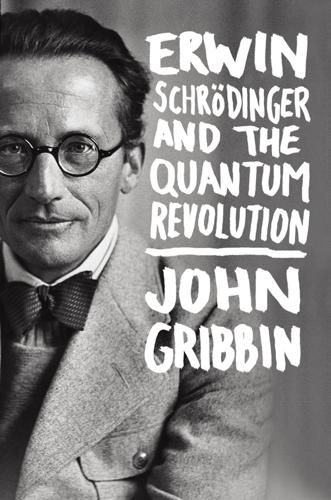
Erwin Schrodinger and the Quantum Revolution
by
John Gribbin
Published 1 Mar 2012
The three scientists had realized that the orbits of the planets around the Sun could be explained by a force which falls off in proportion to the square of the distance of a planet from the Sun (an inverse-square law), but they could not prove that all of the laws of planetary motion, described by Johannes Kepler (1571–1630), must result from such a law. Newton, never one for false modesty, told Halley that he had solved that puzzle long ago, but claimed he could not find the relevant document among his papers, and promised to send a copy to Halley later. It is clear from Newton’s surviving papers that this claim was a lie intended to buy time while Newton, confident in his own abilities, actually did solve the problem.
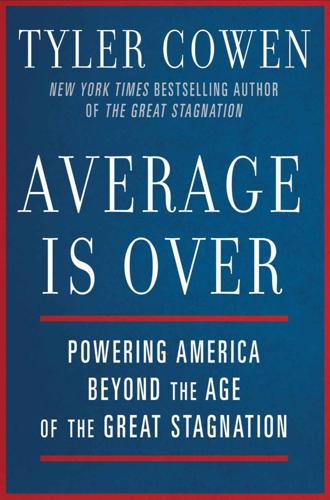
Average Is Over: Powering America Beyond the Age of the Great Stagnation
by
Tyler Cowen
Published 11 Sep 2013
Google is the successful embodiment, through technology, of the earlier dream of the memory palace. For many centuries the idea of an algorithmic path toward greater knowledge was an obsession in Western thought and religion; it infused the Kabbalah, many of the medieval scholastics, and scientists such as Isaac Newton and Johannes Kepler. It fell out of favor as it was increasingly regarded as ridiculous, but guess what? These visions made perfect sense but just didn’t yet have the right technologies to make them work. For a long time the memory tradition in Western thought appeared to be a dead end and indeed few people today use memory theatres or other memory tricks; the technology never seemed practical for most of us.
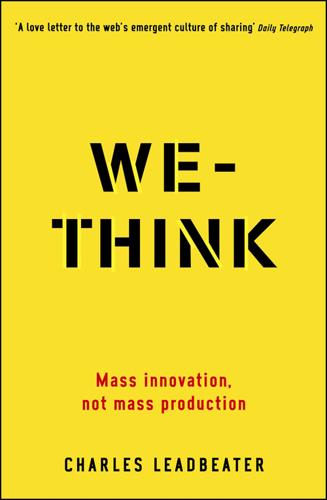
We-Think: Mass Innovation, Not Mass Production
by
Charles Leadbeater
Published 9 Dec 2010
Science in future will not be solely a collaboration among scientists across disciplines and time zones. More sciences will acquire a following of citizen scientists who will work alongside the professionals. Astronomy is a prime example. Like most sciences, astronomy started with amateurs. When Copernicus moved the sun to the centre of the universe he was only a part-time astronomer. Johannes Kepler, who discovered that planets orbit in ellipses, made most of his money from horoscopes. Yet by the 20th century the pendulum had swung decisively in favour of professional astronomers who had access to huge telescopes – like Jodrell Bank in the UK, or the Mount Wilson Observatory near Pasadena, California, where Edwin Hubble determined that the galaxies are being carried away from one another.
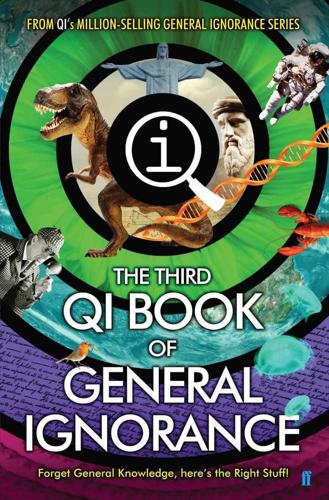
QI: The Third Book of General Ignorance (Qi: Book of General Ignorance)
by
John Lloyd
and
John Mitchinson
Published 28 Sep 2015
You’ll be remarkably lucky if you do. The vast majority of snowflakes found on the ground are irregularly shaped crystals, which look nothing like the ones children make with white paper and scissors. The first person to research the shape of snowflakes scientifically was the German astronomer Johannes Kepler (1571–1630). In 1611, two years after publishing the laws that govern the movement of the planets, he wrote On the Six-cornered Snowflake, which he hoped would provide him with funds to buy a Christmas present for a friend. Kepler’s essay, which also looked at the shapes of beehives and pomegranates, didn’t quite manage to explain how snowflakes are made.
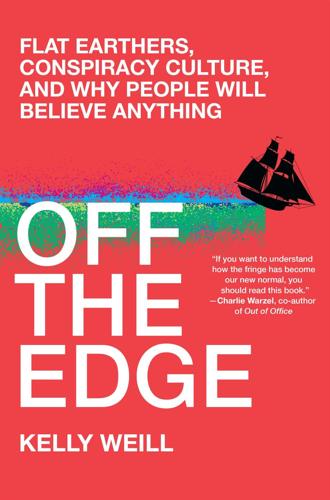
Off the Edge: Flat Earthers, Conspiracy Culture, and Why People Will Believe Anything
by
Kelly Weill
Published 22 Feb 2022
“Time was, they said the Earth was flat; but now they say it’s round!” begins an introductory poem. “But strange enough, though true, it is, no PROOF has yet been found.” Carpenter took up Rowbotham’s biblical arguments and found new places to poke at established science. Legendary astronomers Nicholas Copernicus, Johannes Kepler, and Isaac Newton had all estimated different distances between Earth and sun. Carpenter claimed the discrepancy should call the entire field of modern astronomy into question. (Copernicus, Kepler, and Newton never had the chance to compare notes because none of them lived at the same time, and all were using inexact estimation methods.)

Germany
by
Andrea Schulte-Peevers
Published 17 Oct 2010
The Historisches Museum ( 507 2448; Dachauplatz 2-4; adult/concession €2.20/1.10; 10am-4pm Tue-Sun, additionally 4-8pm Thu) has exhibits ranging from the Stone Age to the 19th century, with an emphasis on the Roman period and the city’s medieval glory days. Other worthwhile attractions include the house of astronomer and mathematician Johannes Kepler, now the Kepler-Gedächtnishaus (Kepler Memorial House; 507 3442; Keplerstrasse 5; adult/concession €2.20/1.10; 10.30am-4pm Sat & Sun), and the unexpected Schnupftabak Fabrik (Snuff Factory; 507 3442; Gesandtenstrasse 3; adult/concession €5/2.50; tours 2.30pm Fri, 11am & 2.30pm Sat & Sun), a museum in the old Bernard snuff works packed full of old machines and tobacco-related knick-knacks.
…
Return to beginning of chapter KLOSTER MAULBRONN Billed as the best-preserved medieval monastery north of the Alps, this one-time Cistercian monastery ( 07043-926 610; www.schloesser-und-gaerten.de; adult/concession/family €6/3/15; 9am-5.30pm Mar-Oct, 9.30am-5pm Tue-Sun Nov-Feb) was founded by Alsatian monks in 1147, born again as a Protestant school in 1556 and designated a Unesco World Heritage Site in 1993. Its famous graduates include the astronomer Johannes Kepler. Aside from the Romanesque-Gothic portico in the monastery church and the weblike vaulting of the cloister, it’s the insights into monastic life that make this place so culturally stimulating. Maulbronn is 30km east of Karlsruhe and 33km northwest of Stuttgart, near the Pforzheim Ost exit on the A8.
…
Return to beginning of chapter TÜBINGEN 07071 / pop 83,800 Liberal students and deeply traditional Burschenschaften (fraternities) singing ditties for beloved Germania, eco-warriors and punks – all have a soft spot for this bewitchingly pretty Swabian city, where cobbled alleys lined with gabled town houses twist up to a perkily turreted castle. As did some of the country’s biggest brains. It was here that Joseph Ratzinger, now Pope Benedict XVI, lectured theology in the late 1960s before fleeing to Bavaria, scandalised by Marxist-inspired student radicalism; and here that Friedrich Hölderlin studied stanzas, Johannes Kepler planetary motions and Goethe the bottom of a beer glass. Today the hybrid-driving mayor, Boris Palmer, is on his own green mission to cut emissions with clean transport and renewable energy policies. The finest days unfold slowly in Tübingen, with leisurely brunches in Altstadt cafes, punting on the willow-lined Neckar River and pretending, as the students so diligently do, to work your brain cells in a chestnut-shaded beer garden.

Accessory to War: The Unspoken Alliance Between Astrophysics and the Military
by
Neil Degrasse Tyson
and
Avis Lang
Published 10 Sep 2018
For the Mesopotamians, astrology and astronomy were more or less the same thing. For the emperors of ancient China, as for the ancient Greeks, astrology and astronomy were intertwined. The skies spoke; the skywatcher listened and translated. Copernicus did astrology; Tycho Brahe did astrology; the great Galileo did astrology. Johannes Kepler, though critical of many aspects of astrology and aware of its cynical use, cast hundreds of horoscopes. In 1601, just after becoming imperial mathematician to the Holy Roman Emperor Rudolf II, Kepler published a treatise entitled Concerning the More Certain Fundamentals of Astrology; a quarter century later he served as astrologer to General Albrecht von Wallenstein.20 The modern distinction between astronomy and astrology was, at one time, fuzzy and irrelevant, just like the distinction between alchemy and chemistry or between magic and medicine.
…
Until the 1630s and 1640s the lightweight, portable, two-lensed Galilean spyglass—the lens near the eye concave, the one nearer the object convex—had the market pretty much to itself. Though relatively small and fuzzy, its images at least arrived at the eye right side up. As later described by Johannes Kepler, an alternative version—with two convex lenses—offered a larger field of view, but the image arrived upside down. For non-hurried astronomers studying space, where there is no up or down, an inverted image is not a crippling disadvantage. But for generals and admirals, who usually do their reconnaissance under pressures of time and position, rapid readability is crucial, whether on battlefield, battlements, deck, or promontory.
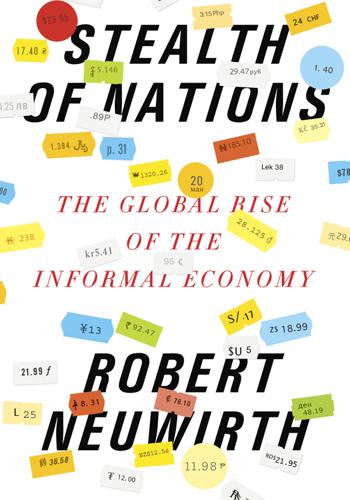
Stealth of Nations
by
Robert Neuwirth
Published 18 Oct 2011
System D is distributing products more equitably and cheaply than any big company can. And, even as governments around the world are looking to privatize agencies and get out of the business of providing for people, System D is running public services—trash pickup, recycling, transportation, and even utilities. Friedrich Schneider, chair of the economics department at Johannes Kepler University in Linz, Austria, has spent decades calculating the dollar value of what he calls the shadow economies of the world. He admits his projections are imprecise, in part because, like privately held businesses everywhere, businesspeople who engage in trade off the books don’t want to open their books (most successful System D merchants are obsessive about profit and loss and keep detailed accounts of their revenues and expenses in old-fashioned ledger books) to anyone who will write anything in a book.
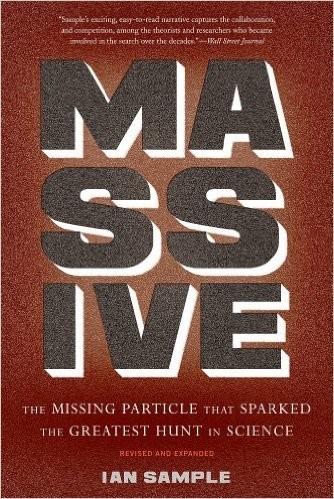
Massive: The Missing Particle That Sparked the Greatest Hunt in Science
by
Ian Sample
Published 1 Jan 2010
The observation, which surely made for lively theological discussions about the Trinity, mirrors the modern definitions of volume and mass. In the early fourteenth century, the Parisian philosopher Jean Buridan drew on the concept of mass when he described how throwing an object gave it an impetus that depended on how much matter it contained and the speed at which it was lobbed.3 The sixteenth-century German astronomer Johannes Kepler took things further, arguing that planets stayed true to their orbits and didn’t hurtle around space like scattered snooker balls thanks to the inertia arising from their enormous masses. Despite the valuable work of early philosophers and astronomers, the term “mass” was not used systematically until 1687, when Isaac Newton laid the foundations of classical mechanics in a great but wholly impenetrable work, the Principia.4 Newton said mass was a quantity of matter that arose from an object’s volume and density.
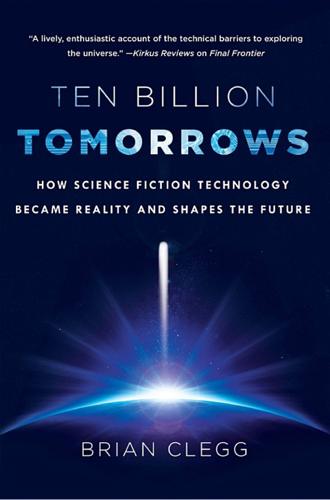
Ten Billion Tomorrows: How Science Fiction Technology Became Reality and Shapes the Future
by
Brian Clegg
Published 8 Dec 2015
On the other hand Godwin (more precisely his narrator Gonsales) is more scientific in describing the way that he lost weight as he flew away from the Earth. If hitching a ride with a flock of lunar migrating birds seems an unlikely mode of transport, it is as nothing compared with the strange work Somnium, written by astronomer Johannes Kepler in 1634. In this, Kepler has his fictional hero cross an insubstantial bridge of darkness, used by lunar demons to make the journey over to the Earth during eclipses. Despite this, Kepler too throws in some interesting thinking about the experience of being on the Moon. He seems to have been one of the first to realize that when looking back at the Earth he would see it in the lunar sky as a huge, dramatic moon.

The Fourth Age: Smart Robots, Conscious Computers, and the Future of Humanity
by
Byron Reese
Published 23 Apr 2018
Shortly thereafter, a French philosopher named Jean Bodin was one of a group of people who saw science as the way forward. Bodin didn’t believe in some golden age of the past; rather, he believed that the power of print would launch the world forward and that the sciences “contain in themselves treasure that no future ages will ever be able to exhaust.” By 1600, things were really getting under way. In 1609, Johannes Kepler wrote a letter to Galileo Galilei talking about a future with spaceships: “Ships and sails proper for the heavenly air should be fashioned. Then there will also be people who do not shrink from the dreary vastness of space.” In 1620, Sir Francis Bacon published a book called Novum Organum (The New Method), which is regarded as the beginning of what we now call the scientific method.
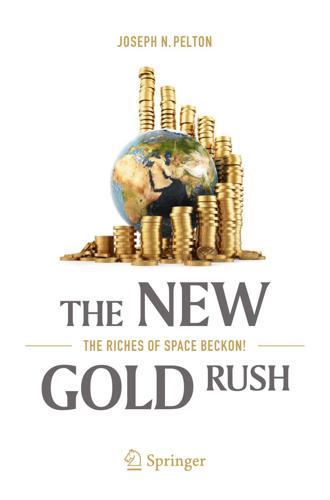
The New Gold Rush: The Riches of Space Beckon!
by
Joseph N. Pelton
Published 5 Nov 2016
Why This Gold Rush Is Different Joseph N. Pelton1 (1)Executive Board, International Association for the Advancement of Space Safety, Arlington, VA, USA “Ships and sails proper for the heavenly air should be fashioned. Then there will also be people, who do not shrink from the dreary vastness of space.” —Johannes Kepler, Letter to Galileo Galilei, 1609 “In spite of the opinions of certain narrow-minded people, who would shut up the human race upon this globe, as within some magic circle which it must never outstep, we shall 1 day travel to the moon, the planets, and the stars, with the same facility, rapidity, and certainty as we now make the voyage from Liverpool to New York!”

Possible Minds: Twenty-Five Ways of Looking at AI
by
John Brockman
Published 19 Feb 2019
Neither of these developments would Wiener have anticipated, said David, prompting him to ask, “Do we need a new set of guiding metaphors?” In The Sleepwalkers, a sweeping history of scientific thought from ancient times through the Renaissance, Arthur Koestler identified a tension that has marked the most dramatic leaps of our cosmological imagination. In reading the great works of Nicolaus Copernicus and Johannes Kepler today, Koestler argued, we are struck as much by their strange unfamiliarity—their embeddedness in the magic or mysticism of an earlier age—as by their modern-sounding insights. I detect that same doubleness—the zigzag origami folds of old and new—in Norbert Wiener’s classic The Human Use of Human Beings.
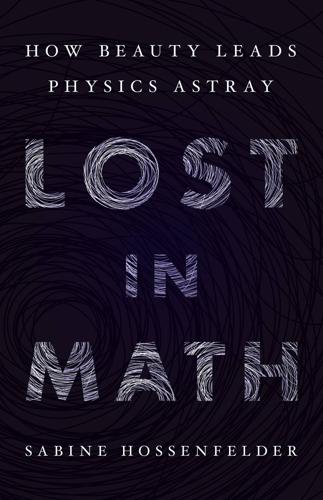
Lost in Math: How Beauty Leads Physics Astray
by
Sabine Hossenfelder
Published 11 Jun 2018
In the twentieth century, aesthetic appeal morphed from a bonus of scientific theories to a guide in their construction until, finally, aesthetic principles turned into mathematical requirements. Today we don’t reflect on arguments from beauty anymore—their nonscientific origins have gotten “lost in math.” AMONG THE first to formulate quantitative laws of nature was the German mathematician and astronomer Johannes Kepler (1571–1630), whose work was strongly influenced by his religious belief. Kepler had a model for the solar system in which the then-known planets—Mercury, Venus, Earth, Mars, Jupiter, and Saturn—moved in circular orbits around the Sun. The radii of their orbits were determined by regular polyhedra—the Platonic solids—stacked inside each other, and the distances between the planets thus obtained fit well with observations.
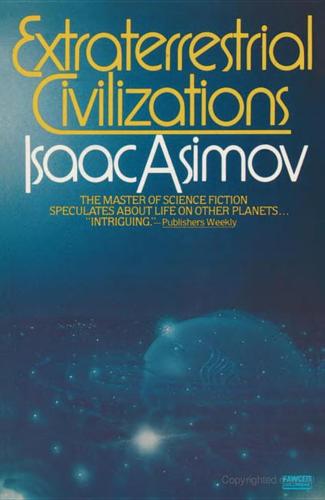
Extraterrestrial Civilizations
by
Isaac Asimov
Published 2 Jan 1979
Galileo saw mountain ranges on the Moon, together with what looked like volcanic craters. He saw dark, smooth patches that looked like seas. Quite plainly and simply, he was seeing another world. This stimulated the further production of fictional flights to the Moon. The first was written by Johannes Kepler (1571–1630), an astronomer of the first rank* and was published posthumously in 1633. It was entitled Somnium because the hero reached the Moon in a dream. The book was remarkable in that it was the first to take into account the actual known facts about the Moon, which until then had been treated as in no way different from any Earthly piece of real estate.

Sextant: A Young Man's Daring Sea Voyage and the Men Who ...
by
David Barrie
Published 12 May 2014
The observer’s longitude could then be derived by converting the time difference in hours and minutes into a spatial displacement measured in degrees and minutes east or west—one hour being equal to 15 degrees of longitude (360 divided by 24). It was not until the early seventeenth century that Copernican theory was firmly established on the basis of the observations of Tycho Brahe (1546–1601), Galileo Galilei (1564–1642), and Johannes Kepler (1571–1630). Galileo’s momentous discovery of the moons of Jupiter and, soon afterward, of the changing phases of the planet Venus, not only provided overwhelming evidence that the earth was not the center of the universe but also opened the way to a proper understanding of planetary motion.3 The invention of the first pendulum clock in the 1650s by Christiaan Huygens (1629–95) also marked a great advance.
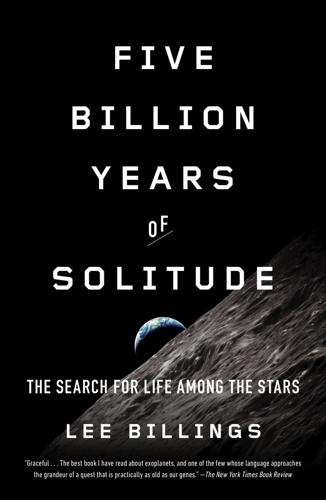
Five Billion Years of Solitude: The Search for Life Among the Stars
by
Lee Billings
Published 2 Oct 2013
Yet the Copernican model was still imperfect: it failed to replicate the exact motions of the planets in the sky. In making his model, Copernicus had implicitly relied upon the old Pythagorean notion, extended by Plato, Aristotle, and others, that planets moved in perfect circles. Around the same time that Galileo began using his telescope, a German astronomer, Johannes Kepler, announced a discovery that would mark the true beginning of modern astronomy, one that ironically came to him while he worked to create a table for casting more accurate horoscopes. Kepler had been grappling with the orbit of Mars, trying to integrate historical records of the planet’s motions into Copernicus’s heliocentric model.

Beyond: Our Future in Space
by
Chris Impey
Published 12 Apr 2015
When there’s room at the bottom, the sky’s the limit.14 Solar Sailing The cost and difficulty of space travel is rooted in dependence on the way rockets work. Sunlight is used to generate electricity and power on Earth and in space. What if it could be used for propulsion as well? It can. Johannes Kepler noticed that comet tails point away from the Sun, and in a 1610 letter to Galileo, he suggested: “Provide ships or sails adapt to the heavenly breeze, and there will be some who brave even that void.” Jules Verne was the first to outline the concept of the solar sail in 1865, seizing on James Clerk Maxwell’s theory that light has momentum as well as energy so it can exert pressure on objects.
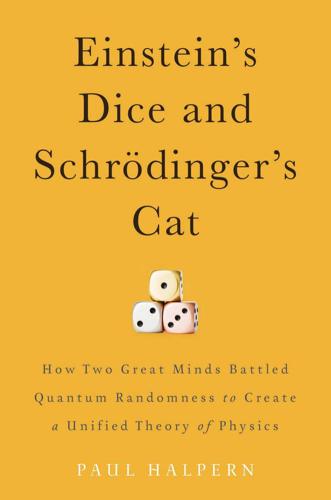
Einstein's Dice and Schrödinger's Cat: How Two Great Minds Battled Quantum Randomness to Create a Unified Theory of Physics
by
Paul Halpern
Published 13 Apr 2015
In short, believers in the standpoint that the entire universe runs like a perfect clock dismiss the notion that anything is fundamentally random. Indeed, on astronomical scales, such as the domain of the solar system, Newton’s laws are remarkably accurate. They wonderfully reproduce German astronomer Johannes Kepler’s laws describing how planets orbit the Sun. Our capacity to anticipate celestial events, such as solar eclipses and planetary conjunctions, and to launch spacecraft precisely toward faraway targets are testimony to the clockwork predictability of Newtonian mechanics, particularly as applied to gravitation.
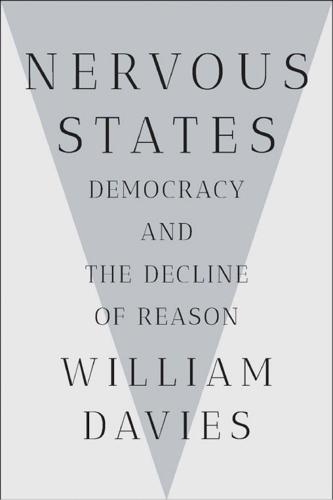
Nervous States: Democracy and the Decline of Reason
by
William Davies
Published 26 Feb 2019
Hobbes held nothing but scorn for the “schoolmen” who fueled these retrograde disputes. Above all, he believed that philosophy and science ought to provide a basis of peaceful consensus rather than of violent conflict. This is one reason to take his ideas seriously today. Hobbes was deeply impressed by the advances of anatomists such as Harvey and of astronomers such as Johannes Kepler and Galileo. What underpinned this scientific progress, as Hobbes saw it, was an emphasis on mathematics and geometry, and not on idle and often moralistic speculation as the basis of all truth. Whether it be the circulation of the planets or of the blood (or, as we will see, of money), the underlying reality was always the same, namely the mathematical laws that governed bodies in motion.
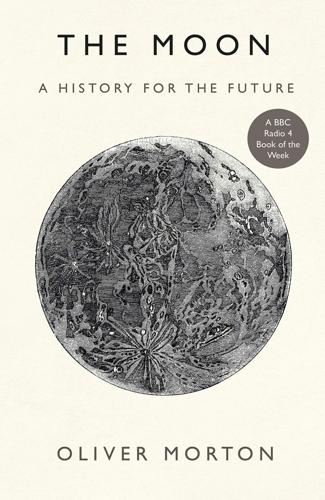
The Moon: A History for the Future
by
Oliver Morton
Published 1 May 2019
Once thus seen, the ashen light was easily, even naturally, understood as light that had bounced first off the Earth and then off the Moon, like sunlight reaching an inner room. For most of his readers, this must have been a strange new thought. For Michael Maestlin, an astronomer at the University of Tübingen, and his pupil Johannes Kepler, then the court astronomer to Holy Roman Emperor Rudolph II, this part of “The Starry Messenger” came as no surprise. They had come to the same conclusions about how the Moon was lit with no need of telescopes. So had Paolo Sarpi, a priest and statesman in Venice whom Galileo knew and with whom he may have discussed the matter.

Time Travelers Never Die
by
Jack McDevitt
Published 10 Sep 2009
“But people always know who the players are.” “No, they don’t. It usually takes a couple of generations to figure that out. Contemporaries only know the authority figures and the loudmouths. And the people born into power. But it takes perspective to know who’s carrying the load. Nobody here has a clue who Johannes Kepler is. All they know about Galileo is that he’s a teacher who got in trouble with the Inquisition. I doubt anyone’s heard of Francis Bacon. Even in Britain, nobody really knows him. He’s just a guy with a funny name.” “How’ve you managed to live?” asked Shel. “In the beginning, I became a field hand.
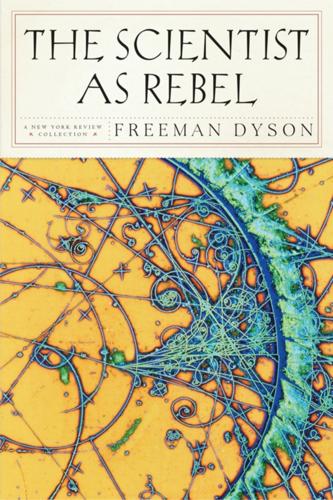
The Scientist as Rebel
by
Freeman Dyson
Published 1 Jan 2006
The traditional Aristotelian view imagined the astronomical universe to be a sphere of unchanging peace and harmony. The earth alone was perishable and violent, while the heavenly bodies were perfect and quiescent. This view was contradicted by a multitude of discoveries during the last four hundred years, beginning with the two exploding stars observed by Tycho Brahe and Johannes Kepler and with the mountains and valleys discovered by Galileo on the moon. In the last fifty years it became clear that we live in a violent universe, full of explosions, collapses, and collisions. The Earth now appears to be a comparatively quiet corner in a universe of cosmic mayhem. The 1994 bombardment of Jupiter demonstrated that our own solar system is not immune to cosmic violence.
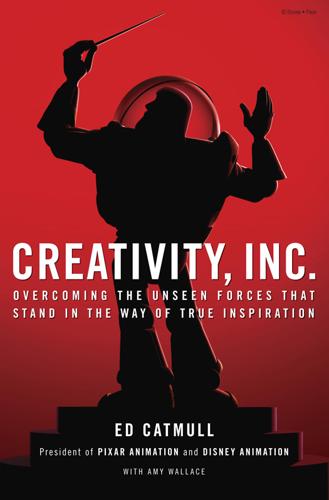
Creativity, Inc.: Overcoming the Unseen Forces That Stand in the Way of True Inspiration
by
Ed Catmull
and
Amy Wallace
Published 23 Jul 2009
When Renaissance astronomers were trying to explain the movement of the planets, for example, there were many complex theories. The prevailing belief was that orbits were perfect circles, or epicycles, but as planetary observation improved, the models based on circles had to be made extremely complex in order to work. Then, Johannes Kepler hit upon the comparatively simple idea that the orbit of every planet is an ellipse, with the sun at one of two foci within it. The explanation’s simplicity seemed proof that it was the right one—and with that simplicity came great power. Unlike some theoretical ideas, Occam’s Razor accords easily with human nature.

This Will Make You Smarter: 150 New Scientific Concepts to Improve Your Thinking
by
John Brockman
Published 14 Feb 2012
The history of science is littered with flexible fences. The phlogiston theory predicted that phlogiston would be released when magnesium burned. It looked bad for that theory when experiments showed that burning magnesium became heavier—but its supporters happily explained that phlogiston had negative weight. Consider Johannes Kepler. He came up with the idea that the distances of the six (known) planets could be explained by nesting the five Platonic solids. It almost worked for Earth, Mars, and Venus but clearly failed for Jupiter. He dismissed the trouble with Jupiter, saying, “Nobody will wonder at it, considering the great distance.”
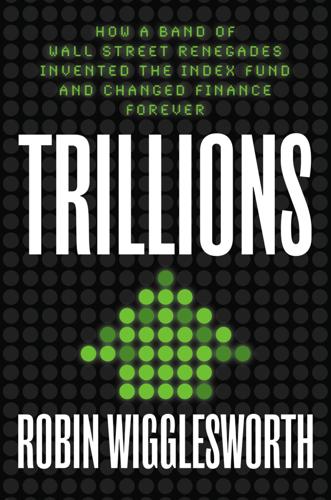
Trillions: How a Band of Wall Street Renegades Invented the Index Fund and Changed Finance Forever
by
Robin Wigglesworth
Published 11 Oct 2021
Ever the showman, Buffett insisted that he would announce a tally of how things were going at Berkshire Hathaway’s annual meeting every year. Due to legal restrictions on gambling in some US states, the bet was arranged through something called Long Bets, a forum for big wagers on the future backed by Amazon’s Jeff Bezos. Although seemingly frivolous, friendly gambles can have a lot of power. In 1600, Johannes Kepler entered into a bet with a Danish astronomer that he could calculate a formula for the solar orbit of Mars in eight days. In the end, it took him five years, but the work help revolutionize astronomy.7 This was precisely what the Long Bets Project wanted to encourage, and the Buffett-Protégé wager was perfect.
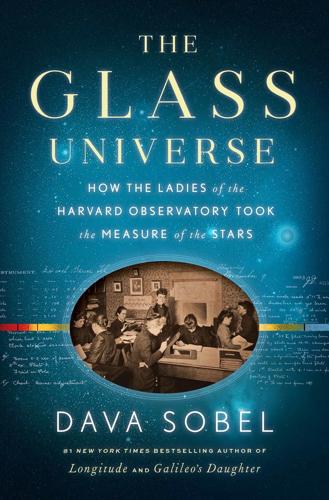
The Glass Universe: How the Ladies of the Harvard Observatory Took the Measure of the Stars
by
Dava Sobel
Published 6 Dec 2016
De nova stella, Tycho’s eyewitness account of the 1572 marvel, argued that Aristotle had been wrong to call the heavens immutable. Surely the abrupt appearance of the new star and its subsequent disappearance a year later proved that change could occur in the realm beyond the Moon. Not long after Tycho died in 1601, another nova burst into splendor. Both Galileo in Padua and Johannes Kepler in Prague observed the brilliant new star of 1604, which was so bright as to be visible in the daytime for more than three weeks. Although no comparable naked-eye nova ever materialized over the following centuries, a few fortunate astronomers who happened to be pointing their telescopes to the right place at the right time discovered seven more novae between 1670 and 1892.
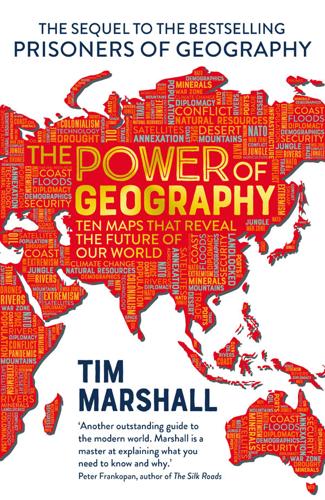
The Power of Geography: Ten Maps That Reveal the Future of Our World
by
Tim Marshall
Published 14 Oct 2021
Among a host of hurdles to overcome is that a laser powerful enough to achieve this has yet to be invented. And when it is, or several are combined, they will need to be able to project short bursts of 100 gigawatts of power, roughly the output of about 100 nuclear power stations. Scientists say the theory is sound; indeed, it concurs with what the seventeenth-century astronomer Johannes Kepler wrote to his fellow genius Galileo Galilei: ‘With ships or sails built for heavenly breezes, some will venture into that great vastness.’ My issue with this is that the lasers might miss the computer chip and hit an alien spacecraft 400,000 kilometres away, whose occupants turn out not to be vegetarians and who say, ‘Nice planet – we’ll take it.’

Age of Discovery: Navigating the Risks and Rewards of Our New Renaissance
by
Ian Goldin
and
Chris Kutarna
Published 23 May 2016
How might we prove that the planets orbit the sun and not the Earth? In 1610, this question prompted Galileo Galilei (1564–1642) to point a recent Dutch invention (the telescope) skywards and gather fresh evidence from the phases of Venus and the moons of Jupiter. How best to describe a planet’s orbit? As an ellipse, Johannes Kepler (1571–1630) discovered. He derived three laws of planetary motion that made new almanacs accurate to within two-tenths of a degree.* And why, if the Earth really were spinning through space, could no one feel it? Inertia, answered Sir Isaac Newton (1642–1727)—and the answer became the first of his Three Laws of Motion.
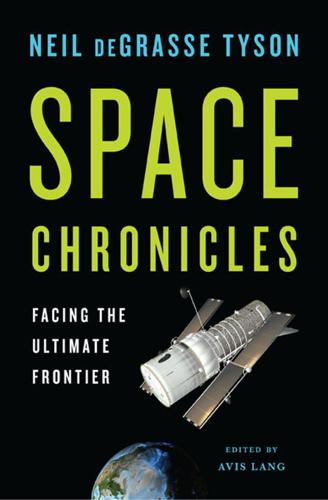
Space Chronicles: Facing the Ultimate Frontier
by
Neil Degrasse Tyson
and
Avis Lang
Published 27 Feb 2012
In his 1543 magnum opus, De Revolutionibus, Nicolaus Copernicus placed the Sun in the center of the known universe and asserted that Earth plus the five known planets—Mercury, Venus, Mars, Jupiter, and Saturn—executed perfect circular orbits around it. Unknown to Copernicus, a circle is an extremely rare shape for an orbit and does not describe the path of any planet in our solar system. The actual shape was deduced by German mathematician and astronomer Johannes Kepler, who published his calculations in 1609. The first of his laws of planetary motion asserts that planets orbit the Sun in ellipses. An ellipse is a flattened circle, and the degree of flatness is indicated by a numerical quantity called eccentricity, abbreviated e. If e equals zero, you get a perfect circle.
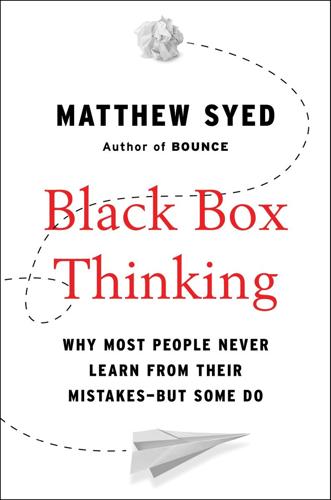
Black Box Thinking: Why Most People Never Learn From Their Mistakes--But Some Do
by
Matthew Syed
Published 3 Nov 2015
But when Galileo invited Christian scholars to look through his telescope in order to see the new evidence, they flatly refused. They didn’t want to see any data that might count against the earth-centric view of the universe. It is difficult to think of a more revelatory episode of cognitive dissonance. They simply shut their eyes. As Galileo said in a letter to the German mathematician Johannes Kepler: My dear Kepler, I wish that we might laugh at the remarkable stupidity of the common herd. What do you have to say about the principal philosophers of this academy who are filled with the stubbornness of an asp and do not want to look at either the planets, the moon or the telescope, even though I have freely and deliberately offered them the opportunity a thousand times?

Human Frontiers: The Future of Big Ideas in an Age of Small Thinking
by
Michael Bhaskar
Published 2 Nov 2021
Discrete leaps are, under the hood, often the results of gradual cumulative processes and unlikely admixtures. Big ideas ‘broker’ other ideas in interesting ways – whether that's Elvis Presley brokering gospel and the blues or Gutenberg's printing press coupling the wine press with the idea of casting a seal.27 Johannes Kepler united the previously disparate fields of physics and astronomy, using new data uncovered by Tycho Brahe to prove the elliptical orbits of the planets. Marx's theory of capitalism combined Hegel's philosophy with classical political economy and an emergent socialist tradition. Likewise Freud didn't ‘invent’ the unconscious, an idea that had pedigree everywhere from the Upanishads to Thomas Aquinas, Montaigne and Romantic artists.

Miracle Cure
by
William Rosen
Published 14 Apr 2017
Although what was left behind when penicillin was broken down to simpler compounds—formally “degradation products”—weren’t of any therapeutic value, they did have one extremely important aspect: The degradation products, primarily penicillamine, penillic acid, and the penilloaldehydes, were all crystals. Crystals could be analyzed. As far back as the seventeenth century, the polymaths Robert Hooke and Johannes Kepler were independently speculating that crystals like gemstones, common salt, and even snowflakes were structurally similar, each with visibly flat faces meeting at regular angles, all in a repeating series. As scientists realized that all matter is composed of atoms, they also concluded that macroscopic crystals reflected a microscopic structural similarity: The atoms that composed them had to be organized in some regular, and therefore decipherable, structure.

Time of the Magicians: Wittgenstein, Benjamin, Cassirer, Heidegger, and the Decade That Reinvented Philosophy
by
Wolfram Eilenberger
Published 14 Sep 2020
In the face of the reservations of his engineers, Warburg, in whose intellectual world every geometric shape had a specific symbolic, indeed philosophical, significance, had insisted that the largest, most important room in the building be elliptical. Cassirer was not entirely innocent. In particular their discussion in Kreuzlingen about the significance of the ellipse in Johannes Kepler’s astronomical calculations had restored Warburg’s intellectual resilience as a researcher. For Warburg, Kepler’s discovery that the orbit of Mars was elliptical—and not circular—represented the actual breakthrough from mythical, medieval thinking into the freedom of modern, scientific thought.

Think Like a Rocket Scientist: Simple Strategies You Can Use to Make Giant Leaps in Work and Life
by
Ozan Varol
Published 13 Apr 2020
Thomas Chamberlain summed up the collective sentiments of the insiders: “If we are to believe in Wegener’s hypothesis we must forget everything which has been learned in the past 70 years and start all over again.”84 Wegener’s theory would upend the foundations of the insiders’ reputation in the field, so they stuck to their guns. For similar reasons, when Johannes Kepler discovered that planets had elliptical—rather than circular—orbits, Galileo balked. As astrophysicist Mario Livio observes, “Galileo was still prisoner to the aesthetic ideals of antiquity, which assumed that the orbits had to be perfectly symmetrical.”85 Einstein’s secret to success was escaping the intellectual prison that confined other physicists.

Germany Travel Guide
by
Lonely Planet
Back up above, on the square itself, a work by renowned Israeli artist Dani Karavan graces the site of the former synagogue. Tickets are purchased from Tabak Götz at Neupfarrplatz 3. Kepler-Gedächtnishaus MUSEUM Offline map Google map (Kepler Memorial House; Keplerstrasse 5; adult/concession €2.20/1.10; 10.30am-4pm Sat & Sun) Disciples of astronomer and mathematician Johannes Kepler should visit the house he lived in while resident in Regensburg. Alte Kapelle CHURCH Offline map Google map (Alter Kornmarkt 8) South of the Dom, the humble exterior of the graceful Alte Kapelle belies the stunning interior with its rich rococo decorations. The core of the church, however, is about 1000 years old, although the Gothic vaulted ceilings were added in the Middle Ages.
…
MAULBRONN Billed as the best-preserved medieval monastery north of the Alps, the one-time Cistercian monastery Kloster Maulbronn (07043-926 610; www.schloesser-und-gaerten.de; adult/concession/family €6/3/15; 9am-5.30pm Mar-Oct, 9.30am-5pm Tue-Sun Nov-Feb) was founded by Alsatian monks in 1147, born again as a Protestant school in 1556 and designated a Unesco World Heritage Site in 1993. Its famous graduates include the astronomer Johannes Kepler. Aside from the Romanesque-Gothic portico in the monastery church and the weblike vaulting of the cloister, it’s the insights into monastic life that make this place so culturally stimulating. Maulbronn is 30km east of Karlsruhe and 33km northwest of Stuttgart, near the Pforzheim Ost exit on the A8.
…
SWABIAN ALPS & AROUND Tübingen 07071 / POP 88,360 Liberal students and deeply traditional Burschenschaften (fraternities) singing ditties for beloved Germania, eco-warriors, artists and punks – all have a soft spot for this bewitchingly pretty Swabian city, where cobbled lanes lined with half-timbered town houses twist up to a turreted castle. It was here that Joseph Ratzinger, now Pope Benedict XVI, lectured theology in the late 1960s; and here that Friedrich Hölderlin studied stanzas; Johannes Kepler planetary motions; and Goethe, the bottom of a beer glass. The finest days unfold slowly in Tübingen: lingering in Altstadt cafes, punting on the plane-tree-lined Neckar River and pretending, as the students so diligently do, to work your brain cells in a chestnut-shaded beer garden. Sights & Activities Schloss Hohentübingen CASTLE (Burgsteige 11; museum adult/concession €5/3; castle 7am-8pm daily, museum 10am-5pm Wed-Sun, to 7pm Thu) On its perch above Tübingen, this turreted 16th-century castle has a terrace overlooking the Neckar and the Altstadt’s triangular rooftops to the vine-streaked hills beyond.
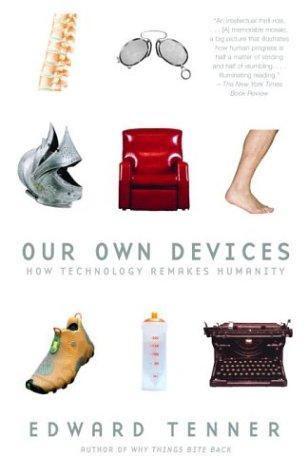
Our Own Devices: How Technology Remakes Humanity
by
Edward Tenner
Published 8 Jun 2004
The most common explanation in antiquity and the Middle Ages had been that the eye sent out rays. Three stunning accomplishments of the early seventeenth century changed this model. Galileo’s construction of the telescope and his observation of the earthlike contours of the moon suggested that lenses could multiply the powers of human vision to a previously unimagined degree. Johannes Kepler (1571–1630), in his work Dioptrice (1611), showed that images are formed by rays of light on the retina passing through the eye’s lens, and René Descartes (1596–1650) presented the law of refraction in his own Dioptrique (1637). These discoveries (and the development of the microscope) meant that the grinding of lenses, once exclusively a craft, was on its way to being a science.
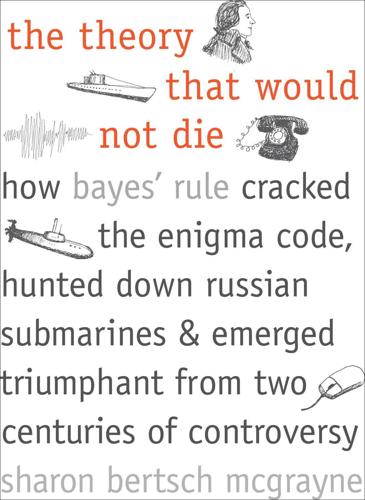
The Theory That Would Not Die: How Bayes' Rule Cracked the Enigma Code, Hunted Down Russian Submarines, and Emerged Triumphant From Two Centuries of Controversy
by
Sharon Bertsch McGrayne
Published 16 May 2011
D’Alembert, who had made Newton’s revolution the focus of French mathematics, urged Laplace to concentrate on astronomy. D’Alembert had a clear problem in mind. Over the previous two centuries mathematical astronomy had made great strides. Nicolaus Copernicus had moved Earth from the center of the solar system to a modest but accurate position among the planets; Johannes Kepler had connected the celestial bodies by simple laws; and Newton had introduced the concept of gravity. But Newton had described the motions of heavenly bodies roughly and without explanation. His death in 1727 left Laplace’s generation an enormous challenge: showing that gravitation was not a hypothesis but a fundamental law of nature.

What to Think About Machines That Think: Today's Leading Thinkers on the Age of Machine Intelligence
by
John Brockman
Published 5 Oct 2015
More profoundly, you can generalize from this kind of statistical learning only in a limited way, whether you’re a baby or a computer or a scientist. A more powerful way to learn is to formulate hypotheses about what the world is like and test them against the data. Tycho Brahe, the Google Scholar of his day, amalgamated an immense data set of astronomical observations and could use them to predict star positions in the future. But Johannes Kepler’s theory allowed him to make unexpected, wide-ranging, entirely novel predictions well beyond Brahe’s ken. Preschoolers can do the same. One of the other big advances in machine learning has been to formalize and automate this kind of hypothesis testing. Introducing Bayesian probability theory into the learning process has been particularly important.

Giving the Devil His Due: Reflections of a Scientific Humanist
by
Michael Shermer
Published 8 Apr 2020
It is my hypothesis that, in the same way that Galileo and Newton discovered physical laws and principles about the natural world that really are out there, so too have social scientists discovered moral laws and principles about human nature and society that really do exist. Just as it was inevitable that the astronomer Johannes Kepler would discover that planets have elliptical orbits – given that he was making accurate astronomical measurements and given that planets really do travel in elliptical orbits, he could hardly have discovered anything else – scientists studying political, economic, social, and moral subjects will discover certain things that are true in these fields of inquiry.
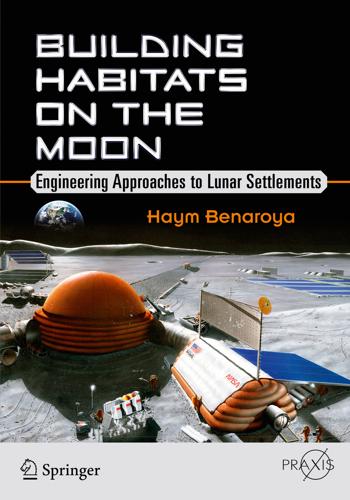
Building Habitats on the Moon: Engineering Approaches to Lunar Settlements
by
Haym Benaroya
Published 12 Jan 2018
The inscription on a plaque left behind. “As soon as somebody demonstrates the art of flying, settlers from our species of man will not be lacking [on the Moon and Jupiter]. ... Given ships or sails adapted to the breezes of heaven, there will be those who will not shrink from even that vast expanse.” Johannes Kepler, letter to Galileo, 1610. “I think there’s a supreme power behind the whole thing, an intelligence. Look at all of the instincts of nature, both animals and plants, the very ingenious ways they survive. If you cut yourself, you don’t have to think about it.” Clyde Tombaugh. “Space flights are merely an escape, a fleeing away from oneself, because it is easier to go to Mars or to the Moon than it is to penetrate one’s own being.”

Global Crisis: War, Climate Change and Catastrophe in the Seventeenth Century
by
Geoffrey Parker
Published 29 Apr 2013
The English astronomer John Bainbridge was apparently the first to comment, in 1619, on the ‘many new stars and comets, which have been more [numerous] this last century of the world than in many ages before’. He wrote just after the appearance of three comets in 1618, which excited widespread anxiety. Even before they appeared, Johannes Kepler, the foremost mathematician of his day, warned in his Astrological Almanac for 1618 that the conjunction of five planets in May would cause extreme climatic events; and if a comet appeared as well everyone should ‘sharpen their pens’, because it would presage a major political upheaval. Over the winter of 1618–19, a multitude of books and pamphlets in Europe reminded readers that comets ‘signify wars’ and brought in their wake ‘discord, irritations, deaths, upheavals, robberies, rape, tyranny and the change of kingdoms’, and they predicted dire consequences for humanity following the three ‘blazing stars’ of 1618.30 Some observers were more precise: a Spanish friar argued that the comets would prove especially dangerous for the Habsburg dynasty ‘because they have touched us to the quick with the deaths of the empress, the Archduke Maximilian, and most recently the emperor [Matthias] … May God preserve those members of the House of Austria who are left!
…
Most of them remained in Europe until the Restoration in 1660 – when several of the leading British Republicans took their place. ‘Bloodthirsty Mars’ forced far more men and women to flee from central Europe. Some were intellectuals at the height of their powers (like the musician Heinrich Schütz, the poet Martin Opitz, the mathematician and astronomer Johannes Kepler); others were country folk who could not protect their families, like the village shoemaker Hans Heberle, who had to flee with his family to Ulm 30 times during the Thirty Years War. Some went into exile alone, like Hugo Grotius after the execution of Oldenbarnevelt; others moved as a group, like the thousands of ‘Masanielli’, the unsuccessful Neapolitan rebels against Philip IV, who in 1648 took refuge in Rome, and the malvizzi from Messina 30 years later, hundreds of whom left for France on the fleet that evacuated the city's garrison.17 Escape was even more common in eastern Europe, where peasants could flee misery at home by joining the Cossacks or the Tartars to the south, or (in the case of Russian peasants) by crossing the Urals into Siberia.
…
Angleterre (Paris, 1929) Kanceff, E., ed., Oeuvres de Jean-Jacques Bouchard: Journal, 2 vols (Turin, 1976–7) Kâtib Çelebi, Fezleke-i Tarih, 2 vols (Istanbul, 1870) Kâtib Çelebi, The balance of truth (1656: ed. and tr. G. L. Lewis, London, 1957) Kenyon, J. P., ed., The Stuart Constitution, 1603–1688: Documents and commentary (Cambridge, 1966) Kepler, Johannes, Prognosticum astrologicum auff das Jahr … 1618 (Linz, 1618), reprinted in V. Bialas and H. Grüssing, eds, Johannes Kepler Gesammelte Werke, XI part 2 (Munich, 1993) Kingsbury, S. M., The records of the Virginia Company of London, 4 vols (Washington, DC, 1906–35) Knowler, W., ed., The earl of Strafforde's letters and dispatches, 2 vols (London, 1739) Kodama Kōta and Ōishi Shinzaburo, Kinsei nōsei shiryōshû. I.
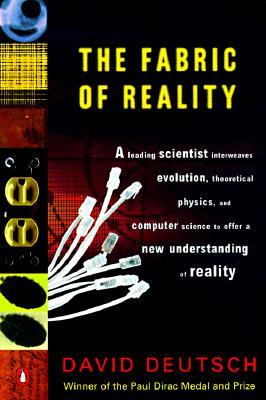
The Fabric of Reality
by
David Deutsch
Published 31 Mar 2012
They make no reference to outcomes, especially emergent ones; they merely determine the rules under which atoms and the like interact. Now, this conception of a law of nature as a set of laws of motion is relatively recent. It can, I think, be credited specifically to Galileo, and to some extent to Newton. The previous concept of a law of nature had been that of a rule stating what happens. An example is Johannes Kepler's laws of planetary motion, which described how the planets move in elliptical orbits. This is to be contrasted with Newton's laws, which are laws of physics in the modern sense. They make no mention of ellipses, though they reproduce (and correct) Kepler's predictions under appropriate conditions.

How to Read a Book
by
Mortimer J. Adler
and
Charles van Doren
Published 14 Jun 1972
Edmund Spenser (c. 1552-1599) Prothalamion The Faërie Oueene 51. * *Francis Bacon (1561-1626) Essays * Advancement of Learning * Novum Organum * New Atlantis 52. William Shakespeare (1564-1616) * Works 53. * * Galileo Galilei (1564-1642) The Starry Messenger * Dialogues Concerning Two New Sciences 54. Johannes Kepler (1571-1630) * Epitome of Copemican Astronomy * Concerning the Harmonies of the World 55. William Harvey (1578-1657) * On the Motion of the Heart and Blood in Animals * On the Circulation of the Blood * On the Generation of Animals 56. Thomas Hobbes (1588-1679) * The Leviathan 57. René Descartes (1596-1650) * Rules for the Direction of the Mind * Discourse on Method * Geometry * Meditations on First Philosophy 58.
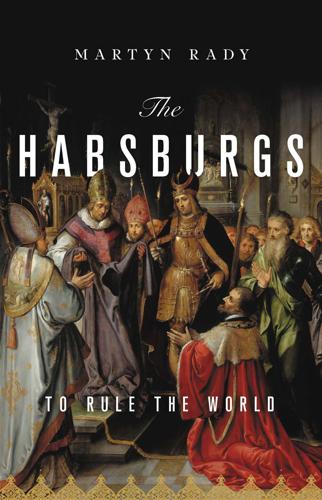
The Habsburgs: To Rule the World
by
Martyn Rady
Published 24 Aug 2020
Among these we may count the drunken medium Edward Kelley, who by the time he arrived in Prague had already had his ears cropped for the crime of counterfeiting. At the other end were genuine practitioners whose rigour in observation and experimental method provided the foundation of modern science. These included Tycho Brahe, who during his short stay in Prague (1599–1601) built an observatory to plot the movement of the stars, and Johannes Kepler, who worked as Rudolf’s principal astrologer between 1600 and 1612. Kepler’s observations yielded the earliest insights into how the planets moved within the sun’s gravitational field, and with his improved telescope he detected that Jupiter also had its own moons. Others added their own arcane knowledge to the mysteries of Hermetic magic.

Imagine a City: A Pilot's Journey Across the Urban World
by
Mark Vanhoenacker
Published 14 Aug 2022
Given the challenges of conducting research within icy cloudscapes, the best way to study the conditions that lead to snow is to replicate them in a laboratory, which Nakaya was the first to do. He grew his snow crystals not on frozen motes of sky dust, but on filaments of rabbit hair. While snowflakes had been carefully observed by Johannes Kepler, Robert Hooke, and René Descartes, it was Nakaya who developed the scientific system of snowflake classification, work that he chronicled in his seminal book, Snow Crystals: Natural and Artificial. Filled with hundreds of the loveliest photographs of snowflakes I’ve ever seen, it’s a work not only of science but of art.
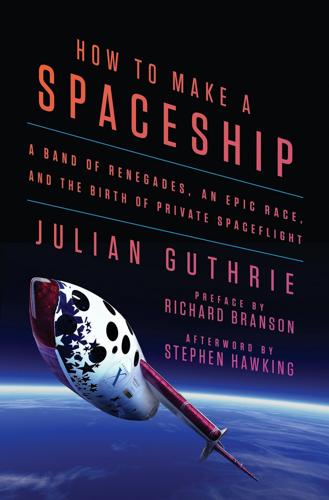
How to Make a Spaceship: A Band of Renegades, an Epic Race, and the Birth of Private Spaceflight
by
Julian Guthrie
Published 19 Sep 2016
It was after two A.M., and he and John were still talking about faith and truth seeking. John pointed out that many great scientists and engineers, including Einstein and Nikola Tesla, recognized “different kinds of truth and shifting levels of consciousness.” Famous founders of science held Christian beliefs, including Blaise Pascal (who was a Jansenist), Galileo, and Johannes Kepler. It was Einstein, John noted, who said, “Whether you can observe a thing or not depends on the theory which you use. It is the theory which decides what can be observed.” And Tesla, John continued, wrote about the relationship between matter and energy, saying: “If you want to find the secrets of the universe, think in terms of energy, frequency and vibration.
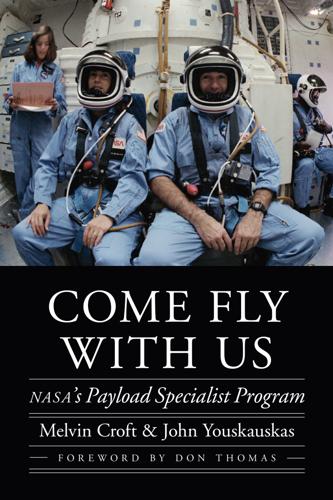
Come Fly With Us: NASA's Payload Specialist Program
by
Melvin Croft
,
John Youskauskas
and
Don Thomas
Published 1 Feb 2019
Lastly, while many of the stories told here are based on the recollections of those involved, any factual errors are ours alone. Introduction Ships and sails proper for the heavenly air should be fashioned. Then there will also be people, who do not shrink from the dreary vastness of space. Johannes Kepler At the conclusion of space shuttle Columbia’s fourth mission in July of 1982, NASA’s orbital flight test program was deemed complete and the Space Transportation System was declared operational. The crew of STS-4, commander Thomas “Ken” Mattingly and pilot Henry “Hank” Hartsfield, undertook a worldwide tour to celebrate the important milestone and to begin the outright promotion of the shuttle as a commercial, profit-making vehicle for the rapidly expanding world launch market of military, communication, weather, and Earth-monitoring satellites.
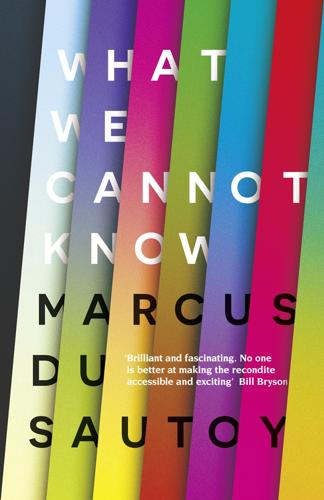
What We Cannot Know: Explorations at the Edge of Knowledge
by
Marcus Du Sautoy
Published 18 May 2016
Galileo discovered moons orbiting Jupiter and sunspots that rotated, implying that the Sun was spinning on its axis – phenomena that helped to confirm Copernicus’s model of a Sun-centred solar system. In 1663 the Scottish mathematician James Gregory realized that the telescope could also be used to make new calculations of just how far away the Sun was from the Earth. Johannes Kepler had already observed the time it takes each planet to orbit the Sun and deduced, using his laws of planetary motion, the relative distance of each planet from the Sun. His third law states that the square of the time a planet takes to complete one orbit of the Sun is proportional to the cube of the distance from the Sun.
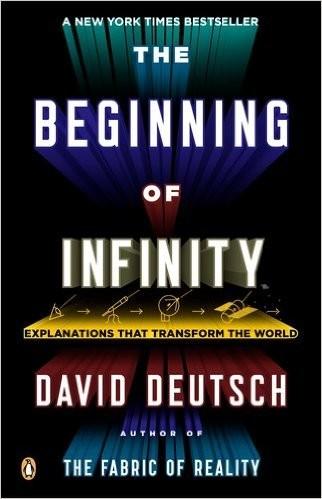
The Beginning of Infinity: Explanations That Transform the World
by
David Deutsch
Published 30 Jun 2011
For instance, Einstein’s explanation of planetary motion does not merely correct Newton’s: it is radically different, denying, among many other things, the very existence of central elements of Newton’s explanation, such as the gravitational force and the uniformly flowing time with respect to which Newton defined motion. Likewise the astronomer Johannes Kepler’s theory which said that the planets move in ellipses did not merely correct the celestial-sphere theory, it denied the spheres’ existence. And Newton’s did not substitute a new shape for Kepler’s ellipses, but a whole new way for laws to specify motion – through infinitesimally defined quantities like instantaneous velocity and acceleration.
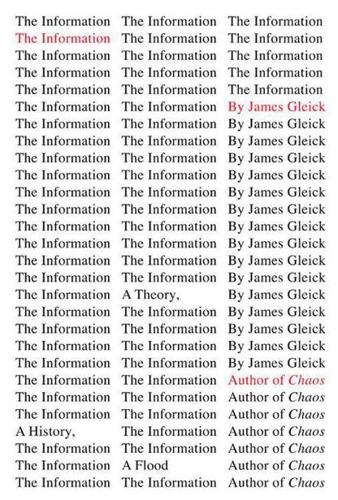
The Information: A History, a Theory, a Flood
by
James Gleick
Published 1 Mar 2011
The new technology was a watershed: “It may be here also noted that the use of a 100 pound for a day at the rate of 8, 9, 10, or the like for a yeare hath beene scarcely known, till by Logarithms it was found out: for otherwise it requires so many laborious extractions of roots, as will cost more paines than the knowledge of the thing is accompted to be worth.”♦ Knowledge has a value and a discovery cost, each to be counted and weighed. Even this exciting discovery took several years to travel as far as Johannes Kepler, who employed it in perfecting his celestial tables in 1627, based on the laboriously acquired data of Tycho Brahe. “A Scottish baron has appeared on the scene (his name I have forgotten) who has done an excellent thing,” Kepler wrote a friend, “transforming all multiplication and division into addition and subtraction.”♦ Kepler’s tables were far more accurate—perhaps thirty times more—than any of his medieval predecessors, and the accuracy made possible an entirely new thing, his harmonious heliocentric system, with planets orbiting the sun in ellipses.
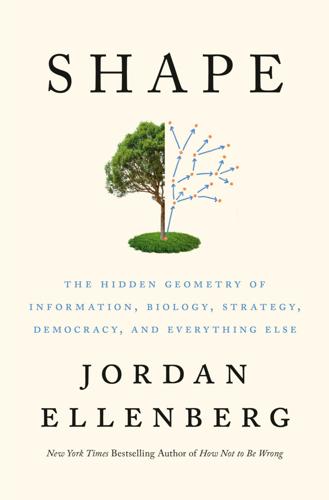
Shape: The Hidden Geometry of Information, Biology, Strategy, Democracy, and Everything Else
by
Jordan Ellenberg
Published 14 May 2021
People have been making a fuss over this number for centuries. In Euclid, the proportion goes by the more mundane name of “division into the extreme and mean.” He needed it to construct a regular pentagon, since the golden ratio is the proportion between the diagonal of such a pentagon and its side. Johannes Kepler rated the Pythagorean Theorem and Euclid’s ratio the top two achievements of classical geometry: “the first we may compare to a mass of gold, the second we may call a precious jewel.” Somewhere along the way, the ratio stopped being a jewel and started being golden; a text from 1717 says “the ancients called this section the golden one.”

From eternity to here: the quest for the ultimate theory of time
by
Sean M. Carroll
Published 15 Jan 2010
Two points deserve to be emphasized concerning the role of unobservable things in science. First, it’s wrong to think of the goal of science as simply to fit the data. The goal of science goes much deeper than that: It’s to understand the behavior of the natural world.299 In the early seventeenth century, Johannes Kepler proposed his three laws of planetary motion, which correctly accounted for the voluminous astronomical data that had been collected by his mentor, Tycho Brahe. But we didn’t really understand the dynamics of planets within the Solar System until Isaac Newton showed that they could all be explained in terms of a simple i nverse-square law for gravity.

Ghost Train to the Eastern Star: On the Tracks of the Great Railway Bazaar
by
Paul Theroux
Published 9 Sep 2008
Documents framed and hung on the wall certified that Sir Arthur had become a member of one society or another, or had won a prize – lots of these; and plaques, trophies, ceremonial knickknacks inscribed to him. His was a well-rewarded career. He was a serious scientist as well as an ambitious and imaginative writer, anticipating possible futures. It was an old tradition. Writing enthusiastically about Ray Bradbury’s Martian Chronicles, Borges claimed that Ludo-vico Ariosto and Johannes Kepler were early sci-fi dreamers and practitioners. In her memoirs, Doris Lessing (herself a science-fiction writer at times) praised science-fiction writers as visionaries. ‘Hello!’ Sir Arthur appeared in a wheelchair, the familiar, smiling, bespectacled man; upright, balding, but rather frail, even in this heat with a blanket over his skinny legs.
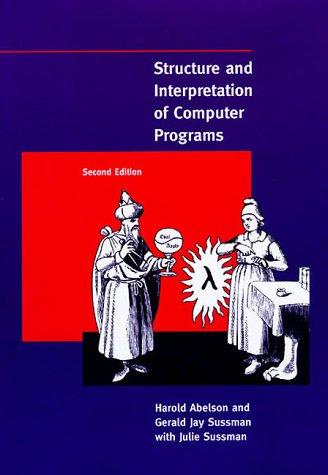
Structure and interpretation of computer programs
by
Harold Abelson
,
Gerald Jay Sussman
and
Julie Sussman
Published 25 Jul 1996
Chapter 5 Computing with Register Machines My aim is to show that the heavenly machine is not a kind of divine, live being, but a kind of clockwork (and he who believes that a clock has soul attributes the maker's glory to the work), insofar as nearly all the manifold motions are caused by a most simple and material force, just as all motions of the clock are caused by a single weight. Johannes Kepler (letter to Herwart von Hohenburg, 1605) We began this book by studying processes and by describing processes in terms of procedures written in Lisp. To explain the meanings of these procedures, we used a succession of models of evaluation: the substitution model of chapter 1, the environment model of chapter 3, and the metacircular evaluator of chapter 4.
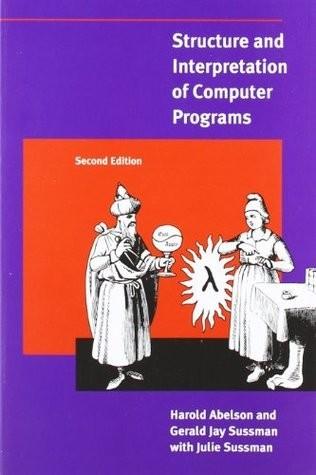
Structure and Interpretation of Computer Programs, Second Edition
by
Harold Abelson
,
Gerald Jay Sussman
and
Julie Sussman
Published 1 Jan 1984
Next: Chapter 5, Prev: 4.3, Up: 4.4.4 [Contents] Next: 5.1, Prev: 4.4, Up: Top [Contents] 5Computing with Register Machines My aim is to show that the heavenly machine is not a kind of divine, live being, but a kind of clockwork (and he who believes that a clock has soul attributes the maker’s glory to the work), insofar as nearly all the manifold motions are caused by a most simple and material force, just as all motions of the clock are caused by a single weight. —Johannes Kepler (letter to Herwart von Hohenburg, 1605) We began this book by studying processes and by describing processes in terms of procedures written in Lisp. To explain the meanings of these procedures, we used a succession of models of evaluation: the substitution model of Chapter 1, the environment model of Chapter 3, and the metacircular evaluator of Chapter 4.
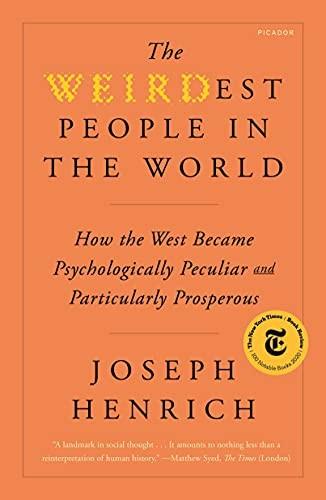
The WEIRDest People in the World: How the West Became Psychologically Peculiar and Particularly Prosperous
by
Joseph Henrich
Published 7 Sep 2020
Second, while Copernicus got the relative position of the sun correct, he assumed that the planets were in circular orbits. This mistake meant that al-Shatir’s model still made better predictions. Nevertheless, the Copernican model was published, faced off against competing models, and inspired subsequent work. Johannes Kepler, building on Copernicus’s sun-centered model, explored using elliptical orbits for the planets, and his model solidly beat all prior efforts. Naturally, Kepler believed that he’d discovered some of God’s divine laws for the cosmos. So, what was Copernicus’s big contribution?16 It seems to me that it was his willingness to go out on a limb, bucking fundamental Greek and Christian worldviews by putting the sun at the center and making Earth just another planet.

Steve Jobs
by
Walter Isaacson
Published 23 Oct 2011
He got hives, or worse, when contemplating great Apple software running on another company’s crappy hardware, and he likewise was allergic to the thought of unapproved apps or content polluting the perfection of an Apple device. This ability to integrate hardware and software and content into one unified system enabled him to impose simplicity. The astronomer Johannes Kepler declared that “nature loves simplicity and unity.” So did Steve Jobs. This instinct for integrated systems put him squarely on one side of the most fundamental divide in the digital world: open versus closed. The hacker ethos handed down from the Homebrew Computer Club favored the open approach, in which there was little centralized control and people were free to modify hardware and software, share code, write to open standards, shun proprietary systems, and have content and apps that were compatible with a variety of devices and operating systems.

Escape From Rome: The Failure of Empire and the Road to Prosperity
by
Walter Scheidel
Published 14 Oct 2019
Except for Jews and Christians, printing was banned until the early eighteenth century. Just as in imperial China, the potential for random intervention was significant. In 1580 the religious leadership persuaded the sultan to destroy a newly built observatory in Istanbul—in the same year that the king of Denmark had built one for Tycho Brahe, which was to provide Johannes Kepler with valuable data that in turn contributed to Isaac Newton’s discovery of the laws of gravity and motion. And all of these European scholars accessed information in printed works. Restraints loosened only after Napoleon’s invasion of the Middle East, as Ottoman hegemony began to erode.33 This was not a unique outcome.
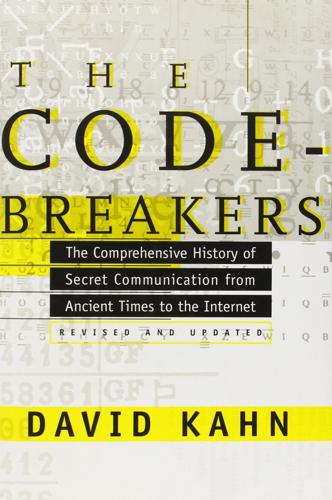
The Codebreakers: The Comprehensive History of Secret Communication From Ancient Times to the Internet
by
David Kahn
Published 1 Feb 1963
When Galileo Galilei discovered with his new telescope that Venus went through phases like the moon, thereby powerfully supporting the Copernican theory, he risked getting into serious trouble with the Catholic Church, which was soon to declare that theory heretical. Consequently he recorded his discovery as an anagram in a letter to Johannes Kepler: HAEC IMMATURA A ME JAM FRUSTRA LEGUNTUR O.Y. (“These unripe things are now read by me in vain”), with the O.Y. two letters that he could not fit in. The plaintext further hid the names of the celestial bodies under mythological allusions, referring to Venus’ character as the goddess of love, and Cynthia’s as the goddess of the moon: Cynthiae figuras aemulatur mater amorum (“The mother of love imitates the phases of Cynthia”).
…
Bars there were, but Kircher, who never shrank from bragging of what he thought were his successes, did not burst through them, for his silence on this point is eloquent. Marci wrote that the manuscript had been bought for 600 ducats by the Holy Roman Emperor Rudolf II. More of a scholar than a ruler, Rudolf founded observatories for Tycho Brahe and Johannes Kepler, established a botanical garden, and set up an alchemical laboratory to which he invited numberless scientists. The presence of the manuscript at his court in Prague was later proved by the discovery in a margin of the autograph of Johannes de Tepenecz, a Bohemian scientist who was a favorite of Rudolf.

This Sceptred Isle
by
Christopher Lee
Published 19 Jan 2012
The people who ran the Empire knew what they wanted for the coming half century. But then they knew who they were, and so did everyone else. ENDNOTES 1. Professor Chris Stringer, Department of Palaeontology, Natural History Museum, London, in Nature, 2005. 2. This has been known since the seventeenth century largely due to the work of Johannes Kepler (1571–1630). 3. Stephen Oppenheimer, The Origins of the British (London: Robinson, 2007), 197. 4. The Skara Brae settlement is an exceptional example of preserved Neolithic society. 5. Oppenheimer, The Origins of the British, 272. 6. Barry Cunliffe, Facing the Ocean: The Atlantic and Its Peoples (Oxford: OUP, 2004), 218–19. 7.

Enlightenment Now: The Case for Reason, Science, Humanism, and Progress
by
Steven Pinker
Published 13 Feb 2018
Fine-tuning is a fallacy of post hoc reasoning, like the Megabucks winner who wonders what made him win against all odds. Someone had to win, and it’s only because it happened to be him that he’s wondering in the first place. It’s not the first time that a selection artifact has fooled thinkers into searching for a nonexistent deep explanation for a physical constant. Johannes Kepler agonized over why the Earth was 93 million miles away from the sun, just right for water to fill our lakes and rivers without freezing solid or boiling away. Today we know that the Earth is just one of many planets, each at a different distance from our sun or another star, and we are unsurprised to learn that we find ourselves on that planet rather than on Mars.

A History of the Bible: The Story of the World's Most Influential Book
by
John Barton
Published 3 Jun 2019
‘He contends that reconstructing the historical context and especially the belief system of a given era is always the essential first and most important step to a correct understanding of any text’: Jonathan Israel, Introduction to Israel (ed.), Spinoza: Theological-Political Treatise, p. x. 9. Though it was anticipated by Johannes Kepler (1571–1630), who regarded the biblical texts as reflecting the thought-world of the time (and hence as offering no objection to a modern scientific understanding of the universe): see Charlotte Methuen, ‘On the Threshold of a New Age: Expanding Horizons as the Broader Context of Scriptural Interpretation’, in Sæbø (ed.), Hebrew Bible/Old Testament, vol. 2, pp. 665–90, at p. 672. 10.

How the Mind Works
by
Steven Pinker
Published 1 Jan 1997
But add a second mark, and their retinal images can be matched in two ways: spot 1 in the left eye with spot 1 in the right eye, and spot 2 in the left eye with spot 2 in the right eye—the correct matchup—or spot 1 in the left eye with spot 2 in the right eye, and spot 2 in the left eye with spot 1 in the right eye—a mismatch that would lead to the hallucination of two ghost marks instead. Add more marks, and the matching problems multiply. With three marks, there are six ghost matches; with ten marks, ninety; with a hundred marks, almost ten thousand. This “correspondence problem” was noticed in the sixteenth century by the astronomer Johannes Kepler, who thought about how stargazing eyes match up their thousands of white dots and how an object’s position in space could be determined from its multiple projections. The wallpaper stereogram works by coaxing the brain to accept a plausible but false solution to the correspondence problem. Until recently, everyone thought that the brain solved the correspondence problem in everyday scenes by first recognizing the objects in each eye and then matching up images of the same object.

EuroTragedy: A Drama in Nine Acts
by
Ashoka Mody
Published 7 May 2018
In April 2010, in a lecture to the Royal Society in London, I recalled that we owe our “contemporary way of life” to the astonishing scientific progress made during Europe’s Age of Enlightenment in the seventeenth and early-eighteenth centuries.40 That progress occurred, as economic historians have reminded us, within a politically fragmented Europe but one that was united in the marketplace of ideas.41 Indeed, political fragmentation was a source of creative energy as nations sought to gain the intellectual and scientific lead. Nations promoted and competed for the best minds. Galileo Galilei, Johannes Kepler, and Isaac Newton were among the intellectual giants. Universities, academies, and learned societies “sprang up all over Europe,” which created a ferment of innovative excitement.42 Europe was successful then as a republic of letters, not as a political organization that tried to coordinate European nations through rules and committees.
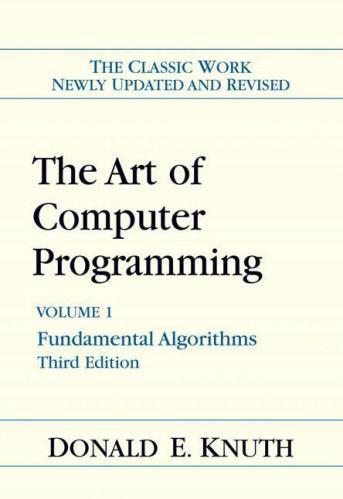
The Art of Computer Programming: Fundamental Algorithms
by
Donald E. Knuth
Published 1 Jan 1974
The number of such rhythms having n beats altogether is Fn+i; therefore both Gopala (before 1135) and Hemachandra (c. 1150) mentioned the numbers 1, 2, 3, 5, 8, 13, 21, ... explicitly. [See P. Singh, Historia Math. 12 A985), 229-244; see also exercise 4.5.3-32.] The same sequence also appears in the work of Johann Kepler, 1611, who was musing about the numbers he saw around him [J. Kepler, The Six-Cornered SnowBake (Oxford: Clarendon Press, 1966), 21]. Kepler was presumably unaware of Fibonacci's brief mention of the sequence. Fibonacci numbers have often been observed in nature, probably for reasons similar to the original assumptions of the rabbit problem.
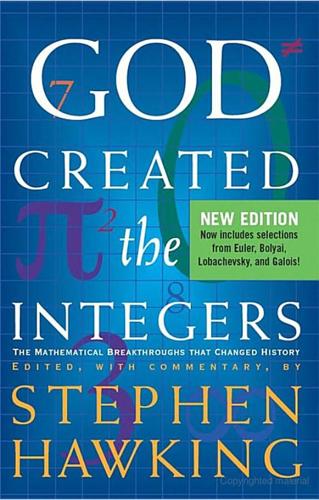
God Created the Integers: The Mathematical Breakthroughs That Changed History
by
Stephen Hawking
Published 28 Mar 2007
Only long after Newton died did it become apparent that his interest in chemical experiments was related to his later research in celestial mechanics and gravitation. Newton had already begun forming theories about motion by 1666, but he was as yet unable to adequately explain the mechanics of circular motion. Some fifty years earlier, the German mathematician and astronomer Johannes Kepler had proposed three laws of planetary motion, which accurately described how the planets moved in relation to the sun, but he could not explain why the planets moved as they did. The closest Kepler came to understanding the forces involved was to say that the sun and the planets were “magnetically” related.

Europe: A History
by
Norman Davies
Published 1 Jan 1996
The Copernican theory gestated for almost a century. The Dane Tycho Brahe (1546–1601) rejected heliocentrism; but through observing the pathways of comets he destroyed another ancient misconception, namely that the cosmos consists of onion-like crystalline spheres. Brahe’s colleague in Prague, Johann Kepler (1571–1630), established the elliptical shape of planetary orbits, and enunciated the laws of motion underlying Copernicus. But it was the Florentine, Galileo Galilei (1564–1642), one of the first to avail himself of the newly invented telescope, who really brought Copernicus to the wider public.